The REDcycle crisis that never was
By Justin Bonsey
FEW events in waste have captured our attention in recent months like REDcycle’s suspension of soft plastic collections. What the Sydney Morning Herald, The Age and others have dubbed a ‘collapse’ has been variously referred to as a ‘crisis’, ‘debacle’, ‘shock’ and a ‘botched plastic bag recycling program’.
Such myopic interpretations of what is effectively a common value chain disruption to a much-loved cultural institution belie the reality that REDcycle was always the oddsagainst underdog subbing in to do what plastic packaging producers, importers, and retailers – with or without a government mandate – should do as part of a responsible business model: ensuring the cost of doing business is not externalised onto the environment, communities or government.
Putting into perspective the scale of our disproportionate distraction: REDcycle, a small social enterprise, collected only 7,000 tonnes of soft plastics per year, or about three per cent of the roughly 250,000 tonnes
used in Australia annually. Soft plastics constitute about 10 per cent of our plastic waste, of which only 13 per cent is processed for recycling and, presumably but not necessarily, recycled into products. This means that the volume of soft plastics at large represents just under 0.01 per cent of Australia’s 75.8 million tonnes per annum of waste. Of this, there has been market demand for only a small fraction of REDcycle’s collected volumes, leading to warehouses of stockpiled plastics (which may still find a future market). Flipping the maths, we’re many thousands of times more worried than we need to be – and we’re looking in the wrong direction.

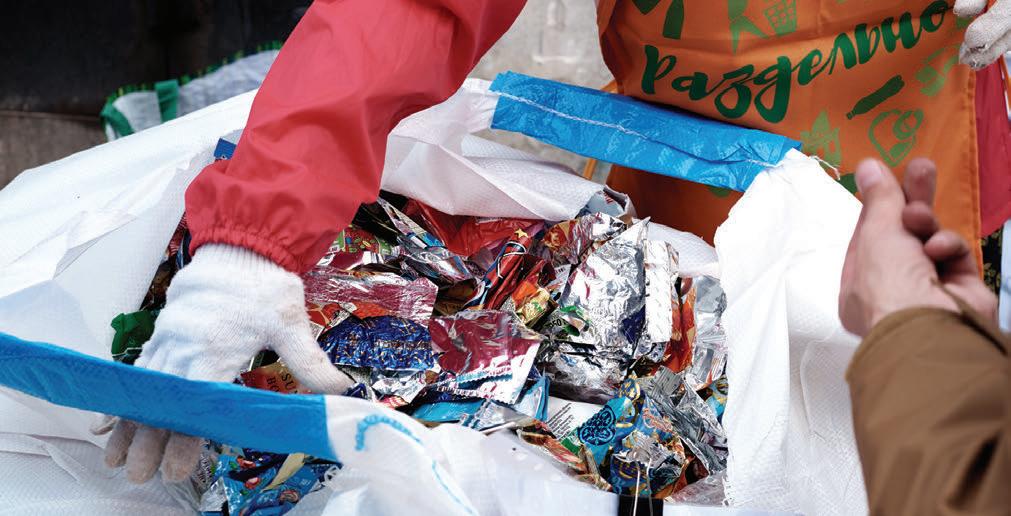
This is not to diminish the extraordinary achievement of REDcycle and its partners in setting up a popular drop-off, logistics, and market-making opportunity for highly contaminated, hard-to-recycle, mixed-polymer plastics that no one else wants. Rather, it is to illustrate the absurdity of bemoaning one small piece of a larger puzzle whose true crisis stems from the supply chain, politics, and a tradition of prioritising short-term profit over
long-term distributed benefits. A classic case of polishing the Porsche while the elephant in the room ravages the house behind us, or painting a collapsing hovel in glittering gold.
But a crisis, real or perceived, is a terrible thing to waste, so let’s embrace it as a trigger for refocusing our attention from the comforting bastion of resource recovery to the higher-order principles of a circular economy, the true ESG opportunities that are just beginning to emerge.
Two heartening trends to emerge from the somewhat histrionic media response and subsequent community outcry have been an underlying devotion for soft plastic drop-off akin to that of a cultural institution, and that the rug of soft plastic complaisance has been pulled out from under us, leaving us squinting into the post-BAU glory of possibilities for a top-down strategically co-ordinated whole-of-value-chain approach. This has started to clear the way for the bigger-picture thinking we desperately need to not just stop the bleeding but to heal the wound.
(Continued on page 21)
ONE of the seminars at the recent Waste Expo held in Melbourne was entitled Key Waste Issues and Strategy 2022 and Beyond. Facilitated by TOMRA Cleanaway Communications and Engagement manager, Michelle Mandl-Keating, the panel took a deep dive into some of the key issues in the waste industry that will need addressing over the next 12 months.

One of the panellists was Jared Smith, a waste and sustainability engineer from the Torres Strait Island Regional Council. Smith has a whole list of challenges that he takes into consideration when thinking about the future, mainly because of the geographic outlay of his work area, which comprises 16 inhabited islands and more that 250 uninhabited locales.
The islands cover more than 42,000 square kilometres from the northern tip of Australia’s Cape York to within the reaches of Papua New Guinea. Although the population is relatively small compared to other places, the logistics involved in taking care of the island’s waste needs are eye-opening.
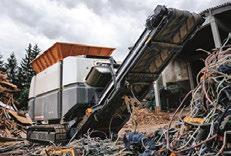

“Being island communities, we replicate several services,” Smith said. “There are 15 different water treatment plants and wastewater treatment plants. We also replicate waste management, which is quite limited at this point. We have faced some significant challenges as you can imagine – logistics are very complex when you’ve got 15 different communities.”
Due to the proximity to Papua New Guinea, the Torres Strait Islands are in a protected biosecurity zone, which produces another set of challenges for Smith and his team.
(Continued on page 24)
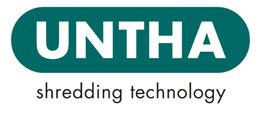
ISSUE 112 | FEB/MAR 2023
26 Driving resource recovery 41 Soft plastics solution 52 Equipment news Meet the ZR - Low speed. High torque. Maximum performance. Visit a reference site | Book a trial | Request a free waste audit | info@focusenviro.com.au Planning now for a better tomorrow PP: 100024538 ISSN 1837-5618
3-Stage Grinding Process
Provides Faster Reduction
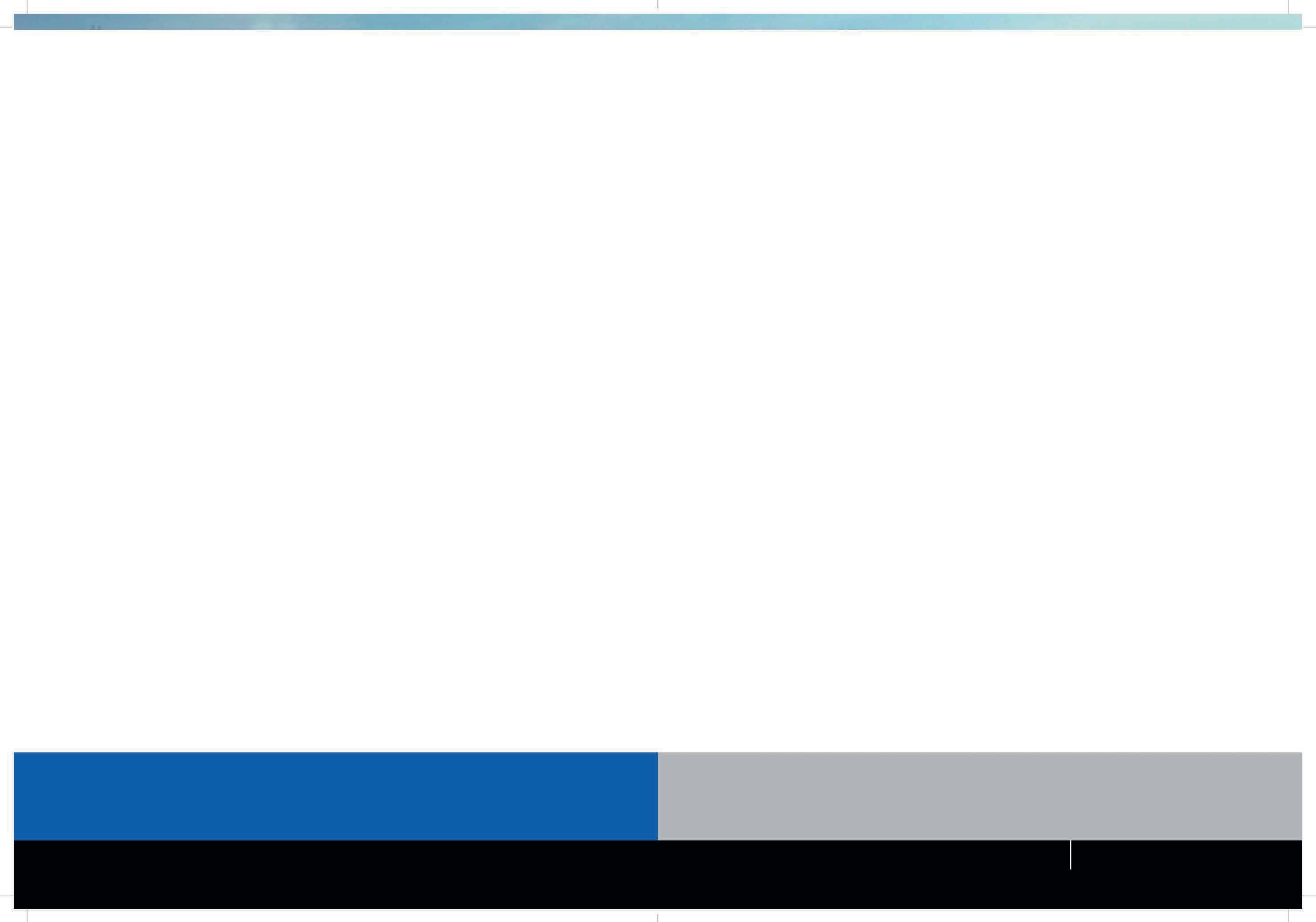
Astec - Peterson's powerful up-turn 3-stage grinding process provides better fracturing of material and a more consistent product, giving you just the product your buyers are looking for.
The Impact Release System
Protects Your Investment
Astec - Peterson's patented Impact Release System's air bags provides uniform grinding and protection from contaminated feedstock, a feature unique to Astec - Peterson grinders.
The Impact Cushion System
The Second Line of Defence
Urethane cushions and shear pins help protect the mill from catastrophic damage in the event of a severe impact from contaminants in the feedstock.
Astec - Peterson offers horizontal grinders from 433-839 kW, offering grinding solutions with output at the lowest cost per ton. Visit us at www.astecindustries.com and see why we have been leading the industry for over 35 years!
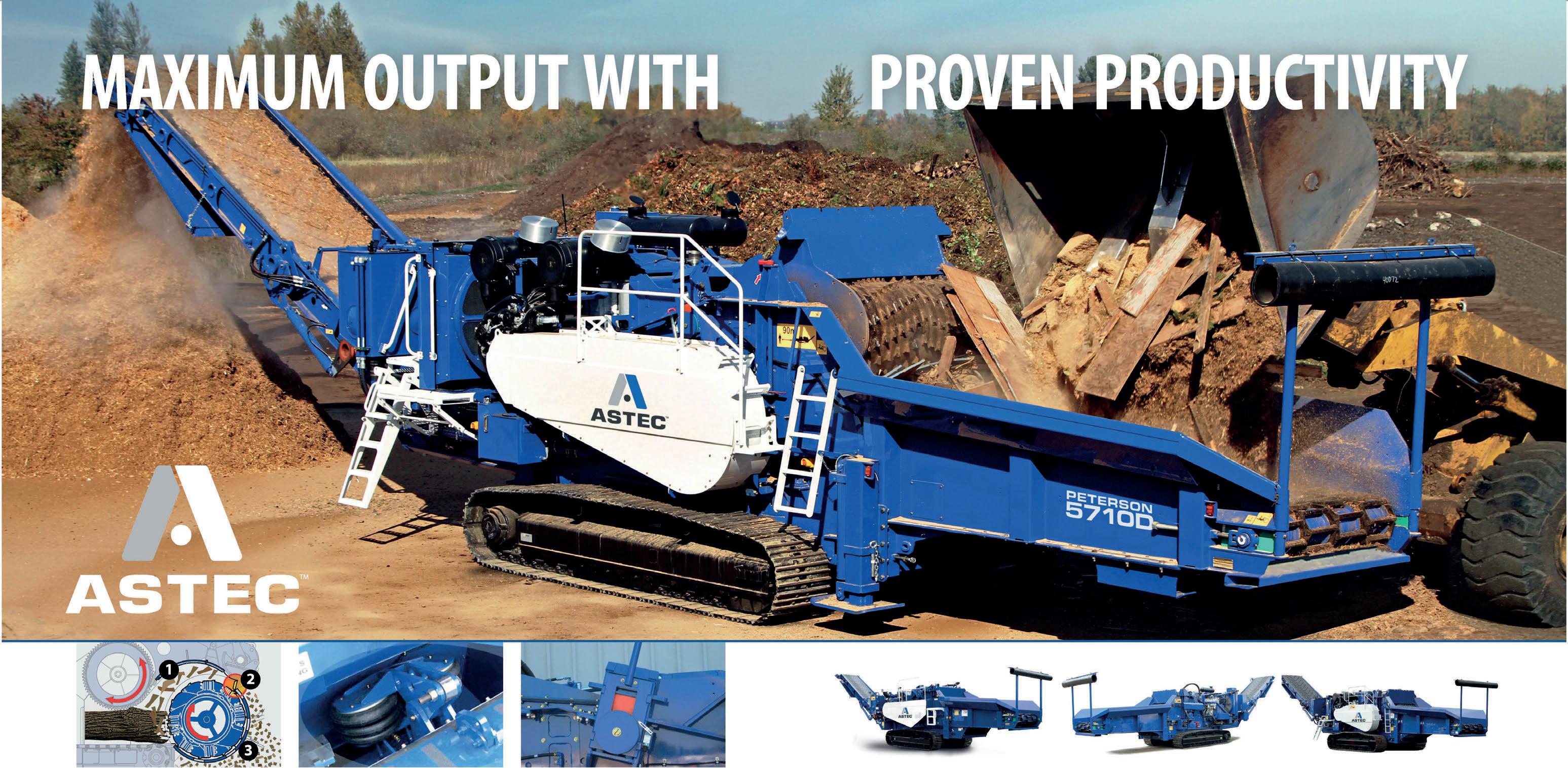
www.komatsuforest.com.au
Land clearing, mulch, compost, asphalt shingle tiles, scrap wood, biomass, green waste-we can handle it am
2710D Horizontal Grinder
Portable 6 Efficient
Engine 433 kW or 570 kW
Length 1612 cm
Weight 30900 kg
Feed Opening 153 x 81 cm
5710D Horizontal Grinder
High Production with Consistent Sizing

Engine 722 kW
Length 1800 cm
Weight 42184 kg
Feed Opening 152 x 102 cm
Astec - Peterson is represented by Komatsu Forest in Australia and New Zealand, providing industry-leading product support and expertise.

6710D Horizontal Grinder
Largest Grinder with Highest Output
Engine 839 kW
Length 1860 cm
Weight 48987 kg
Feed Opening 168 x 127 cm
Komatsu Forest Pty Ltd.
11/4 Avenue of Ame ricas
Newington NSW 2127 Australia
T: +61 2 9647 3600
E: info.au@komatsuforest.com
Ltd
Komatsu Forest Pty
Why words matter
PERCEPTION is an interesting word. How one person sees a situation compared to another can sometimes be subjective. On other occasions, not so much.
The Oxford dictionary defines collapse as “to fall down or fall in suddenly, often after breaking apart”. The word postpone is defined as “to arrange for an event to take place at a later time or date”. Two words miles apart in meaning. This brings me to REDcycle, the soft plastics collection program that was recently postponed.
The number of times mainstream media used the word “collapse” regarding the “postponement” of the REDcycle program has been astounding.
This is no shoddy operation run by ne’er-do-wells hiring out warehouses, filling them with waste, taking the money, and then doing a runner. Those running REDcycle – supported by the two biggest supermarket chains in the country – are a group of passionate resource recovery professionals who are determined to find a solution to one of the smaller but most troublesome waste streams. To undermine all their hard work in the eyes of the public is not only insidious, it’s also unfair.
I guess those who run the recycling program forgot their soothsayers’ hats and should have known that the Close the Loop facility in Melbourne would burn
Chief Operating Officer
Christine Clancy christine.clancy@primecreative.com.au
Managing Editor Mike Wheeler mike.wheeler@primecreative.com.au
Business Development Manager
Chelsea Daniel-Young chelsea.daniel@primecreative.com.au
Design Production Manager Michelle Weston michelle.weston@primecreative.com.au
Design
Blake Storey, Kerry Pert, Tom Anderson
Client Success Manager Glenn Delaney glenn.delaney@primecreative.com.au

Head Office Prime Creative Pty Ltd 379 Docklands Drive Docklands VIC 3008 Australia p: +61 3 9690 8766 enquiries@primecreative.com.au www.insidewaste.com.au
down, causing a backlog of feedstock. However, the bigger problem is that Australia lacks enough infrastructure to deal with the issue. At least two companies are building infrastructure to alleviate that.
One company has imported machinery capable of converting soft plastics back into oil which will be reused in various ways. The machine can convert five tonnes a day. The company will scale up to an even bigger device if all goes well.

Then there is Licella, which has permission to build a plant in Victoria, which will be able to process 70,000 tonnes of plastics a year soon after commissioning. It will quickly scale up to produce 120,000 tonnes a year of oil. Not only will it do away with soft plastics, but it will create an environment where less virgin plastic is needed.
When you look at the two operations, the 8,000 tonnes of material found in warehouses throughout NSW and Victoria is minuscule. In fact, these two companies may be competing for limited feedstock soon after operations begin.

REDcycle is far from dead and buried. Should there be a debrief and look to find the lessons learned? Absolutely. But to say REDcycle has ‘collapsed’ is not only an exaggeration, it’s simply not true.
Subscriptions +61 3 9690 8766
subscriptions@primecreative.com.au
Inside Waste is available by subscription from the publisher. The rights of refusal are reserved by the publisher
Articles
All articles submitted for publication become the property of the publisher. The Editor reserves the right to adjust any article to conform with the magazine format.
Copyright
Inside Waste is owned by Prime Creative Media and published by John Murphy.
All material in Inside Waste is copyright and no part may be reproduced or copied in any form or by any means (graphic, electronic or mechanical including information and retrieval systems) without written permission of the publisher. The Editor welcomes contributions but reserves the right to accept or reject any material. While every effort has been made to ensure the accuracy of information, Prime Creative Media will not accept responsibility for errors or omissions or for any consequences arising from reliance on information published. The opinions expressed in Inside Waste are not necessarily the opinions of, or endorsed by the publisher unless otherwise stated.
Call: 03 9706 8066 Email: sales@appliedmachinery.com.au Visit: www.appliedmachinery.com.au or www.genoxmachinery.com.au
THINKING.
new J-Series pipe shredder is specificially designed for HDPE plastic pipes.
a unique multi-rotor design and long life counter knives, it quickly shreds different diameter and sized pipes. Like all Genox equipment it comes with the support and back up that only a true local machinery partner can provide. Daily news updates at www.insidewaste.com.au Editor’s Note // 4 INSIDEWASTE FEBRUARY/MARCH 2023
GENOX’S NEW SHREDDER IS A PLASTIC PIPE’S WORST NIGHTMARE. THAT’S
APPLIED
Genox’s
With


Millions of dollars secured to get better deal on waste
RATEPAYERS in New South Wales will benefit from a NSW Government program that could save councils an estimated $170 million annually on kerbside bin collection and other waste services via joint waste contracts, according to Local Government NSW.

Environment Protection Authority (EPA) Chief Executive Officer Tony Chappel announced the launch of the $16 million service that will help NSW councils join forces and find waste providers who deliver the best value for communities and focus on driving forward the circular economy.
“Councils are at the frontline of waste management in NSW, spending around $1.7 billion each year on waste and recycling services,” Chappel said. “The EPA’s
new service will support councils around the state to work together to get the most competitive deal, driving down council costs and ensuring ratepayers get the best value for money.
“Finding the best deal on these services can be difficult, especially for councils with small budgets, but our new program will help councils compare waste providers and provide a ‘one-stop-shop’, with a dedicated team providing tailored assistance.”
Chappel said that by lowering costs and simplifying the process, councils can focus their energy on reducing waste in their communities, which in turn, contributes to the circular economy and helps meet a target of net-zero emissions by 2050.”
The new service is part of a $356 million Waste and Sustainable Materials Strategy, which outlines the actions that will be taken to transition towards a circular economy.
From 30 January 2023, councils will have access to the joint procurement service, including:
• a funding pool of up to $500,000 per group to help councils access the best advice to jointly procure services
• an information service via the NSW EPA website to equip councils with quality and timely market data and analysis to help make informed decisions

• an online library of training and guidance materials so councils can navigate complex contract challenges.
Chappel said joint waste contracts can help councils to strategically plan their waste service delivery and infrastructure, ease transaction costs and streamline administrative processes.

ANNEXURE A
Cobra Group convicted and penalised for the contravention of a condition of its environment protection licence
On 2 September 2022, The Cobra Group (Aust) Pty Ltd (Cobra Group) was convicted by the Local Court of an offence against s 64(1) of the Protection of the Environment Operations Act 1997 (the Act) for the contravention of a condition of its environment protection licence. Cobra Group holds an environment protection licence authorising it to carry out certain waste activities at a facility in St Marys. The licence contains a condition limiting the amount of waste that can be received and processed at the facility to 10,000 tonnes per year. The NSW Environment Protection Authority (EPA) reviewed the waste contribution monthly reports submitted by Cobra Group to the Waste and Resource Reporting Portal. The data showed that 21,706.46 tonnes of waste was received, and 21,295.85 tonnes of waste was transported from the facility between 19 September 2020 and 18 September 2021.
The EPA prosecuted Cobra Group in Mt Druitt Local Court. The Court convicted the company of one offence against s 64(1) of the Act and ordered it to:
1. Pay a fine of $55,000.00;
2. Pay the EPA’s legal costs of $13,000; and
3. Publish this notice at its own expense.
Daily news updates at www.insidewaste.com.au 6 INSIDEWASTE FEBRUARY/MARCH 2023 News // If you wish to let our readers know your latest machinery and its capabilities, then you should be in Inside Waste’s Product Profile section. GET YOUR PRODUCT PROFILE IN NOW! For more information on how to make the most of this opportunity contact Chelsea Daniel-Young: Email: Chelsea.daniel@primecreative.com.au Ph: 0425 699 878
The new service is designed to get ratepayers the best value for money.


LGA of SA lobbies for changes in asbestos guide
THE LGA of SA has successfully advocated for changes to the Federal Government’s asbestos guide for local councils following sector-wide consultation.
In September, the LGA went out to the sector to consult on a guide to combat the illegal dumping and improper disposal of asbestos.
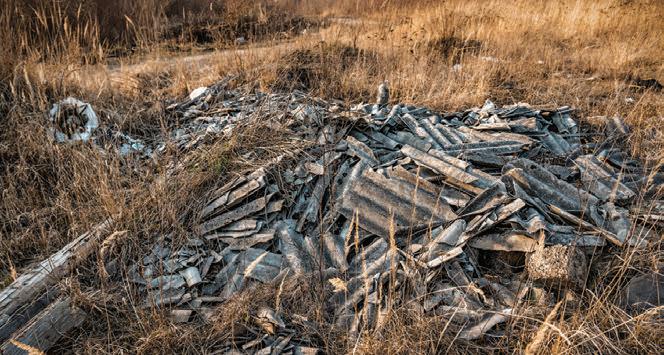
Following this consultation, the LGA made a submission to the Federal Government to improve the guide for local councils. The Asbestos Safety and Eradication Agency have made changes based on the recommendations the LGA put forward.
A summary of the changes lobbied for by LGA of SA include:
• The guide has been split into two parts: the guide and supporting
information. The guide now clearly outlines the obligations of councils to have asbestos management and gives advice on how councils can deliver their obligations.
• It also indicates the importance of engaging licensed asbestos professionals in each of the three asbestos waste journey zones: awareness, removal, and disposal.

• The sustainability and resourcing for programs has been recognised as a significant challenge for councils. The Principles for Developing Actions (in the guide) and the Strategy Design Process (in the supporting information) provide suggestions for addressing these challenges.
The guide is now more accessible and has a clear call to action –to take action to address illegal disposal of asbestos. Councils are also encouraged to link to asbestos. sa.gov.au as the single-source for the most up-to-date information. The benefits of collaboration have also been made clearer by the inclusion of more case studies to help encourage more knowledge
sharing and setting out clear demonstrable paths of action.
The documents are intended to help councils consider new ideas and explore opportunities to help combat the illegal disposal of asbestos. The Asbestos Safety and Eradication Agency intend to update these resources as new actions, innovations, and best practice examples arise.
Daily news updates at www.insidewaste.com.au 8 INSIDEWASTE FEBRUARY/MARCH 2023 UP TO 12 FRACTIONS IN A SINGLE SPOT FEEDING BUNKER CONVEYOR 1: DOCKING STATION CONVEYOR 2: DOSING CONVEYOR MAGNETIC SEPARATOR VIBRATORY FEEDER SENSOR BOX ROBOTIC SORTING LINE 1, 2, 3 ROBOT ARMS STANDALONE ROBOT SORTING STATION Fully automated and independent waste sorting station: www.terex.com/zenrobotics This turnkey solution is the fastest and easiest way to get all the benefits of AI-powered sorting at a low operation cost. LOW OPERATION COST RUN UNMANNED EASY TO OPERATE SAFE SORTING UP TO 6900 PICKS PER HOUR
News //
Changes have been made to the asbestos guide for local councils.
AWRE expands footprint and Summit in 2023
THE Australian Waste and Recycling Expo (AWRE) will be back in July 2023 with an expanded schedule including the popular Resource Recovery Summit, getting a whole day of exposure compared to the half day it got at the 2022 event.
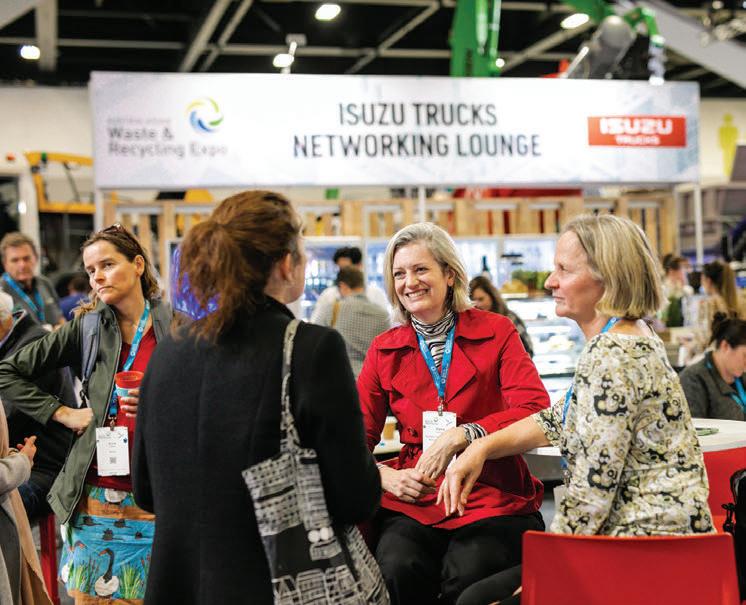
Sofie Teh is the product manager of AWRE and Circularity for Diversified Communications, the event organiser. The expansion of the Resource Recovery Summit is due to the popularity of the inaugural event.
“It was sold out and was a great success,” she said. “The AWRE exhibition is fantastic and is a great showcase of products and services within the industry, we also recognise that the industry wants to have a platform for discussion, which is what the Summit provides.”
Teh said it allows a forum to discuss the current state of the waste and resource recovery industry and look at the roadblocks to achieving a sustainable resource recovery system.
The aim of the Summit is to provide a platform to get these key decision makers and industry involved to ‘beat the drum’ on the topic at a national level, as well as trying to get more
government involvement and action in the issue.
Call for speakers for the Seminar Series and Summit is currently open, and more information can be found on the AWRE website.
AWRE will have a couple of new areas of focus including the Recycled Zone showcasing end products that have been produced using recycled materials. In 2022 there was also an Innovation Zone and Pitch Fest, and like the Summit this will return bigger and better due to popular demand. To cap it off, the AORA Zone returns with a focus on organics.
What pleased Teh about the past event was the high number of attendees. There were also a number of interstate and international visitors to AWRE, which was unexpected due to the country only recently coming out of lockdown from COVID-19.
Teh is looking forward to the event, which will again be held at Sydney’s ICC in Darling Harbour from July 26-27. Already some major industry players have signed up for the event including the likes of ISUZU, Liebherr, Komptech and Method Recycling.
Get in touch to find out more or visit awre.com.au

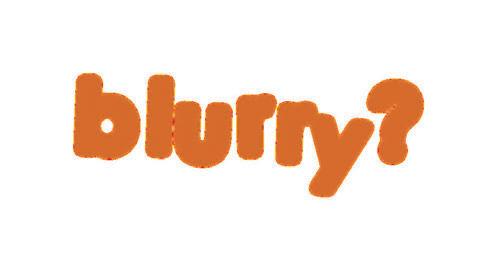

Daily news updates at www.insidewaste.com.au FEBRUARY/MARCH 2023 INSIDEWASTE 9 // News
Is your Cooee intuitively captures real-time data, saving time and money with easy reporting via customisable dashboards. Accurate data drives good decisions, so you can check waste quantities and revenues at a glance, seamlessly manage tip passes and even work in off-line environments. Call us on 0447 393 363 or visit us at cooeedata.com We can help for small to medium landfills and transfer stations Get clarity with Cooee
The AWRE Resource Recovery Summit has been extended to a full day in 2023.



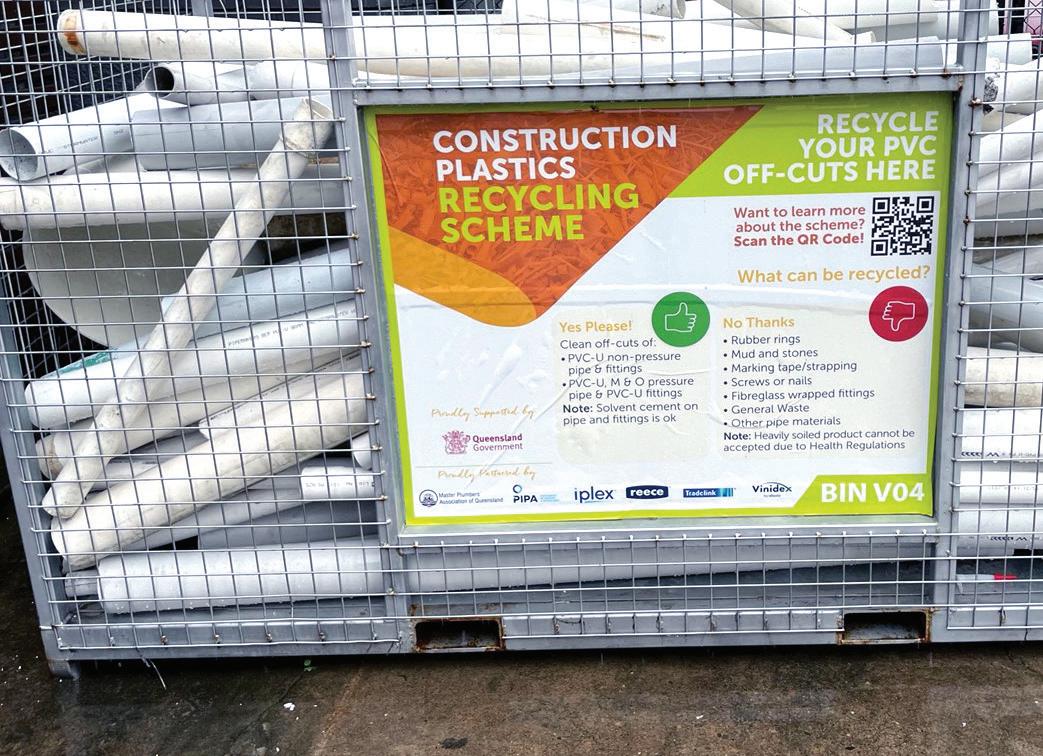
Nappy Loop to recycle used nappies
HUGGIES nappies’ manufacturer, Kimberly-Clark, has announced a new Nappy Loop recycling trial that could be Australia’s answer to the 1.5 billion disposable nappies that end up in landfill each year.
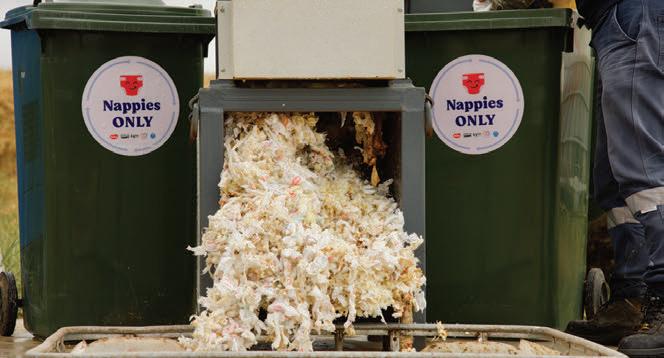
With approximately 300,000 babies born in Australia annually, and about 95 per cent of them wearing disposable nappies, the trial called The Nappy Loop has been underway in South Australia since July 2022. It uses anaerobic digestion to turn the organic materials in used Huggies nappies into nutrient-rich compost, as well as bioenergy that is captured and used to power the recycling process.

The Nappy Loop team is being led by Kimberly-Clark Australia, along with Australia’s national science agency, CSIRO South Australian composter, Peats Soils and Garden Supplies, Solo Resource Recovery, and early learning and care provider G8 Education. Together, the team has collected and recycled almost two tonnes of used Huggies nappies, proving that anaerobic digestion is a viable option for the recycling process.
“As Huggies is the most popular nappy brand in Australia, we not only set the standards in baby care, our goal is to set the standards for our industry in sustainability too,” said Kimberly-Clark ANZ Managing Director, Belinda Driscoll.
“Identifying a recycling solution that works hasn’t been easy due to the availability of technology and collection systems.”

The Nappy Loop trial has
adopted a B2B model, with Solo collecting used Huggies nappies from G8 Education’s Welly Road Early Learning Centre in Mount Barker and delivering them to the Peats composting facility for processing. Utilising anaerobic digestion, the organic material in the used nappies is transformed into nutrient-rich compost while the plastic components are separated and evaluated for future recycled products. In addition, the anaerobic digestion process creates bioenergy which is captured and used to power the Peats composting facility.
“CSIRO is working with KimberlyClark Australia to provide scientific validation of The Nappy Loop pilot to help tackle waste,” said CSIRO’s Principal Research Scientist Dr Anu Kumar. “Our research for this Australian trial will help inform the team on the potential scaling of the program to help reduce the number of nappies ending up in landfill.”
“Anaerobic digestion is a growing area of focus and possibility in Australia,” said Peats Soils and Garden Supplies’ Managing Director, Pete Wadewitz. “The process has been used successfully in Toronto, Canada to recycle disposable nappies and we are excited to be introducing this innovative approach in the Southern Hemisphere as we work to solve the nappy waste issue.”
After five months of recycling used nappies, The Nappy Loop team is now exploring the opportunity to scale the program in South Australia and nationally.
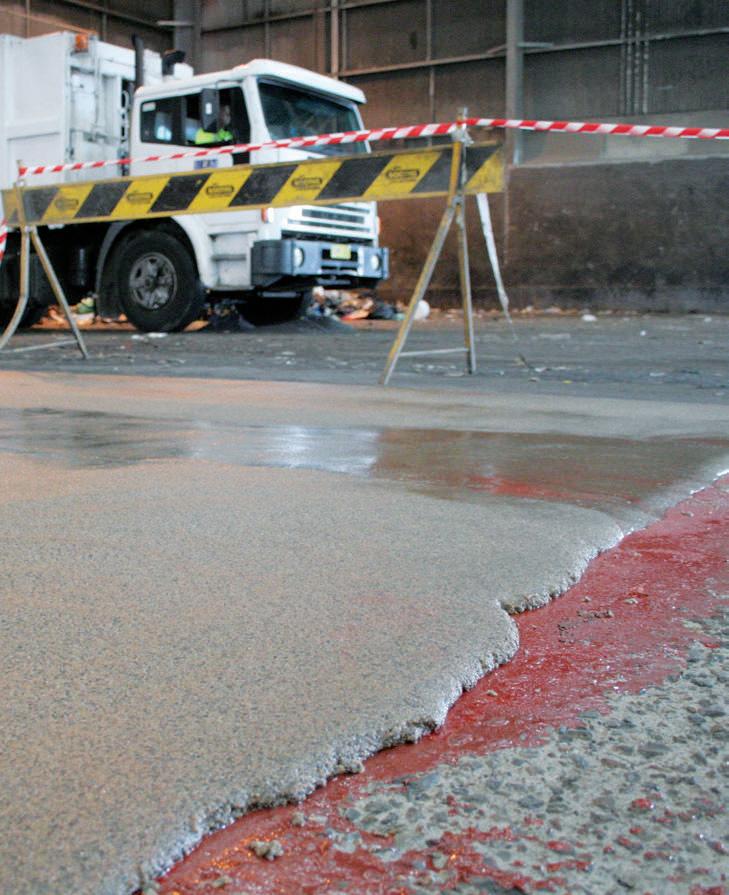
Daily news updates at www.insidewaste.com.au FEBRUARY/MARCH 2023 INSIDEWASTE 11 // News
Heavy duty floor topping & repair system for waste handling sites Call us for more information NO DOWNTIME FLOORING 02 8840 8888 enquiries@ascoatings.com.au | www.ascoatings.com.au > Leachate Resistant > Industrial Strength > High Impact Rating > Rapid Cure Times > Joint Repairs AS/NZS 4801
Nappy Loop uses anaerobic digestion to turn the material into nutrient-rich compost.
Process Innovations and Resource Recovery
As part of the APR Kerbside MRF upgrade, works are underway to integrate an automated robotic sorting solution. This technology will allow for picking off Tetra Paks (liquid paperboard cartons) that are currently not being captured from the container line.
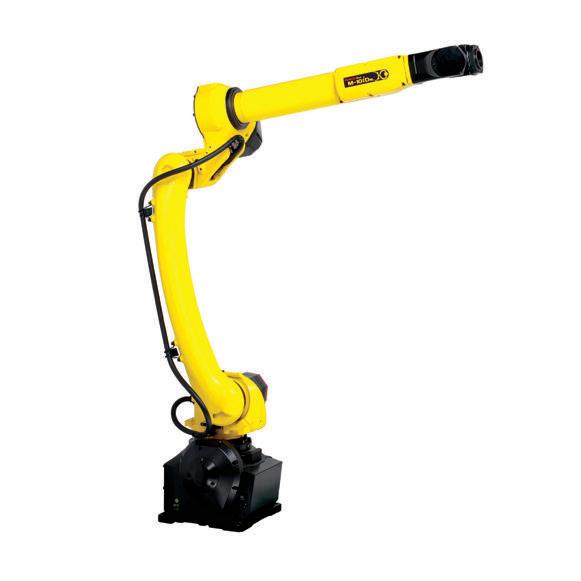
The robotic system has the projected capability to remove nearly 1500 Tetra Pak cartons per hour from the recycling stream. These resources will be diverted from landfill with a capture rate and precision that is industry leading.
Once diverted from the remaining streams, the Tetra Pak’s will be processed and recycled for use in SaveBOARD. The shredded materials can be used for up-cycling into building materials for low carbon building products such as lining board applications (plasterboard, cladding and acoustic boards). Being made from 100% recycled waste provides a circular solution.
The APR team are strongly focused on circularity and working in collaboration with industry partners to explore and seize opportunities that will maximise resource recovery and further divert waste from landfill.
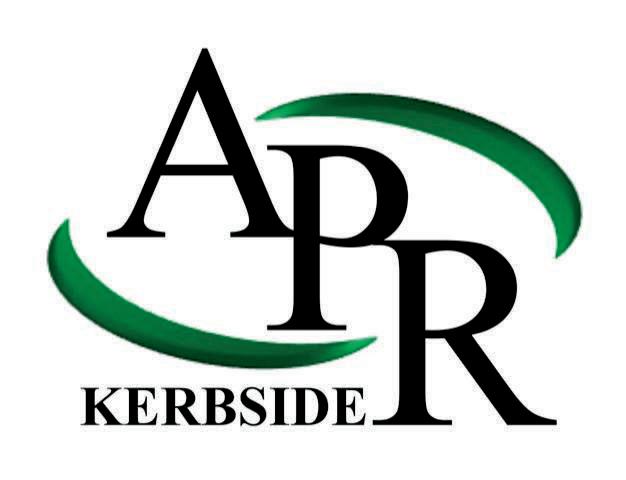
After glass, soft plastics was identified as the biggest contaminant of kerbside, yellowlidded bins in Victoria. As an innovative company, the APR Group continuously looks for different ways to achieve and support zero waste strategy goals and give the end user a quality material with minimal contaminants.
Trials for the advanced recycling solution that APR Plastics have brought to market has proven successful to date and resulted in the conversion of the soft plastics into feedstock oil.

Future plans include:
Up-scaling for increased capacity with a 5 tonne machine in the near future Commissioning of a 100 tonne unit to enable processing of even larger volumes Consulting and working in closely with the supply chain, industry partners, government, certification and peak regulatory bodies to collaborate on future collection schemes, processing capabilities and end markets.
APR Kerbside Pty Ltd 9 Felstead Drive Truganina VIC 3029
Delivering Innovation to
Kerbside Recycling
Regardless of what stage your municipality is at in the roll-out of the purple-lidded glass recycling bin, APR Kerbside has proven solutions and alternative options that can assist Councils whilst they prepare to make the switch.
For Municipal Councils that have partnered with APR Kerbside in the Glass-out program, their recyclables are now being received with less than 1% glass. These remarkable results have directly contributed to reducing contamination levels and further diverting waste from landfill. Improving the separation of household recyclables and having no glass in the kerbside commingled stream has led to a significant improvement in the quality of all recyclables.
Key learnings and invaluable experience gained throughout the program well positions APR Kerbside to best support the needs of Municipal Councils who are preparing to implement 'glass out' of the commingled stream, transition smoothly and re-educate residents.
Such benefits include:
Eliminate the issue of glass shards that get into all the other recyclables
and resources such as paper, cardboard, plastic and aluminium market outlets for recyclable products due to glass shards
Significantly recover more recyclable materials Reduce contamination levels and further divert waste from landfill Address and combat the limitations presented to approachable end

Increase the value of recyclables and quality of end product
The value-added sorting facility site has the capability to process:
Recyclables from Metropolitan Melbourne and Regional councils that have removed glass out of their yellow-lidded recycling bins
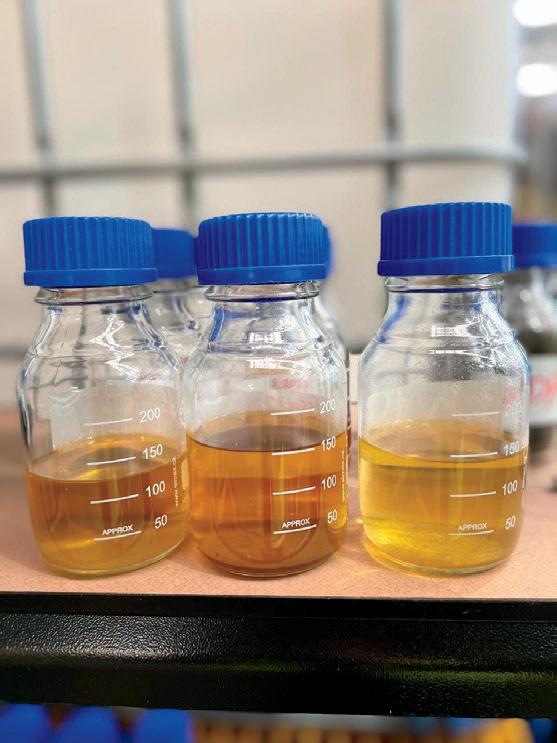
Paper and Cardboard
Plastics such as HDPE, PET, PP and Soft Plastics

1800 277 800 www.aprkerbside.com enquiry@aprkerbside.com.au
Cleanaway applies to allow PFAS to be landfilled
THE Environment Protection Authority (SA EPA) will undertake formal community consultation on an application to allow PFAScontaminated waste to be disposed of at the Cleanaway Inkerman landfill, north of Adelaide.
Waste Management Pacific SA (Cleanaway) applied to the EPA to add pre-treated PFAS-contaminated solid waste — certified to contain less than 50 mg per kilogram of per- and poly-fluoroalkyl substances (PFAS) — to its existing EPA landfill licence at Inkerman.

Cleanaway’s application is the second received by the EPA since it released the landfill disposal criteria for PFAS-contaminated waste in 2020.


The EPA refused a previous application at McLaren Vale in
2021 due to the location; the fractured rock aquifer beneath the site meant that any failure of the landfill liner would have been difficult to contain and would rely upon immediate intervention.
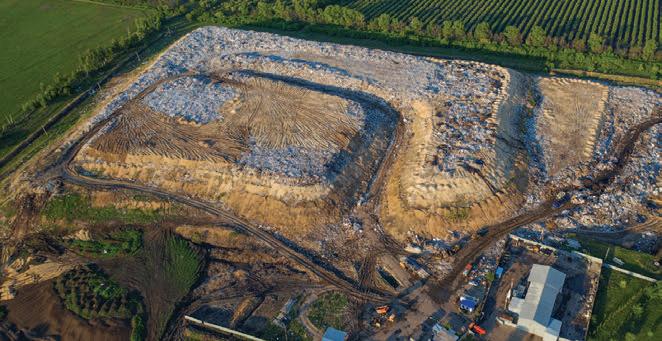
The SA EPA has since undertaken further work regarding the broader policy and operational management of PFAS-contaminated waste in South Australia, including developing draft site selection factors specific to South Australia to assist the assessment of applications.
These guidelines are being finalised in preparation for community consultation in early 2023.

All landfills are likely to contain PFAS-contaminated waste from everyday household products. However, remediated
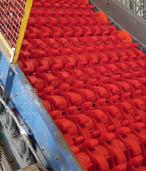


waste soils from a known PFAScontaminated site are currently not approved for disposal anywhere in South Australia. South Australia is the only jurisdiction in Australia that doesn’t have landfills where PFAS-contaminated waste can be disposed of.
Until a landfill has been assessed as appropriate to dispose of this waste, it must remain on-site or be transported interstate.





South Australian legislation requires the EPA to engage with nearby property owners in relation to the Cleanaway application for a period of not less than 14 days.
The nearby community was first informed of the application in 2020 and has had regular updates through the established Inkerman Landfill Community Reference Group, which meets three times a year.
Daily news updates at www.insidewaste.com.au 14 INSIDEWASTE FEBRUARY/MARCH 2023 26 Blue Rock Drive, Luscombe, QLD 4207 (07) 5629 0092
News //
Cleanaway has asked the SA EPA to allow PFAS-contaminated waste to be landfilled in north Adelaide.
Metal processing giant WENDT Corp arrives Down Under
CSS Recycling Equipment Solutions, has entered a new partnership with American manufacturer WENDT Corporation.
Based in New York state and specialising in recovered metals, WENDT Corp has worked to develop essential and innovative shredding and separation technologies to achieve minimal landfill waste, reduce manufacturing costs and save labour and energy required to extract raw materials.
“WENDT Corp are the leaders in manufacturing high quality, powerful scrap metal shredders,” said Neil Coyle of CSS Recycling.
“We are excited to represent WENDT Corp in Australia and New Zealand, offering project-based longer term investment for big players, while opening up some
exciting products for mid-sized companies processing ferrous and non-ferrous.”
WENDT’s product line, purposebuilt for the scrap industry, allows CSS Recycling Solutions to offer customers the most powerful metal recovery solutions from concept throughout the life of a custom turnkey plant, Coyle said.

WENDT Corp has also developed a range of modular shredders to fit into existing operations, increasing the recovery of ferrous and non-ferrous material and a powerful option for middle market operators.

WENDT holds exclusive partnerships with industryleading technology suppliers and continuously invests in engineering, research and development.
“Historically in Australia, there were maybe two to three large scrap metal companies processing ferrous and non-ferrous in each state, with many small scrap metal merchants trading ferrous and non-ferrous,” Coyle said. “Over the past decade Australia and New Zealand have seen growth in the number of mid-sized companies processing scrap metal, and there is an opportunity to serve those clients with quality, powerful metal shredders.”

Modular metal shredding units start at 1000-2000hp with diesel or electric options and grow from there.
After 3000hp the equipment is all electric, taking advantage of the power and cost savings available.
For those operators requiring large scale processing, mega shredders range from 7000hp to
10,000hp. Turn-key and custom plant scope and design on application.
WENDT Corp sees Australia and New Zealand metal as strong growth markets.
WENDT Corp and CSS Recycling Solutions have been working together throughout 2022, formalising their association in November.
For more information visit www. cssequipment.com.au
Daily news updates at www.insidewaste.com.au FEBRUARY/MARCH 2023 INSIDEWASTE 15 Putting back to work! with Modular Sorting Feeding / Conveying / Screening / Shredding / Sorting / Separation terex.com/recycling Terex Recycling Systems modular Sorting and Separation equipment can be included in a new or existing recycling plant. Incorporating manual sorting, robotic sorting, air separation and magnetic separation to provide you with a complete recycling solution. // News
CSS Recycling Solutions has partnered with American manufacturer WENDT Corporation.
Inside Construction 2023 set to make debut
THE Inside Construction Expo 2023, presented by Inside Construction magazine, will be making its debut from September 20-21 ,2023 at the Melbourne Convention and Exhibition Centre, with the main focus being Engineering for the Future.
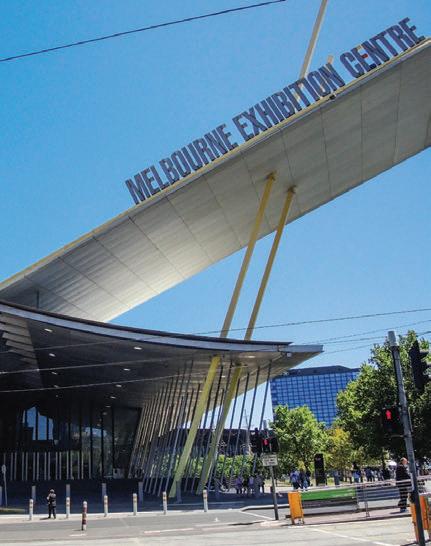
Designed for those working in, or associated with, major infrastructure and civil works, the main event at the Expo will be about Victoria’s Big Build, expanding out to a showcase construction on other infrastructure taking place in the state.
For Australia’s waste and resource recovery sector the Expo is important with C&I and C&D two of the biggest waste streams in the sector. It points to a future
of growing collaboration with the construction and infrastructure industries – one that the inaugural Inside Construction Expo will aim to foster.
According to Show Director, Lauren Winterbottom, the circular economy will be an area of focus for the event.
“We are looking to showcase companies that manufacture solutions for the construction industry out of recycled products,” she says. “We know this is a component of many contract tenders now, and one that will only grow.”

One example is creating synergy with Victoria’s Big Build, which was responsible for recycling 570 tonnes of plastic waste into noise walls; laid 75 tonnes of

100 per cent recycled plastic drainage pipes; used more than 321 tonnes of sustainable road base and asphalt – including more than 202 million bottles worth of recycled glass; and diverted 97 per cent of its construction waste from landfill.
2022 had its share of challenges such as skilled labour shortages and supply chain disruptions, which has meant the sector had to adapt to keep pace with a booming national infrastructure pipeline.
Winterbottom said there is no better time for a new in-person event such as Inside Construction Expo, not only to provide a forum for discussion around these challenges, but to celebrate those who have overcome them.
Daily news updates at www.insidewaste.com.au 16 INSIDEWASTE FEBRUARY/MARCH 2023
News //
Inside Contruction Expo 2023 will be held at the Melbourne Convention and Exhibition Centre.
Monash Council gives ratepayers soft plastic collection point
MONASH Council has established a collection site for Monash residents who want to continue recycling their soft plastics following the suspension of the REDCycle soft plastics recycling program at Coles and Woolworths.

The collection site, which is for Monash residents only, has been operational since December 2022 at the Monash Recycling & Waste Centre in Notting Hill.
The collection point is expected to be in place until mid-2023, when council is expecting additional information about more accessible soft plastics recycling to be available from government and industry.
Mayor, Tina Samardzija, is pleased council can offer an option for residents to recycle soft plastics.
“Monash Council is committed to
reducing what our community sends to landfill, and I am pleased we have been able to work with APR Plastics to establish a soft plastics collection point at our Monash Recycling & Waste Centre,” said Samardzija.
“We acted fast and worked hard to create this option for our residents. While this is a short-term solution which we have been able to quickly implement, I look forward to working with other levels of
government and our supermarkets to establish longer term solutions to capture and recycle soft plastics in Australia.
“The community is working hard to reduce what we send to landfill. In November, we collected a record monthly amount of green organic waste for Monash which will be turned into compost for use on Victoria’s farms, vineyards, and community gardens. Diverting soft plastics from landfill is another way we can support this work.
“Right across Australia we need to embrace and encourage reducing, reusing, and recycling. Monash Council calls for leadership from other levels of government and our supermarkets on how we do this with soft plastics, as the current system is unsustainable.”
Maximise Recovery... Reduce Landfill Costs
Superior Equipment
Innovation Service Support Testing
Eriez equipment enables the recycling industry to maximise the recovery of mixed metals from comingled waste, in turn increasing product purity to achieve the highest value.
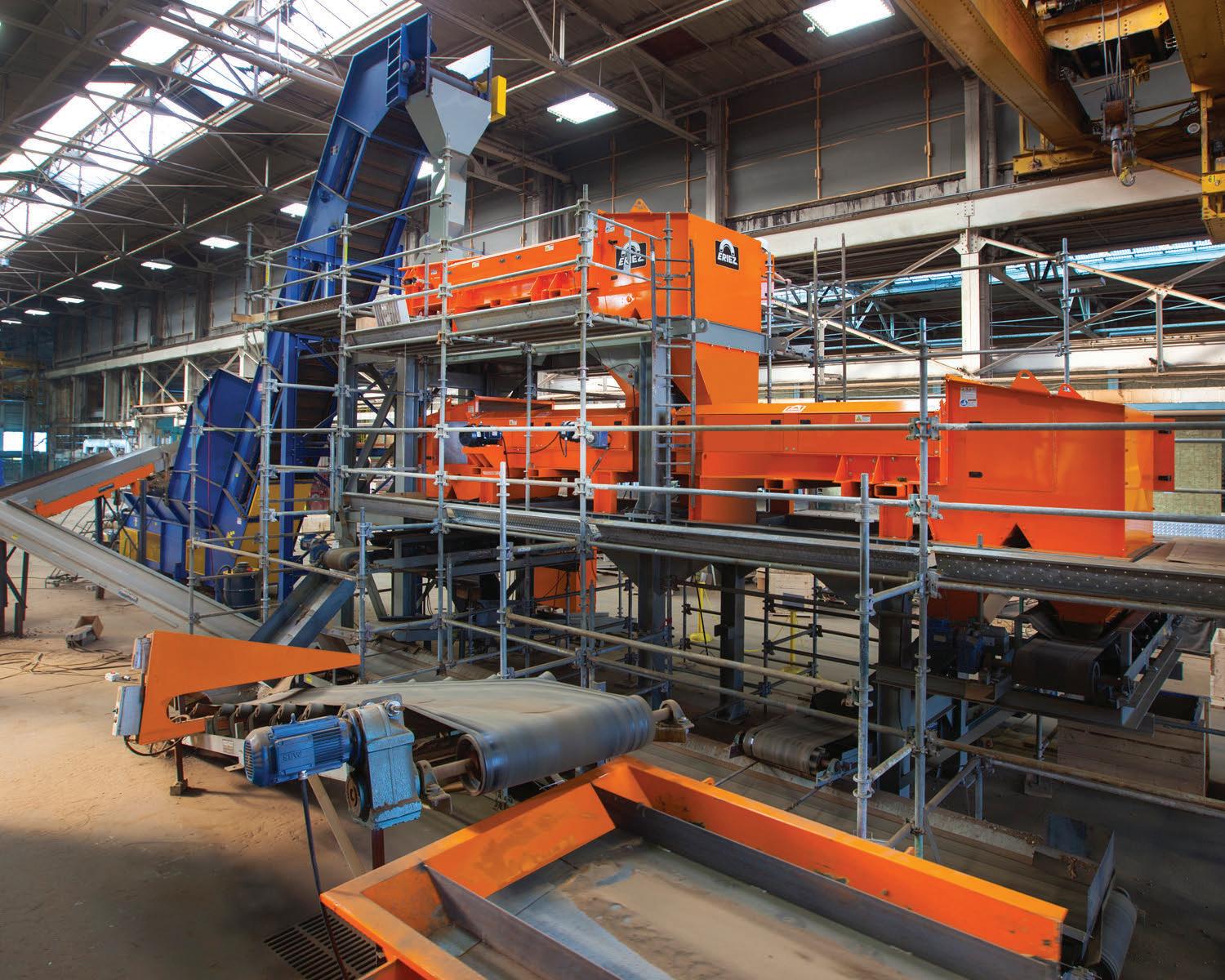
Daily news updates at // News
Monash Council’s collection site for soft plastics will be operating until mid 2023.
From the CEO’s desk
2023 is our time to shine
Environment Ministers will meet for the second time this year on 7 December, following the first 2018 Meeting of Environment Ministers (MEM) in April, which was in part a response to the import restrictions driven by China’s National Sword Policy and the effects this policy has had across the Australian waste and resource recovery (WARR) industry. Key decisions derived from the April MEM include:
With 2023 upon us, I am optimistic that this year will be our essential industry’s year. Surely 2023 will be the year that “it will get real” for industry, business, government, and the community if we are serious about meeting Australia’s 2030 targets of 43 per cent reduction of carbon emissions and the 80 per cent average recovery of materials. 2022 was good but 2023 must be better as we have both time and behaviour against us.
•Reducing waste generation, endorsing a target of 100% of Australian packaging being recyclable, compostable or reusable by 2025, and developing targets for recycled content in packaging.

• Increasing Australia’s domestic recycling capacity.
• Increasing the demand for recycled products.
We saw a lot of action in 2022. Not only did the new Federal Government move quickly to set a stronger ambition for net zero, we saw our new Federal Environment Minister, along with state environment ministers, support the move towards a circular economy, with an emphasis on design and market development.
• Exploring opportunities to advance waste-to-energy and waste-to-biofuels.
•Updating the 2009 Waste Strategy by year end, which will include circular economy principles.

With the Circularity Gap report stating that only eight per cent of global materials are circular and over 70 per cent of global emissions stem from material management, the recent Federal directions are necessary, and the set targets non-negotiable. However, we are still miles away from where we need to be.
It is time to take stock and examine what has been achieved since these decisions were announced. Now, seven (7) months may not seem like a long time, however in that time we have seen further markets close (Malaysia, Indonesia, Vietnam) and if you are an operator under continued financial stress, seven (7) months could make or break you.
When we consider Australia’s WARR journey, we could say that 2018 was the year our industry landed hard in the public conscience. We came under the spotlight through the ABC program War on Waste as well as Trashed, and shortly after came China’s National Sword. Oh the ‘shock’ and ‘horror’ when it dawned on people that Australia, as both a net importer of products and with a diminishing manufacturing sector, was exporting valuable secondary raw material commodities offshore to be re-manufactured back into products for the global supply chain.
Following the April MEM, we have had three (3) states step in with varying degrees of financial assistance for industry (councils and operators). This should be expected considering almost all states (except Queensland and Tasmania) have access to significant waste levy income each year. On the eastern seaboard, Victoria has approximately $600 million in waste levy reserves in the Sustainability Fund and NSW raises more than $700 million per annum from the waste levy. There is certainly no lack of funds that can be reinvested into our essential industry.
Funding helps but as we know, the money goes a much longer way with Government support and leadership, as well as appropriate policy levers.
VICTORIA
The penny may have dropped but five years on, we continue to consume too much, with an overwhelmingly proportion of products being made from virgin material. This is despite numerous conversations, the most recent at this year’s COP27, on the need to change consumption and production. Australia continues to focus on retail sales as an indicator of success so, it is unsurprising that we hit Earth Overshoot Day on 23 March (28 July globally), coming in behind the USA, Canada, and UAE. This is NOT a race we want to win.
On a positive note, we do have a National Waste Action Plan but that is where that positivity ends. We can all agree that it is not a particularly good document. The document, which is thankfully up for review, was written at a time by an agency that did not understand the value and role of our industry or the system within which we operate.
Victoria has arguably been the most active and earnest in supporting the industry post-China, with two (2) relief packages announced to support the recycling industry, valued at a total of $37 million. The Victorian Government has also gone above and beyond all others states by announcing it would take a leadership role in creating market demand for recycled products.
SOUTH AUSTRALIA
The result is that despite having significant data at a federal level, there has been no consideration of how to meet our targets or actions informed by evidence and data available. What we do have is a list of actions that have not closed the gap to meet the goals set, a well-intentioned but not well thought through export ban, as well as a lack of market and infrastructure emphasis
Government announced a $12.4 million support package comprising $2 million of additional expenditure, $5 million additional funding for a loan scheme, together with targeted funding from the Green Industries SA budget. The Government has also offered grants for recycling infrastructure.
NEW SOUTH WALES
At first glance, New South Wales’ eye-watering $47 million recycling support package was heralded as the spark of hope industry needed. However, on closer inspection, the bulk of this package that was funded via the Waste Less, Recycle More initiative and therefore the waste levy, was not new, making it very difficult for stakeholders, including local government, to utilise the funds as they were already committed to other activities. Some of the criteria proposed by the NSW EPA also made it challenging for industry to apply to these grants. On the plus side, efforts are being made by the NSW Government to stimulate demand for recycled content through the intergovernmental agency working groups that have been established, though no tangible increase in demand or facilities have developed… Yet.
QUEENSLAND
Unlike its neighbours, Queensland did not provide any financial support to
or co-ordination. There has also been radio silence on the federal and state/ territory regulatory settings we operate by and no mention of carbon, let alone prioritising actions that would make the greatest impact. It is a linear document that in many ways continue to entrench business-as-usual.
We have had a sobering wake-up call with the release of the National Waste Data report, which tells us that even with a plan, we are still not on the path! To get to where we must go, we need to bring on two million additional tonnes of demand for recycled products and material every year from now until 2030, which means another 14 million tonnes of recovery infrastructure alone. That’s not to mention the design, behaviour, and regulatory change needed to support this.
industry however the Queensland Government has embarked on the development of a waste management strategy underpinned by a waste disposal levy to increase recycling and recovery and create new jobs. The State will re-introduce a $70/ tonne landfill levy in March 2019. There are also strong attempts to use policy levers (levy discounts and exemptions) to incentivise the use of recycled material and make it cost competitive with virgin material. However, little has been done to establish new markets and Government has not taken the lead in the procurement of recycled material. There are grants available for resource recovery operations in Queensland although no monies have been allocated to assist in 2018. This is troubling as Queensland rolled out its Container Refund Scheme on 1 November, which will likely impact the cost and revenue models of the State’s MRFs – as we have seen most recently in NSW.
So, in 2023, as we strengthen the National Waste Action Plan, we must capture the missing part of the supply chain that has a role in designing out waste and pollution, keeping materials in use, and fostering markets to achieve a circular economy by 2030. For the WARR sector to continue to grow, we need real and substantive action to make an impact on the five key material streams that emit the most emissions – plastic, food, textiles, construction, and transportation. We need meaty strategies that cover all aspects of the 2.6 million tonnes of plastic and 14.4 million tonnes of organics we generate. These strategies need to also operate nationally, with a focus on the 10Rs that must be supported at end of life by a systemic approach to the waste management hierarchy and associated infrastructure, including energy recovery.
WESTERN AUSTRALIA
The Western Australian Government set up a Waste Taskforce in direct response to the China National Sword. As part of this announcement, the State Government urged all local councils to begin the utilisation of a three (3)-bin system - red for general waste, yellow for recyclables and green for organic waste - over the coming years to reduce contamination. While this taskforce is a step in the right direction, we are yet to see any tangible results from it or any funding for industry. In October, the WA Waste Authority released its draft Waste Strategy to 2030, which comprises a comprehensive and detailed roadmap towards the State’s shared vision of becoming a sustainable, low-waste, circular economy.
COMMONWEALTH
Following the MEM in April, Australia now has a new Federal Environment Minister, Melissa Price, who in October reiterated to media MEM’s commitment to explore waste to energy as part of the solution to the impacts of China’s National Sword, which is troubling (EfW is not a solution to recycling). The Commonwealth has also backed the Australian Recycling Label and endorsed the National Packaging Targets developed by the Australian Packaging Covenant Organisation (APCO), which has to date, failed to incorporate industry feedback in the development of these targets. To the Commonwealth’s credit, there has been significant coordination in reviewing the National Waste Policy, with the Department of Environment bringing together industry players and States during the review process.
For our industry, there must be an understanding that we need to be environmentally and economically sustainable. Continuing to operate in a regulated environment that remains focused on linear low-cost outcomes means we cannot achieve greater outcomes. A shift in perception about the material we process – high value material, not waste – could lead to a much different approach to WARR. We need policies that support this shift, funding to bolster circular models, and regulation that enables an end-to-end approach to material management. In other words, the policy and regulatory levers that would design out waste and pollution to enable access to higher quality raw materials. We also need coordinated and clear infrastructure and licensing planning to ensure that we can access, sort, and remanufacture materials in a consolidated, certain, and cost-competitive manner (e.g., through colocation), and clear and certain regulatory pathways that will keep materials in circulation. A great place to start is an agreed national definition of waste.
And finally, we need real demand. The reality is, if you insist on using material in the market, you need to fund its lifecycle and ensure it goes back into the productive economy, ideally at highest and best use.
The updated Policy will now go before Environment Ministers on 7 December. The Commonwealth can play a key role – one that goes beyond the development of the National Waste Policy. WMAA is supportive of the Federal Government maximising the levers it has, including taxation and importation powers, to maintain a strong, sustainable waste and resource recovery industry.
AHEAD OF MEM 2
The 2023 wish list is long, but I am going to add one more thing. Leadership. Yes, from our governments but also from our industry. We continue to grow and innovate so let’s showcase our work and find ways to do even better. For example, building and then showcasing our facilities made from recycled materials, reusing our materials on share platforms, furnishing our offices with re-purposed or secondhand furniture. We are already making a difference, let’s show the rest of Australia how.
Gayle Sloan, Chief Executive Officer, WMRR
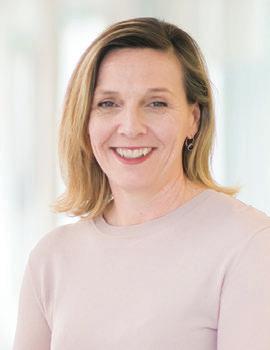
There may be movement across Australia, with some states doing better than others, but the consensus is, progress is still taking way too long. It is evident that there are funds available in almost all States to assist with developing secondary manufacturing infrastructure, however the only way that this will really happen is if there is government leadership around mandating recycled content in Australia now, not later.
Voluntary schemes like the Used Packaging NEPM, under which APCO is auspiced, are not working. We have 1.6million tonnes of packaging waste in Australia, which needs to be used as an input back into packaging. Barriers to using recycled content in civil infrastructure must be identified and removed, and Government must lead in this field and prefer and purchase recycled material. A tax on virgin material should also be imposed as it is overseas. MEM must show strong leadership on this issue. Ministers have, since April, dealt directly with operators and councils that are under stress and we have a chance to create jobs and investment in Australia at a time when manufacturing is declining. Ministers have the opportunity to be leaders of today, not procrastinators – leaders of tomorrow and we are urging
news
WMRR: Suite 4.08 | 10 Century Circuit | Baulkham Hills NSW 2135 | t: 02 8746 5000 | e: info@wmrr.asn.au | w: www.wmrr.asn.au
Chief Executive Officer
WMRR: Suite 4.08 | 57 St Johns Road | Glebe NSW 2037 | t: 02 8746 5000 | e: info@wmrr.asn.au | w: www.wmrr.asn.au Daily news updates at www.insidewaste.com.au 18 INSIDEWASTE FEBRUARY/MARCH 2023
A year in which anything is possible

Let’s continue inventing the world of tomorrow together...
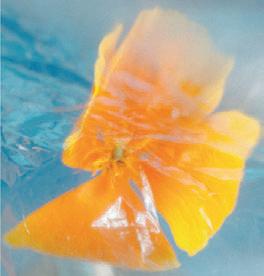



What if...

2023
ENGINEERED FOR RESULTS
Our expert engineers design customised solutions that recover maximum value from challenging waste streams and give you the power to divert tons of waste from landfill.

Our solutions help recover 80 – 100% of valuable materials, creating new revenue streams with an exceptional return on investment.
An integrated water management system recycles up to 90% of process water for immediate re-use in the system, significantly reducing footprint and maintenance of settling ponds.
Visit cdegroup.com
ENGINEERED FOR YOU.
The REDcycle crisis that never was
(Continued from front cover)
WITH the Minister’s Priority List 2022-23 – which identifies a range of problematic and unnecessary plastics – hot off the press; the community up in arms about sending plastics to landfill; and more industry players than ever pursuing circular economy strategies linked to actionable plans and ESG reporting, now is the time to strike.
The best way to feed the elephant without giving up the Porsche – that is, maximising material efficiency while minimising costs, environmental impact, and unnecessary materials – is to phasein mandatory product and packaging design standards to accommodate circular economy principles.

First, design products in a way that minimises the need for packaging. And what packaging is required, use singlematerial formats that can be more easily recovered through municipal and commercial kerbside recycling as this is where most of it will end up. A good example of this is Dyson, which creatively uses simple recycled cardboard in place of polystyrene to protect the product during
shipment, which is one of the easiest materials to recover through kerbside.
If plastic cannot be avoided (and, depending on composition and format, can even be a more sustainable option), allow only higher-value transparent single-polymer formats with a clear processing and end market pathway, such as PET, RPET, PP, HDPE, and (in limited formats) LDPE. Composite materials –such as multiple-polymer plastics; coffee cups, which are cardboard lined on the inside with plastic or polylactic acid (PLA) based ‘bioplastic’; aseptic containers such as Tetrapak, which are liquid paperboard lined on the inside with thin layers of aluminium and plastic; and that pesky Apple packaging, with cardboard enveloped tightly by plastic – should be regulated out as they are so logistically, technologically and energy-intensively difficult to recycle. End markets for these types of recovered materials are so poor, that landfill is the only ‘viable’ destination.
Enforcing higher design standards for Australian and international manufacturers and brand owners will
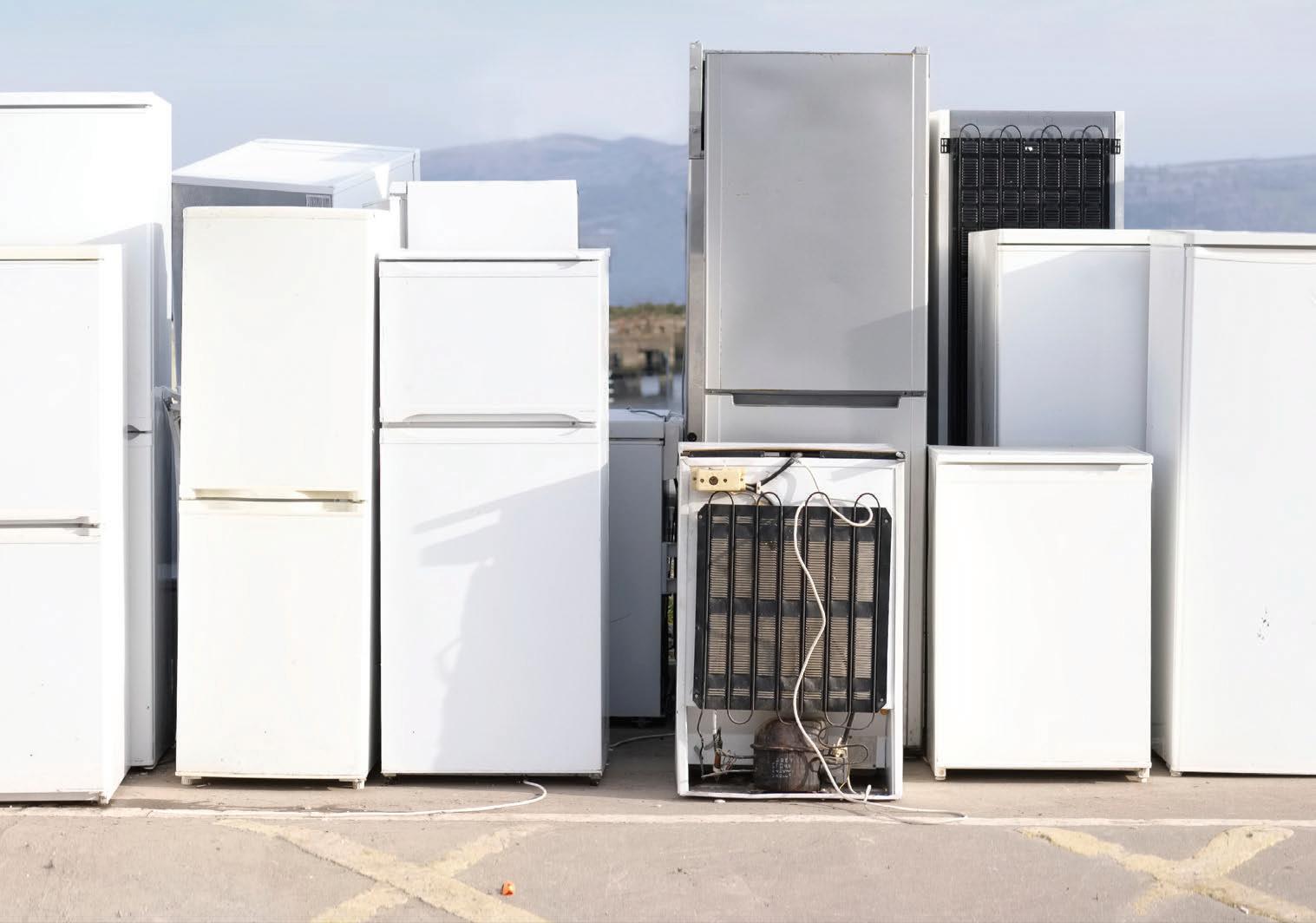
shift some of the cost of doing business from the Australian community and local governments back to businesses and may even sharpen the teeth of co-regulatory schemes such as the Australian Packaging Covenant Organisation (APCO).
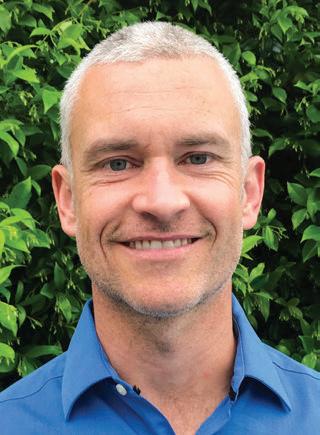
Better design standards in place, phase out all single-use plastics and bioplastics (including all oxo-degradable, biodegradable, compostable light and heavy gauge carry and barrier bags and polystyrene) to be replaced by reusable alternatives. Bring your own, borrow one through Returnr or Green Caffeen, etc, or eat in. No exceptions apart from accessibility related for impaired individuals. Absolutely must provide a carry bag? 5-10¢ per bag is negligible in relatively affluent societies. Charge $1/ bag. This would also further support an already hobbled recycling system.
For packaging that cannot be avoided (i.e. for the purpose of preserving food where there is no other alternative), let’s lend our full support to the development of the National Packaging Recycling Scheme (NPRS). This is a packaging stewardship scheme being developed by
the Australian Food and Grocery Council (AFGC) in collaboration with industry members through an extended product responsibility (EPR) scheme, where trials are underway in metro areas to collect soft plastics from Australian homes through kerbside recycling services. This can be done in conjunction with the REDcycle program. The plastics are then taken to an advanced recycling facility
Daily news updates at www.insidewaste.com.au FEBRUARY/MARCH 2023 INSIDEWASTE 21 // Thought Leadership
The REDcycle controversy offers an opportunity to reset the ESG opportunities that are beginning to emerge, according to Bonsey.
Mandates may be needed so that manufacturers design products that last longer instead of just a few years.
such as that of Licella or Qenos, where they are turned back into oil to produce more plastic packaging. Cracking the nut of kerbside soft plastics collection would enable aggregation of volumes quanta higher than in-store drop-off and enable brands to increase recycled content in packaging. The opportunity is ripe for a small levy to be attached to the sale of unavoidable soft plastics to fund collection and recycling until a future economy of scale achieves a selfsustaining pull market.

Product stewardship schemes often leverage a levy-benefit structure, where a small unit- or volume-based levy is paid at the point of sale by a producer and/ or consumer to cover the cost of product logistics and processing, and is then returned as a refund or other distributed benefits. Despite their success, Australia still has only one mandatory scheme; the others are voluntary or co-regulatory, which generally means they are optional,
vulnerable to loopholes, their success is limited by participation, and our economy is losing a valuable, time-critical opportunity to slow the haemorrhaging of resources embodied carbon emissions.
But why stop at packaging? For other major categories of goods – from consumer goods to building materials, fridges to fit-outs – design products to last and provide access to affordable repair to extend product life as long as possible (including right to repair legislation), design for disassembly and repair, and mandate collection logistics and resource recovery for end-of-life materials. This is where the most significant economic and environmental gains will be made.
Implementing phase-outs and stewardship schemes is almost always an arduous journey through the thicket of vested interests, political capital, stakeholder alignment, community support, election cycles and timing.
But what often eludes consistent quantification – and, sadly, incorporation into business models – are the true social, economic and environmental costs and benefits of losing resources and fugitive carbon emissions both upstream and downstream from a company’s main operations (think scope 3 materials and carbon emissions). If, for example, the business case for a governmentrun fridge buyback scheme were to consider the social and carbon benefits associated with extending fridge life through repairability and redistribution to disaster-affected communities and social programs, political and community support might build themselves. Some products will always post a genuine challenge; but for many, we simply need to take a longer, more comprehensive view of the distributed benefits, including the disastrous costs of not taking any action at all.
Slow they may seem to the
impatient among us, government and corporate sustainability strategies are moving quickly to include circular economy principles that cost-effectively increase material efficiency and social equality while reducing embodied carbon emissions and regenerating ecosystems and biodiversity. They are changing course not only because their stakeholders demand it and it gives us a fighting chance to survive on Planet A, but also to eliminate inefficiencies, demonstrate thought leadership, increase brand loyalty, attract investment, and scale the approach across more products and services.
Whether you’re for making money, protecting the environment, providing equal opportunity, or all of the above, why wait for the next crisis to make a better world?
Daily news updates at www.insidewaste.com.au 22 INSIDEWASTE FEBRUARY/MARCH 2023 Thought Leadership //
Justin Bonsey is principal consultant, circular economy at Edge Environment
If the use of plastics is unavoidable, where possible, make sure the type of plastic being used fits the circular economy mould.
The next-generation of advanced recycling is coming. Advanced



Recycling Victoria (ARV) is bringing Licella’s pioneering Cat-HTRTM advanced recycling solution to Victoria. A truly scalable solution to transform mixed waste plastic into high value oil, enabling the production of food-grade recycled plastic.
part of the revolution to ensure all plastic moves forward in
Find out more advancedrecyclingvictoria.com
Be
circles.
Planning now for a better tomorrow
(Continued from front cover)
THIS includes the inability to move animal and plant matter back to mainland Australia. But that isn’t the main issue – the islands are running out of space to landfill.
“It’s definitely an interesting environment to work in,” Smith said. “In many ways, it’s rewarding because there’s so many solutions to be proposed. We’re working on a few different projects. At the moment we’re moving from island to island cleaning up legacy metal waste.”
This includes wrecked vehicles, plant and machinery, white goods and construction materials littered throughout the communities. Smith is quick to point out that a lot of the rubbish comes from contractors who come to the islands and don’t remove the waste.
Currently, the island is also burning a lot of waste due to the aforementioned lack of land.
Looking to the future, Smith wants the island to adopt more sustainable, long-term plans. What that looks like, he said, is very similar to what happens on the mainland – sorting and recycling, and possibly stewardship-type scenarios.
“That is basically the plan. We’re also talking cap flows, rehabilitating each landfill on the existing footprint,” he said. “However, will the transfer stations have all these processes and staff to manage this waste stream is a question we’re constantly asking ourselves. Then we have to compost on the islands as well because no plant matter is allowed off the islands.”
One area of concern for Smith is the lack of training available to staff. And not just in the Torres Strait Islands.

“We got a grant, so we employed a waste and biosecurity engagement co-ordinator,” he said “But part of the condition of his employment was to provide him with training and career development in waste management. I looked around, and I asked a few different technical consultants about what kind of waste management training could be provided and it turns out not much – even in a national sense. There are nationally accredited courses at certificate level, but they are limited to New South Wales.
“I’d be keen to know if anybody knows of more training opportunities out there. But it’s something that’s a big step forward for us in the Torres Strait, in being
able to provide training to our staff, so that the staff know how to manage waste, and waste management.”
Another panellist was Professor Leanne Wiseman who lectures on intellectual property law at Griffith University. She was on the panel to discuss an issue that has become topical and part of the waste narrative over the past 18 months; the right to repair.
Currently some manufacturers of goods – especially electronics such as computers, smart phones and white goods – do not allow third parties to repair their products if they break down. The reason given is that the manufacturers are worried that their intellectual property will be compromised. However, cynics see it more as a cash grab by the producers to either gouge repair prices (once the product is out of warranty), or as a chance to upgrade a customer to a newer (and more expensive) version of their computer, smart phone or appliance.
Wiseman’s reasoning for being involved in the issue is more of pragmatism – making sure electronics goods last a proper lifetime so they stay out of landfills. As she pointed out, currently Australia has more than 140,000 tonnes of e-waste generated annually. She said there is a range of barriers as to why Australians can’t get their whitegoods and consumer appliances repaired.
“I don’t know if there’s anyone in this room who has any joy in replacing their washing machine, dishwasher, or refrigerator,” she said. “They’re necessary items that we have in our homes. And we know that with our parents and grandparents’ generations, once they got a fridge, it was with them for 30 or 40 years. Now when we buy a fridge, we’re lucky if it lasts for three or five years before we’ll need to replace it.”
Wiseman said that there is a whole range of barriers as to why people can’t
get electronic goods repaired or reused. They range from legal to intellectual property barriers. Any smart product in a home – whether it’s a Fitbit, iPhone, tablet, or dishwasher that connects to the internet – will have software embedded in them. Once there is software involved, copyright sits over those devices.

“Manufacturers can exert incredible control over what you can do with that device,” said Wiseman. “Even though you buy your washing machine, you can’t open it up to look inside, you can’t fix it, you can’t get access to repair or service information. Because often what we hear from manufacturers is that ‘it’s our intellectual property. That’s our R&D. We can’t share it with you’.”
Back in the day, white goods would come with a repair manual and service information as to where consumers could get spare parts for a device. Now, with software embedded into the machine, users will get an error code on a washing machine or fridge or even motor vehicles and farm equipment, whereby they will not be able to repair the product.
“Anything that’s ‘smart’ will have IP sitting over it,” Wiseman said.
Intellectual property is only part of it. Then there are the physical barriers. Wiseman cited Apple, whose devices don’t have any screws in them so you can’t take a battery out and replace it. And there are simple aspects to the device – like the on/ off switch or maybe a filter – that fails but cannot be replaced. It will be headed for a landfill at worst, or to a recycling facility when it still has life left in it.
Which brings us to the nub of Wiseman’s point during her speech. Producer responsibility, which is akin to putting together a product stewardship scheme for whitegoods and smart devices.
“What we don’t hear so much about is enhanced producer responsibility and putting the onus back on manufacturers
Daily news updates at www.insidewaste.com.au 24 INSIDEWASTE FEBRUARY/MARCH 2023 The future of resource recovery //
Right of repair is one issue where government intervention via legislation would be welcomed.
who are making and designing these goods. We need to make sure that they’re made in a way whereby they can be disassembled, that spare parts are available, and repair information is freely available to the people,” Wiseman said.
She said that in the past 12 months the federal government had completed an inquiry through the Productivity Commission looking at why consumers can’t repair and reuse these types of goods in Australia. The Commission came up with a range of recommendations around manufacturer warranties. Wiseman said there’s confusion in the consumer market about when a manufacturer warranty comes into play compared to when a person’s consumer rights come into play.
There were also recommendations that there be a repairability or product durability label on a product. This is what happened recently in France, and it looks like the European Union is considering something similar. When a consumer goes to buy a toaster or washing machine, as well as finding information about whether spare parts are available, there will be information about whether users can get access to repair and service information.
“Why shouldn’t manufacturers who make a fridge tell you how long that fridge should last, so that you can make an informed decision at that point of purchase?” said Wiseman. “There’s so much work that can be done in this space. If we can get manufacturers to design and make products in a way that batteries can be removed simply and easily by anyone with everyday tools that is a huge step in terms of the safety and the environmental effect.”
Which was a nice segue to the next speaker at the event, Libby Chapman who is the CEO of the Battery Stewardship Council. Currently, the council has about 90 per cent of the loose battery market signed up to the scheme. Chapman
believes that although that is a great number, she would like the last 10 per cent to come into the fold – sooner rather than later. That is something the council will be working on over the next 12 months. So far, the scheme has collected about 900 tonnes of batteries from the 2300 drop-off points it has around the country.
“We knew it was important to make battery recycling convenient for people,” Chapman said. “And that really was a key barrier– people were not quite sure what to do with the batteries. Now they do.”

When it comes to moving forward, Chapman believes there is still work to be done in the safety space. She said the organisation wants to convey to people the safety aspects from the beginning to the end of the process. For example?
“Many people aren’t aware that overcharging batteries causes potential for fires,” she said. “We really want to encourage people not to leave their batteries too long on the charging station – just charge up the machine and then take it off the charging station. If you’ve got smaller batteries or powerful batteries, make sure that you’re taping those before you take them to your local drop-off point, because once they’re taped, there’s a smaller chance that they can short circuit and cause fires.”
Also on the panel was Shannon Mead who is the CEO of No More Butts, which,
as the name suggests, is trying to attack the issue of cigarette butts, which are a litter hazard.
Mead started the charitable organisation when he calculated that there were up to one million butts littered in his Local Government Area (LGA) on a weekly basis, and just under nine billion around the country annually.
A key component of the cigarette, its filter, is in Mead’s sight. Not only is it made from cellulose acetate and therefore a problematic waste stream, but the World Health Organisation made a statement in 2022 that filters had zero health benefits, and therefore are unnecessary on cigarettes.
“The question then comes, can we actually look at future changes across all the states,” said Mead. “And in particular, now, could the federal government introduce some kind of harmonisation and initiate a ban on single-use plastic tobacco filter?. If that can’t be started for whatever reason – whether it be political or funding, or costs in terms of duties and excise disappearing – then go to a secondary consideration. That would be things around extended producer responsibility, or the user pays principle.
“In San Francisco, retailers are charged $1.05 US per packet that they sell, and that money goes to the city. It’s not a tax, it’s an abatement fee and it’s determined as
such by the revenue office. It is a model that can and does work.”
While there has been a decline in smoking, there has been a marked increase in vaping. What will be seen over the next 12-18 months, according to Mead, is an increase of vaping machine e-waste such as aluminium, batteries, plastics and a range of other components.
“Now we have a quadruple whammy as a new environmental threat,” he said. “So even if we do solve the worst problem of cigarette butt litter such as tobacco filters, we now have this emerging threat. One of the things I’m asking people in the industry is, ‘are you equipped and ready to start collecting e-waste and start looking at the demographics of those who have started vaping?”
It is with that last point in mind that Mead thinks it is important to start education programs on the waste stream at schools.
“We’ve obviously got great schemes and great experiences in terms of recycling,” he said.
“There are all sorts of programs that we can leverage potentially in the future. There needs to be greater accountability for those that import products, greater visibility of once we have those products where they’re being sold so we can levy them and incorporate them into an existing program.”
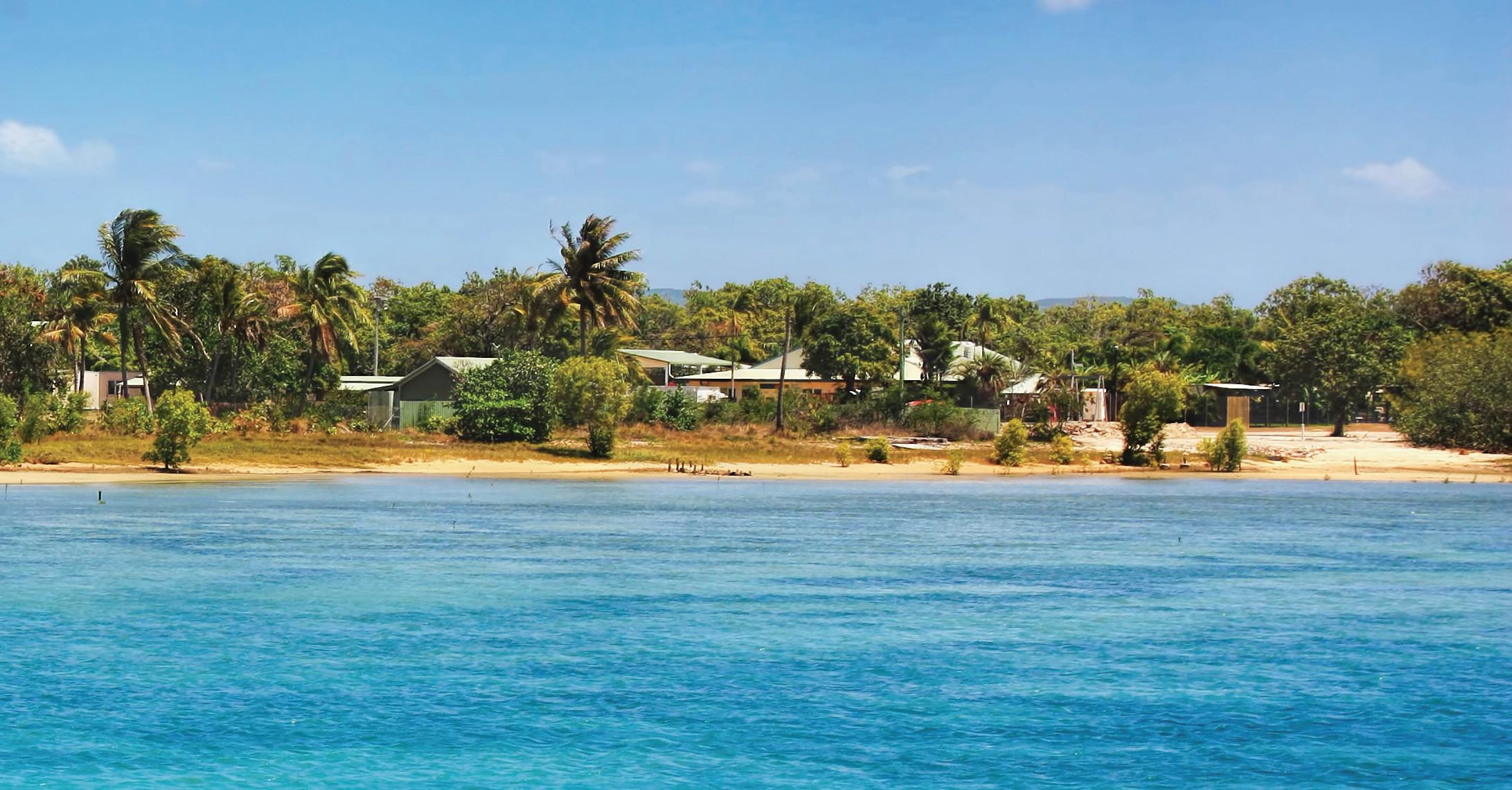
Daily news updates at www.insidewaste.com.au FEBRUARY/MARCH 2023 INSIDEWASTE 25 // The future of resource recovery
The panel at the seminar were from an eclectic range of arenas within the waste industry.
Thursday Island is one of 15 inhabited islands in the Torres Strait where room is running out for landfill.
Driving resource recovery to 80 per cent
By Mike Ritchie
SEVENTY per cent of the growth in recycling in the past 20 years is explained by the rise in landfill levies. They change behaviour by making recycling a cheaper option than landfill.
This article tries to explain the role and contribution that the landfill levies make to resource recovery.
What is a landfill levy?
It is a state government tax paid by you and I on waste we landfill. Each time a tonne of waste goes over a landfill weighbridge, there is a tax levied on the waste. The landfill operator pays the levy to the state government if they landfill that waste. (They do not pay it if they recycle that material and divert it before the hole in the ground).
The levies vary between states as set out below.
and monitoring (40 years) or the cost of asset replacement such as buying a new property or quarry to build the next landfill. Almost none incorporate the costs of methane emissions on climate change. Many don’t even meet their full costs of operation.
That is one reason that we still landfill 40 per cent of the materials generated by the economy as “waste”. This is particularly true in regional Australia and for mixed waste streams.
Recyclers compete with landfill for materials. Higher landfill gate fees, driven by levy increases, allows recyclers to compete for access to recyclable materials as material processing for resource recovery is costly.
Most people in Australia do not realise that recycling is in direct competition with landfill for access to materials. Changing that economic balance is the key role of the levy.
2. Funding and hypothecation
The second and lesser role of the levy is a mechanism to raise funds for government and for grants/subsidies that support business and innovation in recycling.
Interestingly, the rate of hypothecation, which is the dedication or pledge for waste projects, of levy funds is the most controversial aspect of the levy. Payees want more of the levy back than governments generally want to give up. Fair enough.
Supporting recycling
There has been a lot of soul searching around the demise of recyclers including REDcycle in recent times. REDcycle was an innovative soft plastic collection system but it suffered from unstable offtake arrangements and reuse opportunities. These cases prove a number of things:
• it is hard to compete with cheap landfill for low value recycling streams such as soft plastics (84 per cent of plastic packaging goes to landfill);
• it is expensive to collect, sort, wash and process recyclables – recyclers need a decent gate fee;
• recycled products need viable and continuing markets or offtake –recyclers need minimum recycled content rules; and
• collection is not recycling because recyclers need to build reprocessing infrastructure that is profitable. It is easy to recycle some streams such as aluminium. It is ubiquitous, valuable ($1,500/t) and has strong end markets. That is not true for many things we need to recycle – mattresses, soft plastic, polystyrene and timber to name a few. The economics is often marginal at best. That is why companies go broke.
A higher landfill price allows recyclers to charge a higher gate fee for the same recycling activity and reduces their dependence on end markets.
So why don’t we have higher levies?
The main argument against levies is that it is another tax, and we hate taxes. Fair enough.
But if governments must raise revenue via taxes, my argument is that it is better that they be progressive taxes that support the economy and improve sustainability, than regressive taxes such as payroll tax, which taxes employment, or stamp duty which taxes housing.
The tobacco tax is the best-case study I can think of. Higher tobacco tax drove a reduction in the consumption of tobacco, much more than education did. The market signal worked.
People often ask, “But will government reduce other taxes in line with increases in landfill levies?” The short answer is, they should. Governments have a tax revenue requirement – better they raise revenue via a landfill tax than payroll or stamp duty.
Local government have historically been antagonistic to landfill levies because they feel it is a tax on their landfill activities. A couple of points on this:
• Seventy per cent of all landfilled waste across Australia, and therefore payment of the landfill tax, is paid by private companies not local government or householders. They generate 70 per cent of the waste that is landfilled.
The levy is added to the normal cost of operating a landfill and therefore push up the “gate fee” that you and I, councils, businesses etc pay to dispose.
As such they make landfilling more expensive, relative to the alternatives such as separation, reuse and recycling.
The role of the landfill levy
Landfill levies have two primary purposes.
1. Changing the relative costs of landfill and recycling
First, they raise the relative cost of landfilling and drive behaviour change in favour of recycling. More materials are recycled because landfilling costs more.
Australia, and particularly rural regional Australia, is still characterised by cheap landfills. Few landfills include the costs of post closure remediation
The average hypothecation rate to direct recycling initiatives is about 30 per cent. The other 70 per cent is spent on supporting EPAs, other government departments, and other government programs such as schools, roads and health.
The rate of hypothecation also varies greatly between states. The key point is that the higher the hypothecation rate the sooner we get Australia on a more sustainable resource path. But to be clear, grants don’t change the operating costs or profitability of recycling businesses much. Their main effect is to bring forward investment to now, which might have occurred later.
I will reiterate, that while levies provide funds for infrastructure and programs, their key benefit is to make more recycling commercially competitive with landfill. They let the market compete, innovate and recover materials back to the productive economy without it being sucked away by a cheap landfill.
A higher landfill levy underpins their recycling business model. This is supported by the correlation observed when plotting total waste to landfill in Australia against the weighted average value of the landfill levy for Australia. Given that not all states have a levy, the downward trend of waste to landfill is quite impressive.
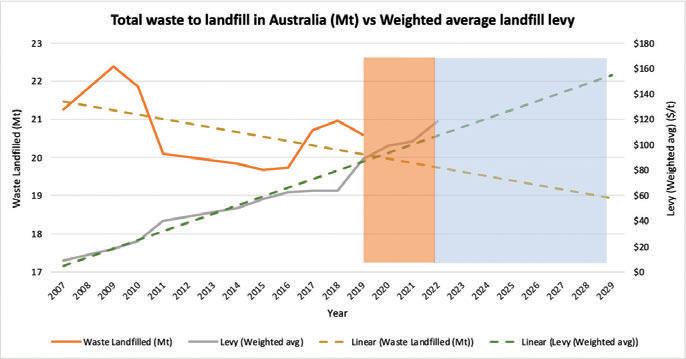
• Even if local government owns the landfill, most of the levy cost is paid by private companies not residents.
• Local government has been a beneficiary of grants and subsidies. A higher level of hypothecation will deliver more money back to local government.
Tasmanian local government took a
Daily news updates at www.insidewaste.com.au 26 INSIDEWASTE FEBRUARY/MARCH 2023 Landfill Levies //
StateMetro Levy 22/23 Rural levy 22/23 NSW $151.6$87.3 QLD $95 $88 VIC $125.9 $62.95 SA $149 $74.5 WA $70 $0 TAS $20 $20 ACT Only for commercial loads, incorporated into the $179.20/t fee NT 0 0
Waste to landfill in Australia compared with weighted average landfill levy.
mature view toward levies. First, they acknowledged that higher landfill levies were inevitable given government commitments to circular economy and the 80 per cent diversion from landfill target included in the National Waste Action Plan. So Tasmanian local government supported the introduction of a levy subject to agreed hypothecation rates. Good outcome for all.
Why a landfill levy?
We now know that landfill levies have driven most improvements in recycling in the past two decades. In 2020, the NSW Auditor General, Margaret Crawford, undertook a performance audit on the Waste Levy and Grants from Waste Infrastructure, concluding that “There is evidence that the waste levy has a positive impact on recycling”.
The graph to the right shows the relationship between levies and recycling rates across all states and territories. Levies explain more than 70 per cent of the differences between states (R2= 0.75)
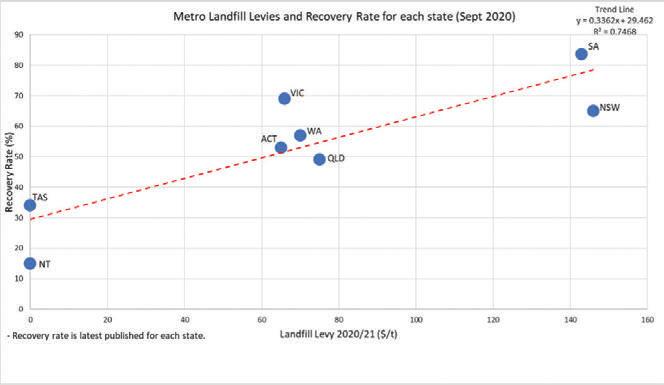
That is not to diminish other initiatives but to emphasise that if we want to shift the dial, we need to strengthen levies.
Our national target is 80 per cent diversion by 2030. We are currently at 60 per cent.
We have done all the easy and even some marginal recycling. But getting from 60 per cent to 80 per cent will be hard. Companies will try and many will go broke because they are at the edge of viability. We need to make them less vulnerable. They need to earn reasonable profit to be able to withstand the normal ups and downs of business.
Governments have three levers:
• Bans and mandates.
• Levies and other price signals.
• Education.
Numbers one or two will work. Education in the absence of one or two will not get us there.
Bans and mandates
Various governments have started on bans and mandates. The NSW government has mandated commercial food collections by 2025 and household FOGO by 2030. Well done NSW. States have started banning problematic single-use plastics, but these are not enough or ubiquitous enough. Mandates and bans need to be massively ramped up. As an example, all of the Extended Producer Responsibility schemes in Australia (TVs and computers, container deposits, tyres) currently recover less than five per cent of waste materials. To achieve the targets, we need to recycle an additional 18mt/year every year by 2030.
I am fine with governments lining up a long list of products to ban, or mandate recycling thereof, but to
achieve the targets it will be a long list and require massive government effort. The politics will also be hard.
Levies
The alternative is to keep increasing the levies. All recycling will become more viable with higher levies.
The weighted average levy price in metro cities in Australia is $105/t. This compares to European levies (in $AU and adjusted for inflation since 2021 publishing date) of: Belgium $200; UK $188; Austria $148. The penalty rates for exceeding allowable landfill rates are even higher: Northern Ireland $381; Wales $381 and Scotland $286. These are on top of landfill operating costs.
The one thing about rising landfill levies is that we won’t know in advance which companies will do well and which will not. But most recyclers will benefit. That includes landfill owners who build recycling facilities on their landfill.

There are a few levy implementation issues worth discussing:
a) Bona-fide recyclers should get a
discount on the levy costs they pay, i.e. their residual waste that needs to go to landfill. For example, MRF operators receive 10 per cent contamination on average and all of that needs to go to landfill at present. That is a drag on profitability. Rather than penalising bona-fide recyclers we should discount their levy by say 50 per cent. We do this now for metal recyclers.
b) Governments should announce levy increases as far into the future as possible. This forward announcement will allow businesses to bring forward investment based on where the levy will be in the future. That accelerates investment.
c) Local government should co-ordinate levy changes with government to secure decent hypothecation rates for any increase. My view is that this could be near 100 per cent of any increase.
Conclusions
These are the important aspects to take away from this piece:
• we need to massively improve recycling to achieve our emissions and waste targets;
• only bans, mandates or levies work at the scale we need;
• levies drive behaviour and support recycling;
• levies are 100 per cent avoidable – just recycle;
• local government can be a significant beneficiary with decent hypothecation;
• levy funds should be spent on infrastructure, services and market development; and
• we should announce increases early to bring forward investment. Think about it. If you agree, tell government.
Daily news updates at www.insidewaste.com.au FEBRUARY/MARCH 2023 INSIDEWASTE 27 // Landfill Levies
One of the main arguments against landfill levies is that they are yet another form of taxation.
The relationship between levies and recycling rates across all states and territories.
Solar panel and batteries soon to become formidable waste stream
THE first commercially viable solar cells came out of Bell Labs in the US in 1954. Since then, the photovoltaic technology has seen the uptake of solar panels in both commercial and residential premises – with a marked increase over the past two decades. They are seen by some as a godsend when looking for alternative ways of generating electricity other than coal-fired power stations, which have been the main source of energy for Australia for many decades.
According to the US Bureau of Labor Statistics, by 2028 two of the fastest growing jobs in the country will be solar installers (projected to grow by 105 per cent) and wind farm technicians (projected to grow by 96 per cent). While environmentalists will love the reduction in greenhouse gases these products produce, there will be a downside. At some time or other, they will reach their end of life. Current predictions show that in Australia, by 2035 up to 71,000 tonnes of solar panels and batteries will be coming offline.
Presenting at a seminar at the Australasian Waste and Recycling Expo, NSW EPA project officer in the entity’s waste and recycling and infrastructure unit, Amelia Turcato, took the audience through issues surrounding how the
New South Wales government plans to dispose of what will become an ongoing waste stream.
“The New South Wales government responded to solar panels as an emerging restream by committing $10 million towards reducing the landfilling of solar panels and batteries, which might be more commonly known to the industry as the $10 million Circular Solar Fund,” she said.

Turcato said that when the EPA first launched the Circular Solar Fund, it knew that the recycling market for solar panels was in its infancy so it looked at trialling projects that could demonstrate recycling technologies that could potentially be scaled up in the future. There were three trial projects.
The first project the was funded was by Blue Tribe who were given almost $405,000 to set up a community solar garden using decommissioned, but still serviceable, solar panels. These panels could have been sent to landfill.
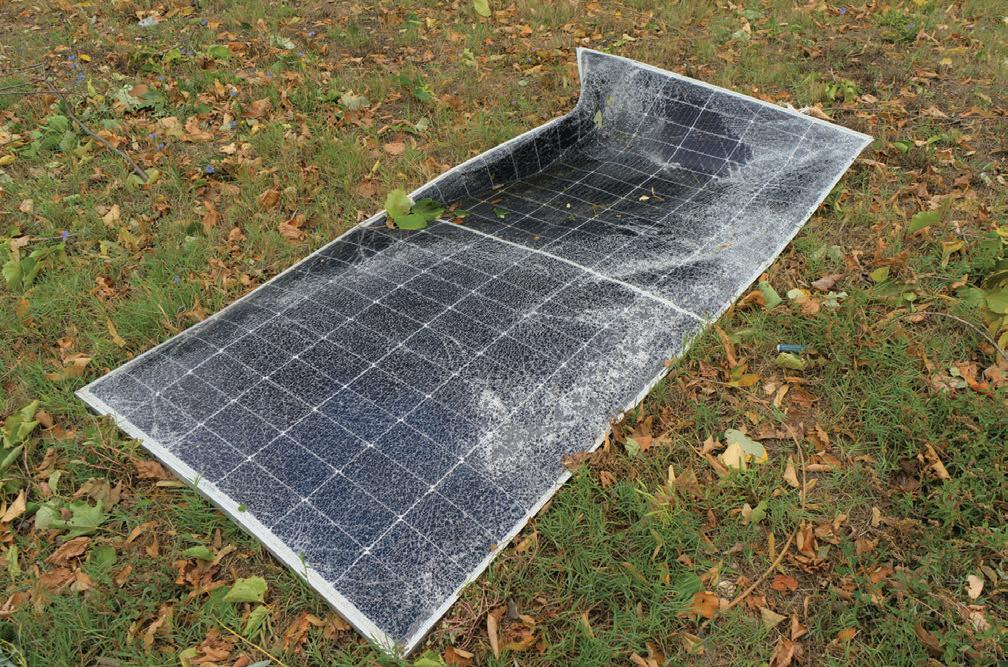
The company is working with the CSIRO to develop a methodology to be able to test panels that are still suitable for a second life application.
“This reuse project is exploring the technical barriers and also regulatory barriers to reuse,” said Turcato. “And this
will be really important in demonstrating a viable system for second-hand solar panels.”
She said that by setting up the secondhand system, it gives the local area a clean energy source that they can buy into and takes a step towards NSW’s transition towards a net zero economy.
Another project is via Wagga Waggabased Solar Professionals, which is trialling and developing a recycling technology that will be capable of delaminating solar panels into individual cell components. The technology will be able to recover entire glass sheets intact and will be trialled for use in the commercial construction of glass houses.
“This link back to remanufacture through the glass houses, in using recovery materials, is particularly important in supporting recovery efforts and creating new end markets for materials coming out of solar panels,” said Turcato.
The final trial project was awarded to PV Industries, which received almost $2.4 million to build a collection and logistics system for urban and regional New South Wales. The collection system will safely transport solar panels in bulk and minimise the damage, which will increase the reuse and recycling potential the waste stream.Turcato said the project is also developing recycling technology to separate materials from solar panels into clean and high recovery rate streams. There’s also a number of research components to this project. The company is partnering with the University of New South Wales, CSIRO and the Institute of Sustainable Futures, as well as looking to expand the testing methodology for the solar panels to be able to test panels in the field that are suitable for reuse, recycling or refurbishment. PV Industries is also looking at testing end market opportunities for solar panel glass by trialling those uses in concrete applications.
The second round of funding under the Circular Fund program has recently been awarded. There were five projects that were given funding at a commercial scale level. These projects are in their inception stages.
Funding included that for three commercial-scale infrastructure projects – two for setting up recycling facilities for solar panels in the Bankstown and Aubrey areas. The third project is developing a
Daily news updates at www.insidewaste.com.au 28 INSIDEWASTE FEBRUARY/MARCH 2023 Solar Waste //
Buy 2035 there will be up to 71,000 tonnes of solar panels and batteries coming offline.
battery recycling facility in New South Wales, which will be the first of its kind. It will be capable of processing up to 800 tonnes a year of lithium-ion batteries.
Turcato said that the University of New South Wales will soon receive funding to develop a prototype recycling technology, which will be able to be tested as a mobile processing option.
“Mobile processing technologies can be really important to providing outsource options for recycling; this is particularly important for regional and other areas where there can be lost efficiencies and loss costs through transport distances,” she said.
Blue Tribe has also received more funding that will allow the company to upscale its aforementioned research project into a commercial system, and testing the second-hand solar panels in a larger model, which will be capable of diverting 10,000 tonnes of serviceable solar panels from landfills annually.
“It will also be exploring conversations with Standards Australia to look at changing or reviewing reuse standards for solar panels,” said Turcato. “This
reuse project will provide valuable data on energy efficiencies for a second-hand system. And it will provide the evidence of a reuse system for solar panels, in a second application, at a commercial scale.
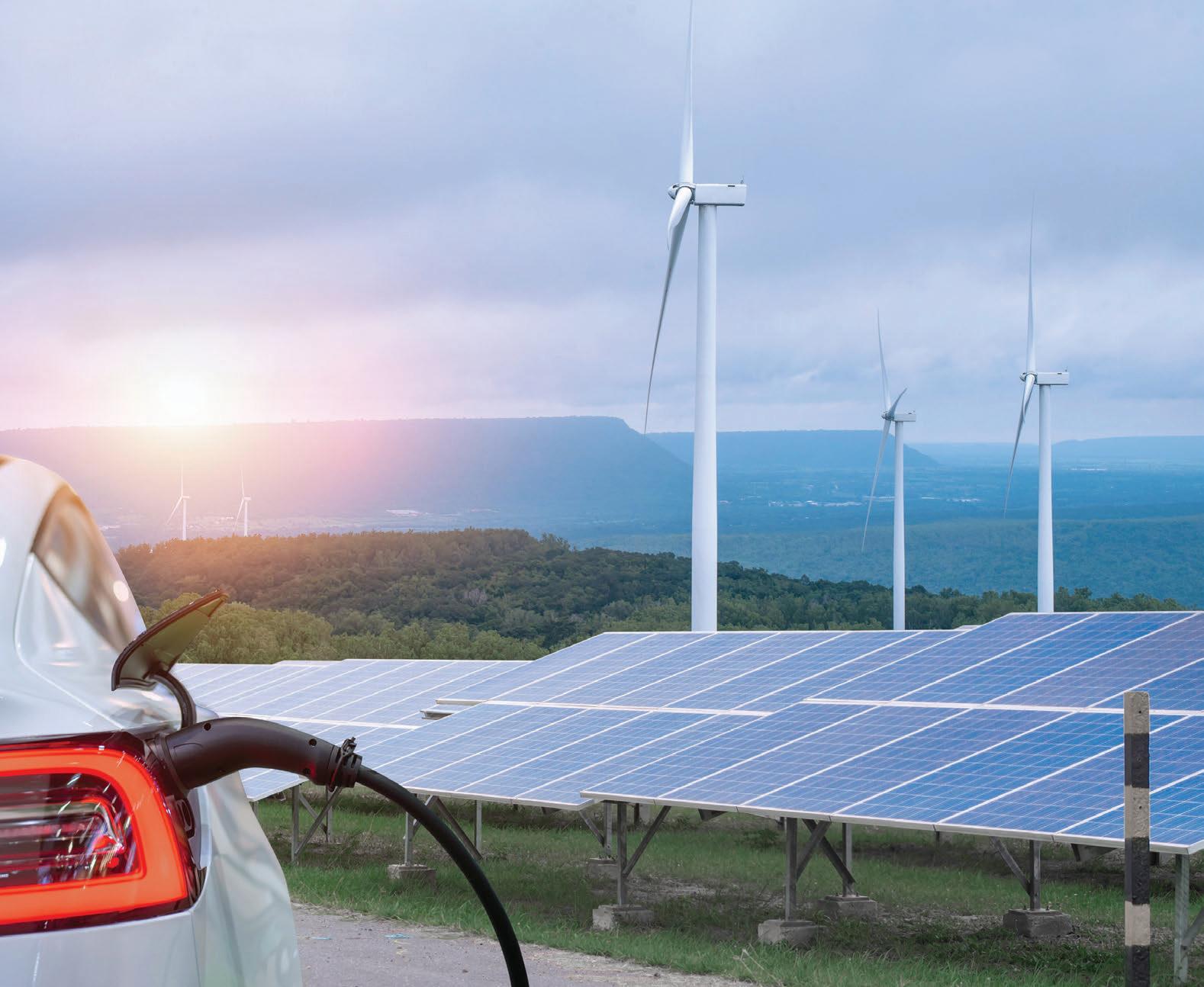
“I’ve been working on the circular assault program for almost three years and it’s really clear how innovative the industry can be.”
Anther initiative underway for Australia is a solar panel product stewardship scheme. The Australian Government is working with the Product Stewardship Centre of Excellence to set up the scheme, with a timeframe of June 2023 for the scheme to be in operation. Turcato said that the New South Wales government has agreed, along with other jurisdictions, to keep the Australian Government informed of the developments relating to the instigation of the scheme.
“This is particularly important at a national level because it will provide consistency to the industry in the solar panel sector,” Turcato said.
“Productive stewardship can incentivise higher participation rates in recovery efforts, meaning that more materials will
be available for recycling or for reuse. This in turn makes the technologies that are being developed more viable both in the technical and economic sense based on the capital investment needed for setting up collection systems and recycling facilities.”
According to Turcato, work has been slightly delayed due to the change of government with the Commonwealth now also considering e-waste as an important topic for consideration.
The next steps in understanding solar panels, batteries and e-waste more broadly, will see the EPA commissioning an e-waste material flow study to get better data on the volumes and the fate of the e-waste in New South Wales.
“This e-waste material flow study will give us projected volume total waste into the future, which will help us with program development and also infrastructure needs,” said Turcato.
“We’re hoping that this e-waste study will also feed back to the Australian government and help them inform any investigations on e-waste that they do, giving it a New South Wales context.”
Turcato said data available on e-waste in New South Wales is limited. This is because facilities that are accepting e-waste are commonly unlicensed, because they’re accepting all volumes, which means they are not required to report materials through to the EPA.
“This research work will be quite exciting for us to complete,” said Turcato. “It will give us a better understanding of e-waste and what we need to do to manage it better in New South Wales and hopefully answer questions like where’s the waste mostly being generated?
What’s happening to e-waste once it’s being disposed off? If it’s being recovered, what’s happening to the materials?”
Turcato said the hope is that these initiatives will guide industry on how to reduce the waste that is being generated, as well as provide options for managing these waste streams before volumes become larger, and also lead to responsible resource recovery to reuse and recycle solar panels and the batteries in a way that complements the country’s growing circular economy.
Daily news updates at www.insidewaste.com.au FEBRUARY/MARCH 2023 INSIDEWASTE 29 // Solar Waste
Solar power is seen as a green alternative to fossil fuels, but will soon create a waste stream of its own.
How the Netherlands is setting the standard on food waste
Netherlands-based Toine Timmermans has many strings to his bow when it comes to food waste. He’s the program manager of Sustainable Food Chains Wageningen University & Research Netherlands, is the co-ordinator of the European Union food waste project Refresh, the managing director of the Foundation United Against Food Waste, and is on the board of Fight Food Waste Limited.
At the recent National Food Waste Summit held in Brisbane, Timmermans gave an overview of how the rest of the world is tracking in terms of reducing food waste. He started off by talking about Champions 12.3, a non-profit organisation that comprises “a coalition of executives from governments, businesses, international organisations, research institutions, farmer groups, and civil society dedicated to inspiring ambition,
mobilising action, and accelerating progress toward achieving Sustainable Development Goal (SDG) Target 12.3 by 2030”. So, what is 12.3?
In 2015, the United Nations General Assembly set out 17 Sustainable Development Goals, which were designed to make sure the planet would be sustainable for all people now and into the future. Number 12 on the list of the 17 SDGs was about responsible consumption and production. There were many targets set within SDG 12, with the third goal (where the moniker 12.3 was born) being, “By 2030, halve per capita global food waste at the retail and consumer levels, and reduce food losses along production and supply chains, including postharvest losses”.
Timmermans gave the audience at the summit an update on how the world is
doing. In some cases, we’re doing okay, in others, not so much. Australia is one of the countries he believes is on the right track.
“This group (Champions 12.3) works with a roadmap that is updated every three years,” said Timmermans. “If you look at it from an optimist’s side, I think there have been positive developments. If you look at it from a worrying side, we are not making the progress needed to meet the targets. But some countries are taking a leadership role in being the front runners in this field.”

He believes that Australia is “definitely” one of the countries in a good position to take, and further strengthen, that leading role. One of the keys to Australia’s success is that businesses are making progress, more so than a lot of other countries. For those countries not doing so well, he believes there are peripheral issues to the
waste industry itself, such as supply chains being affected by COVID-19, as well as the Russian invasion of the Ukraine affecting resources, fuel and energy prices.
However, these issues are also a blessing in disguise. Because resource pricing goes up, it forces businesses, people and countries to look at how they can better use the resources they have on hand – food waste for example.
“This is the perfect time to take a role in getting more momentum on reducing food waste,” said Timmermans.
“Some countries have set up a public/ private collaborative model to work together on meeting this target. However, there are some countries where it is still limited. Looking at the model that’s been applied in most of these countries – the target, measure, and act model – they align with more ambitious targets.”
Daily news updates at www.insidewaste.com.au 30 INSIDEWASTE FEBRUARY/MARCH 2023 Food Waste //
Timmermans believes Australia is one of the few countries ready to take a leading role in reducing food waste.
He also has an opinion on how corporations are responding to issues such as food waste. He said that currently 80 per cent of bigger companies in the world are aligned with the SDG target. However, what is lacking is that of those companies, only one in four is engaging with its suppliers.
“And that’s a key issue if you’re addressing food waste,” said Timmermans. “You need to use a farmto-fork approach and not just look at your own operations. If you look at the measurement side, that’s where most of the progress is made. More and more are working with suppliers on the measurement side, not so much on the target side. Yet.”
Timmermans feels governments are behind the eight ball. Not only in terms of working at scale and setting up public private programs, but meeting targets. For example, the hope was that five years after setting the SDGs, the first countries that were online with them would have met their targets regarding food waste. That hasn’t happened. In Europe, systems are being set up to tackle the issue.
“What is exciting is that all 27 EU countries are obliged to report their foot waste levels,” he said. “Almost all 27 countries now have a yearly structure that reports figures to the European Commission, which is based on structural information collection that shows how much food waste they have and what is happening in the different parts of the supply chain.”
Timmermans admitted that there’s still a lot of uncertainty in the data because it includes things such as the inedible parts of the product like bones and skin, which is why the level of food waste and households is still relatively high.
“Otherwise, the level of household waste would be about 35 per cent when looking at the volumes that are
comparable with the study we did in 2015,” he said. “Europe still deals with about 8890 million tonnes of food waste.”
Another trend happening in Europe is the developing link between reducing food waste and the positive effects it has on the economy. Timmermans pointed out that it gave companies social license, and it was good for the environment, climate change, and dealing with the loss of biodiversity around the globe due to those issues.
He said that based on science, about one-third of greenhouse gas emissions are linked to the food system. And when looking at solutions to mitigate the temperature increases that will be caused by climate change – and to keep within the 1.5 degrees Celsius change outlined by climate change experts so as not to do irreparable damage to the planet –there are two solutions linked to the food system – more plant-based diets and reducing food waste.

“Reducing food waste at the levels we need to is estimated to reduce approximately 100 gigatonnes of greenhouse gas C02 in the air,” he said. “It’s a massive part of the solution.”
From a European governmental level, Timmermans said that the food system is, for the first time, on the agenda of various countries within the Union. Several organisations have also made commitments focusing on how food waste and food system change can add to and help meet all the climate targets.
Although Europe has been the leading light in many things when it comes to waste, Timmermans believes there is still a lot to do. The Netherlands government suggestion that a 50 per cent compulsory reduction should be the first target in reducing food waste has received a lukewarm response from the rest of the continent. But that doesn’t deter the progress he wants to be made.
The Netherlands systemic approach is based on several action points such as measuring the commitment of business; businesses working on innovations and actions across the full supply chain; structuring their consumer activation campaign; and a policy program to change the rules to make it possible for all organisations to contribute with innovations that fit into a circular economy.
“What is important in those action points is the measurement,” said Timmermans. “[The Netherlands [is] one of the first countries in the world where all retailers report to us, and we publish a public benchmark. That’s probably the most exciting part because that’s when retailers are competing on how they can scale up the best innovations that will help the country meet the target. We can say that Dutch retailers are now on their way to meet the target of 50 per cent reduction.”
He said it also drives change because these actions put a spotlight on those institutions and industries that are not doing their part. He sees these innovations as a win-win situation.
“[The Netherlands] largest retailer announced that they will increase their targets,” he said. “They will focus on reduction of Scope three emissions from 15 to 45 per cent, meaning they will take responsibility for everything that is happening in producing the product and the full lifecycle. I think that is a very strong statement that should be followed clearly but also should be encouraged when we look at these topics. There are a few countries leading the way and Australia is in a perfect position to address all these challenges working together to meet the target of household food waste.”
Daily news updates at www.insidewaste.com.au FEBRUARY/MARCH 2023 INSIDEWASTE 31 // Food Waste
Reducing food waste to the levels needed will reduce approximately 100 gigatonnes of C02 in the air.
Sustainability drives the purpose of Hidden Sea Wines
WITH sustainability a key driver of regional businesses, former AFL footballer Richie Vandenberg is taking Hidden Sea Wines into uncharted waters by aiming to remove the equivalent of one billion plastic bottles from the ocean by 2030.
“I learned to live with purpose. The way we define it is, who you are? You have one eye on what’s in front of you and the other eye on a higher purpose, a higher meeting,” he said.
Vandenberg is a man with a purpose. He is one of the two co-founders of The Hidden Sea. Vandenberg is a fourth generation grape grower with more than 25 years with his family enterprise. Originally from near Mildura in northwestern Victoria, he is now based on the Limestone Coast of South Australia.
“While playing AFL in Melbourne, I developed a passion for wine, particularly premium wine,” said Vandenberg.
“I liked some of the Cabernet coming out of the Coonawarra region. It also turns out that one of my ancestors, Ari Vandenberg, was shipwrecked off Robe in the 1850s. Our vineyards are now in Guichen Bay, creating a family tie to the region. I thought it was a great opportunity for us to get a winery on the Limestone Coast, and we took it.”
As an avid ocean kayaker, kite surfer, and paddle boarder, he’s seen firsthand the destruction that plastic waste has brought to ecosystems around the world. The Hidden Sea mission was born from this experience. For
Vandenberg, it is about living with a higher purpose. When he wanted to start the Hidden Sea, he knew it would be more than just wine.
“I told Justin (Moran, fellow founder) we have got to build a brand with
purpose,” Vandenberg said. “We didn’t know collectively what that purpose would be, but we knew that’s what we wanted to build. That evolved because of where the Limestone Coast is and where the winery was situated. Coonawarra and the region was once covered by the Great Southern Ocean, which is the hidden sea. There’s the story of the whale – a 26-millionyear-old fossilised whale sitting below a vineyard in Wrattonbully on the Limestone Coast – we had this real provenance story tied to the ocean.”
Moving from a purpose to sustainability
Both Vandenberg and Moran are lovers of the ocean. In the case of Vandenberg, he has taken part in extensive kayaking and kite surfing around the world. With that time in the ocean, they both learned more about the issues with the world’s waterways.
“Over time, we started supporting several ocean-based charities, including the Lonely Whale Foundation and heroing the Stop Sucking campaign. We really wanted to do something tangible that could galvanise a tribe of people around a goal,” said Vandenberg.
That goal is to remove the equivalent of one billion plastic
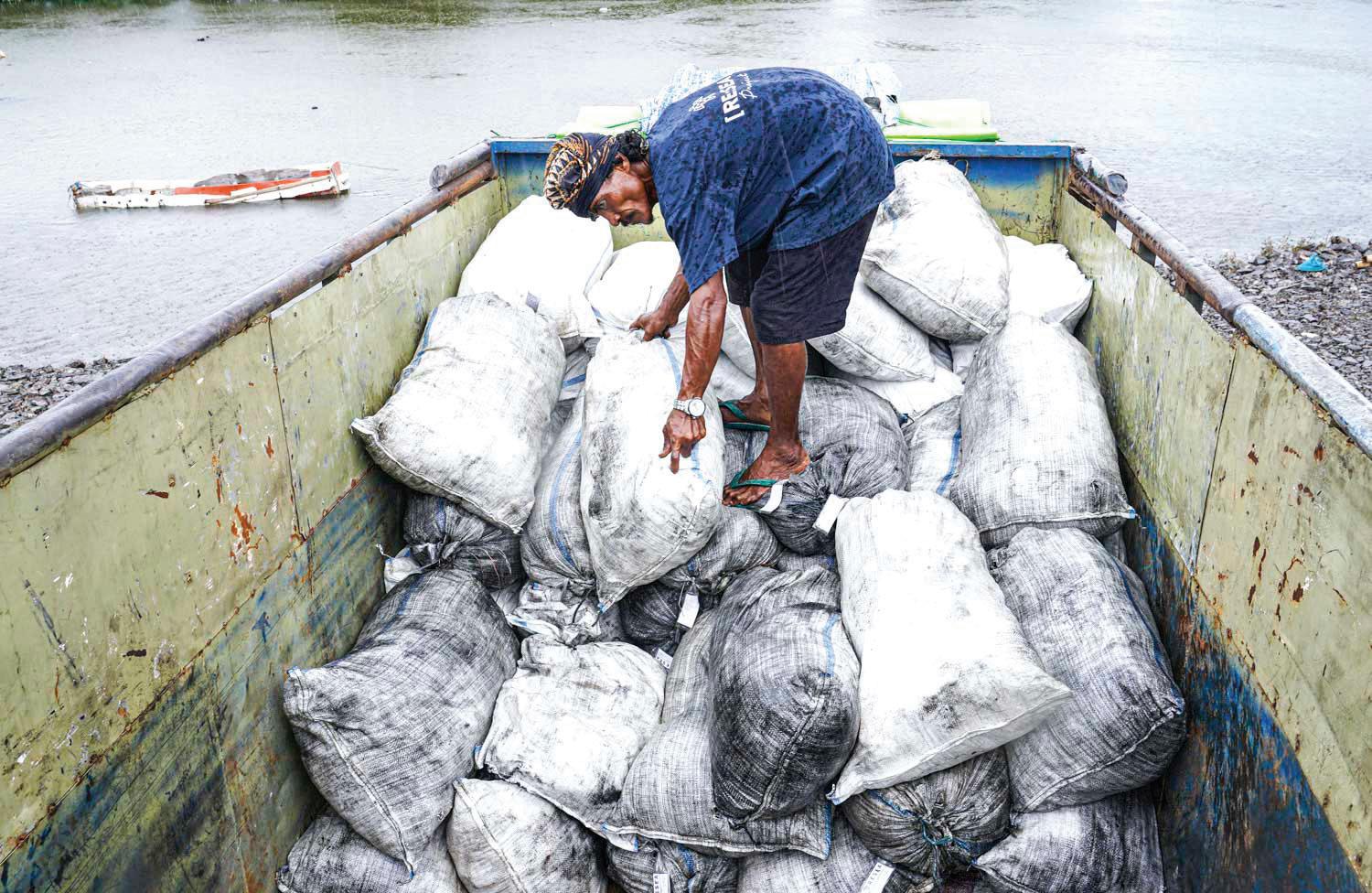

Daily news updates at www.insidewaste.com.au 32 INSIDEWASTE FEBRUARY/MARCH 2023 Sustainability //
The Hidden Sea initiative has already removed more than 18 million containers from the ocean.
Sorting and processing the containers occurs at a local level.
bottles from the ocean by 2030. For every bottle of the Hidden Sea wine purchased, their partners remove and recycle ten plastic bottles (or their equivalent) from the sea. Since July 2020, they have removed more than 18.5 million plastic bottles from the ocean through partners.
Vandenberg acknowledges that he cannot pick and choose what they are taking from the ocean. However, he knows the importance of what he is talking about.
“We are not just taking plastic bottles from the ocean; we are taking any plastic our team comes across,” he said. “The reason we talk in terms of plastic bottles is that people understand what a plastic bottle is. It makes the messaging very simple and raises awareness far more effectively. At the same time, talking about one billion plastic bottles shows a tangible volume. People understand that it’s a vast volume.”
The ReSea Project is one of its primary collection partners. It has 47 fishermen that collect plastic from the ocean every day, which is tracked through blockchain technology, where it is bagged, tagged, and sorted. The plastic is recycled and re-purposed in Indonesia, with nothing ending up in landfills.

In terms of what is being collected from the ocean, it is primarily plastic bags and plastic bottles. Despite the growing bans on plastic straws worldwide, this has yet to occur in Indonesia. As a result, the fishermen are also collecting a lot of straws. How else does Hidden Sea focus on sustainability?
When it comes to waste, Vandenberg has worked hard to create a sustainable business, not just financially but environmentally. The winery is solarpowered and is due to receive its carbon-neutral accreditation soon.
He is conscious of eliminating or minimising waste throughout the production process.
“We recycle all the wastewater on-site. Any water we cannot recycle goes out to water the blue gum forests behind the winery,” said Vandenberg.
“At the same time, we are very conscious of how we use water, given that making wine is a water-intensive process. We have changed how we clean the bins and wash the tanks. We’ve introduced crossflow filters that require a hell of a lot less water.”
Vandenberg was keen to point out numerous areas across the winery where they look at their waste streams.
He cites the example of grape marc,
also known as pomace. It’s the solid waste left over from pressing grapes into wine, usually made up of the grapes’ skins, pulp, seeds, and stems.
“We turn that grape marc into either feed for the animals or organic composts,” he said. “It’s not just about collecting plastic bottles; we have a whole sustainability philosophy. With the support of Sustainable Winegrowing Australia, we are educating ourselves on how to be more sustainable. We reflect on the last 12 months every year and ask if we have improved our sustainability credentials.”
The winery’s glass bottles can be recycled infinitely, with the labels laser-printed onto them. The waterbased organic inks are burned off in the recycling process. They use recyclable and sustainable cardboard cartons that are 100 per cent recyclable after use.
Sustainable Winegrowing Australia
Vandenberg talked about the role that Sustainable Winegrowing Australia can play for consumers and wholesalers. He believes it can play a vital role in creating a nationally trusted standard.
“They are making it easy for everyone to understand a standard for everyone to adhere to,” he said. “I
think it’s a really important element of sustainability in our industry. It’s very proactive, which I commend the industry for.”
Sustainable Winegrowing Australia has more than 1100 members, with more than 270 of them being certified members. Vandenberg believes the majority of vineyards across Australia are seeking certification, but it will take time and labour for the certification process to be complete.

“The most important thing for them right now is to get numbers on board, which is what they are doing,” he said. “Once they’ve been able to do that, they need to own that space and develop the trust in the mark.”
Hidden Sea has grown rapidly in the past three years. It has several other products to potentially look at while it remains in its proof-of-concept phase. Vandenberg had to find out if enough consumers cared about removing plastic from the ocean.
“We feel like we have proven that over the last three years, we have gone from 3000 to 100,000 cases,” he said.
“The consumers are speaking with their feet or their wallets. It’s clear that people get sustainability, and we give people a choice at the purchase level.”
Daily news updates at www.insidewaste.com.au FEBRUARY/MARCH 2023 INSIDEWASTE 33 // Sustainability
Richie Vandenberg’s love of the sea is one of the main drivers of his aim to remove more than one billion containers from the ocean.
Getting buy-in from the locals has been one of the keys to success.
Narrative needs to change if goals are to be achieved
TWENTY-FIVE years is a long time in one industry, especially if you fall into it accidentally. This happened to Dr Karl Baltpurvins, the current CEO of Pure Environmental, a fledgling company making waves in the waste industry.
Baltpurvins had another agenda when he accidentally fell into the industry after getting his PhD in environmental chemistry. He wanted a life whereby he could follow his chosen career but live in his home town of Newcastle where he thought the work/ life balance could be best achieved.
“We moved to Sydney, and one weekend we went to Mudgee for wine tasting and loved it,” he said. “I asked my in-laws to keep an eye out for jobs for chemists in Newcastle. A tiny advertisement came out for a plant chemist’s job with Cleanaway on Kooragang Island, and I applied for it. I later discovered that my CV got thrown in the bin because I was overqualified.”
Luckily for Baltpurvins, it got taken out of the bin by a friend from
university who was working there. One thing led to another, and soon he was working in the waste industry.
“At the time, there were very few professional, technically qualified people in the industry,” he said. “The really pleasing thing to see is that, over the years, that has changed dramatically, and it needs to continue to change. We need more scientists and engineers who see waste as an attractive career.”
After spending the best part of a decade, firstly with Toxfree then Cleanaway, Baltpurvins took up the Pure mantle after spending 12 months at Entech Solutions. One of the reasons he was attracted to the role was that Pure would be offering services designed to help Australia reach its circular economy goals.
“Pure is very community and employee focused, which resonated with my values,” he said. “The Pure business was established taking into account the changes within the industry that were going on in both the
international and Australian context, particularly with the restrictions on exporting material. It’s here to help build a resource recovery sector effectively. It focuses on circularity, right from the word go without any of the existing baggage.”

When he started in the industry more than two decades ago, Baltpurvins says there was little or no interest in landfill diversion. Waste decisions were mainly based on financial outcomes. While these outcomes are still important, so is an enterprise’s social license. Some companies still struggle with the concept. In Baltpurvins’ opinion, the uptake needs to be quicker. He said the past five years had seen an increase in companies thinking more about the impact of what is happening to waste. Cold, hard stats show how far there is to go.
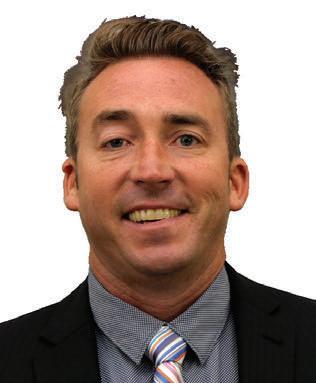
“The 2021 Circular Gap Report identified that only 8.6 per cent of the world’s resources are touched twice, which is a remarkable statistic,” he
said. “There is a huge opportunity for resource recovery to improve in an Australian context. The Australian waste management policy has set that framework and targets around landfill diversion in a tight context. Setting those respective targets has provided a framework that’s been missing for a long time.”
Daily news updates at www.insidewaste.com.au 34 INSIDEWASTE FEBRUARY/MARCH 2023
Thought Leadership //
Infrastructure spending by governments and private enterprise is needed to help reach mandatory recycling targets.
Baltpurvins said there was little interest in diverting waste from landfill when he first started in the industry,
The same report stated that half a trillion tonnes of virgin material were extracted from the Earth between 2015 and the report’s publishing. According to the report’s authors, 70 per cent of that material cannot be safely replenished. A key to getting those stats changed, Baltpurvins believes, is that politicians and business owners cannot take the publics’ opinion for granted when it comes to waste. That has been evident over the past couple of years.
“Why the waste landscape is changing is down to community expectations,” he said. “In my view this has been fed through to the government. And if you have a look at why that happened, it was largely based on the restrictions created by the China Sword policy. And then, there were community impacts associated with the fires and illegal dumping activities. Those two things have culminated in this massive regulatory change, positioning change, and resource recovery.”
Speaking of resource recovery, Baltpurvins is an advocate of changing the narrative around waste. This is in line with several other players in the industry who have suggested that it’s time to change the narrative on what the industry is about.

“I’m educating every stakeholder in our industry that we’re advocating
ourselves as a resource recovery business, not as a waste management business anymore,” he said. “That’s the starting point. You have to set goals around resource recovery and have
that fundamental focus. We need to recognise that a residue is produced. There will always be an industry element that must be focused on managing that.”
He also sees the benefit of deconstructing the outcomes and working backwards.
“You look at the products that can be manufactured, and then you work towards what materials can be beneficially reused or processed to make those products,” said Baltpurvins. “If there is no product that can be made, then we need to accept that there needs to be some other alternative for those that are an acceptable outcome, whether it be landfill or waste to energy. But it needs to be product focused; you have to start with a product, and more importantly the products markets.”
Baltpurvins would like to see more investment, not just from governments but from private enterprises, too. However, it’s not lost on him that the development cycle to get a plant up and running is not quick.
“It’s a very long development cycle – whether it’s a waste to energy plant, FOGO processing facility, a transfer station or hazardous waste facility,” he said. “It is a barrier to entry in terms of costs getting higher to establish these facilities. There is one benefit in that we are getting high-quality facilities. To be honest, the industry hasn’t helped with the number of fires and other major incidents we’ve had.”

As for Pure itself, what is the company trying to achieve over the next 12-18 months? Baltpurvins said its remit is not to be everything to everyone. The company wants to remain focused on specialist resource recovery facilities that can help protect communities while creating a more circular economy. He believes one of the offsets will protect communities from bad environmental and human health outcomes.
“My wish list includes that the trends that are occurring at the moment continue with the government mandates that are directing waste away from landfill, but for the right reasons,” he said. “Also, we have a national planning environment that lends itself to supporting businesses developing critical infrastructure for Australia. I’d also like to see more influence on things like product stewardship schemes and those funding support mechanisms that provide a carrot to help with investment decisions moving forward.”
Finally, what does he see on the horizon regarding having enough skilled personnel to take the industry to the next level?“I do a lot of work with universities encouraging graduates to look at the waste industry or the resource recovery industry as a bona fide career choice,” he said. “Because a lot of people don’t see it as that. Over the past year, waste has become sexy. It’s a fantastic industry and one that is going to get bigger.”
Daily news updates at www.insidewaste.com.au FEBRUARY/MARCH 2023 INSIDEWASTE 35 // Thought Leadership
Reliance on virgin plastic will be lessened if the right recycling infrastructure is put in place.
Is branding important in waste? Yes it is. Here’s why.
ADAM Ferrier’s father’s warped sense of humour set him on the road to have dual interests in marketing and psychology. A pack a day smoker all his adult life, when Ferrier’s father passed away he wanted his coffin decked out in the colour of a packet of Marlboro Red cigarettes. Once the eulogies were read, and funeral over, his last request was to be cremated “so he could light up one last time”, said Ferrier.
With that kind of modelling behaviour, it was no wonder the dual interests took hold. During the recent National Food Waste Summit held near the end of 2022, Ferrier talked about building a brand and creating behaviour change as it related to the food waste industry.
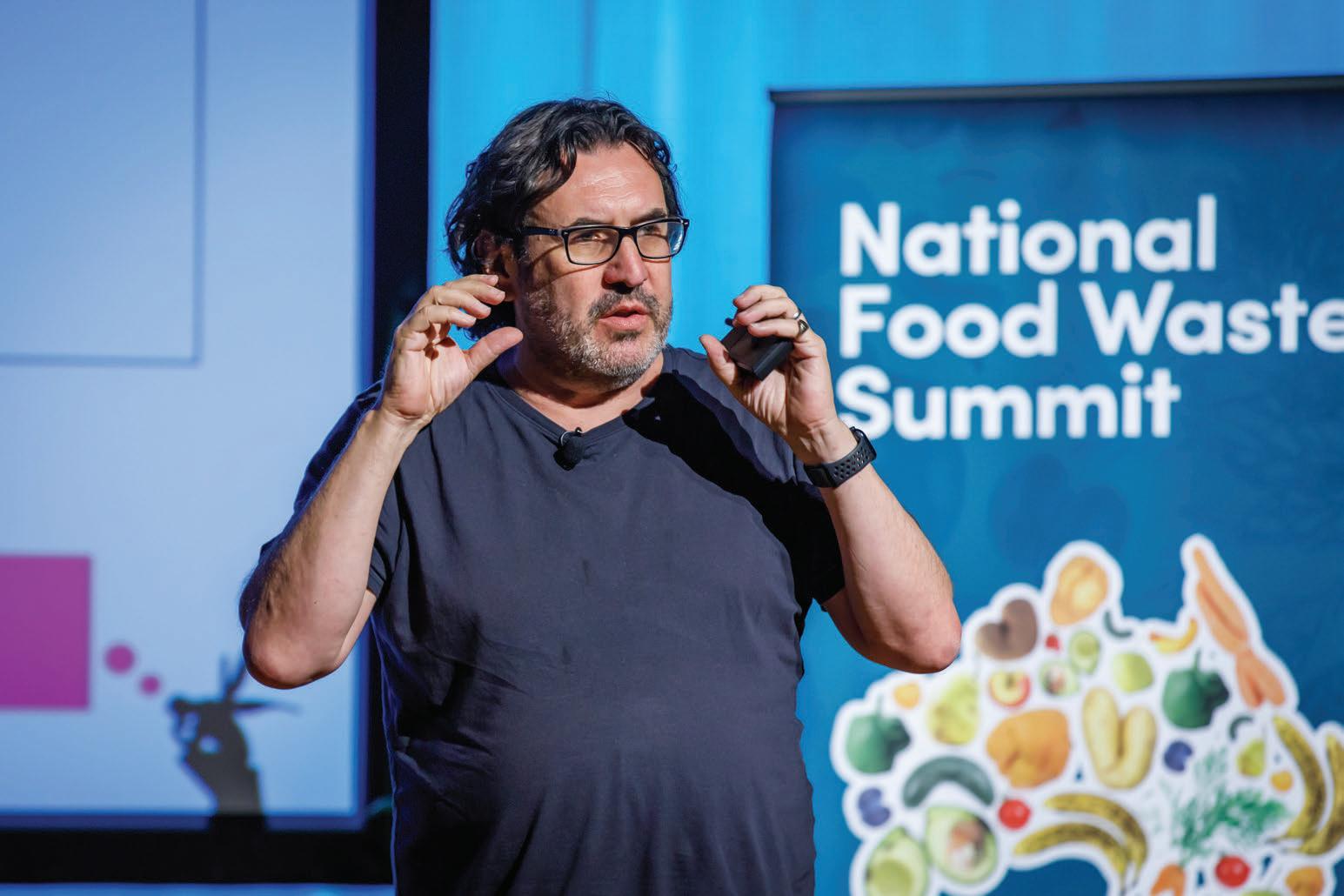
Ferrier’s own infectious sense of humour was on display at the event as he took the audience through the throes of how to create a brand/movement that will help with the aforementioned behaviour change. The resource recovery and waste sector definitely has an image problem. It is changing, slowly, but when most people think waste, they think smelly landfills, garbos picking up your
rubbish at 5.30am, and litter spread around some of the country’s pristine environments. Ferrier is confident that this image can change. The industry just needs to get the fundamentals right, and the rest will follow. But you have to get those initial steps right, as Ferrier explained to a rapt audience.
“I got my master’s in clinical psychology on identifying the underlying constructs of cool people, and dined out on that for years,” he said. “I’m now too old and fat to keep on talking about that but I do know what makes people cool. And I’ve always been into brands and behaviour change. That’s what I do. I want to talk about how to build a brand, and then how to create a movement. And they’re the key things that the food waste industry needs to do.”
Branding is important because it sells ideas and influences outcomes in society. Ferrier gave examples of wellknown brands that sell for more than generic models that have exactly the same outcome.
“You’re buying the same thing, but because it’s a nice brand, you think it makes you look socially acceptable when
you’re having a dinner party, or it makes you feel like you’re more fancy,” he said.
Ferrier pointed out that brands change consumer behaviour and that well-known brands do a lot better due to their ability to be in a person’s psyche because they’ve been around longer than others. It’s hard to build a brand, but once it gets there, that’s half the battle won.
Ferrier said within his agency they talk about VX before EX before CX, which translated means getting the brand experience right, then getting the employees to buy into that brand experience, and then get everybody else around to buy into it, too. The same thing happens with a movement or with any kind of thing that’s branded, he said.
The key to such branding is that they all have a clear meaning.
“If I asked you to donate to one of two charity organisations that exist in Australia – both combating homelessness – one being the Salvation Army the other being Dignity, you’d probably choose the Salvation Army,” he said. Why the Salvation Army? Because it has the stronger brand.
To illustrate the point further, Ferrier showed the audience MRI scans of brains being shown different brands. The scans highlighted that when shown a well-known brand, the brain has more activity – probably due to recognition – than it does when shown a lesser or unknown product.
He also pointed out that good brands deliver on their promise again and again, and they have what he called clear ‘brand codes’. He gave the example of Coca Cola, which has the colour red, the sans serif font, and the red ribbon just to name a few of its brand codes. All of these things help identify what the brand is trying to put across and also relates to the final piece of the branding puzzle.
“You have to get your brand as famous as possible no matter what, no matter what your marketing budget is,” he said. “Even if you’ve got $0 marketing budget, just realise that every thing you do is marketing – from the types of people you employ to your supply chain, to the vans you drive – everything is an opportunity to build a brand and build brand buying. Within your category,
Daily news updates at www.insidewaste.com.au 36 INSIDEWASTE FEBRUARY/MARCH 2023 Food Waste Summit //
Adam Ferrier has spent most of his adult working life putting positive brand image at the forefront of peoples’ minds.
the more famous it is, the more price sensitive it is, the more that it increases preference, the more margin you can extract etc, etc.”
At the end of the day, the industry is trying to change peoples’ behaviour. It is not an easy thing to do, especially when relating to a source product that nobody wants such as food waste. It’s easy enough to throw things away – whether as a piece of litter, or into a bin – and say ‘it’s somebody else’s problem’.
“We’re all in the behaviour change business,” he said. “No matter what we do – whether we’re trying to get our kids to eat their vegetables, or whether we’re trying to get people to not waste food, whether getting people to try buying a Coca Cola – whatever it is, it is all behaviour change.
“Get rid of all the earnest crap around behaviour change and just do something that appeals to people; that resonates with them.
“It’s hard culturally, for us to take behaviour change really seriously and then flip and go, ‘right, now what’s actually going to engage with people’, rather than being overly earnest about
whatever it is we’re trying to get people to do.”
Ferrier asked the audience how they would get somebody to like them. With a variety of answers being espoused none of them hit the mark. In what seems almost a weird sort of reverse psychology, he said it was to get them to do something for you.
“Because if you can get somebody to act towards anything, they have to rationalise their thoughts and feelings to make sense of that behaviour,” he said. “If you go to stand-up comedy, they’ll make you clap before the show. And by clapping, you’re investing of yourself into those people, into that comedy, and you’ll start to enjoy more.”
The audience are doing something for you before they’ve even seen the event. He said to really get people motivated with regards to behaviour change, try
three different things. The first is to create a reality television show. He was being serious. And while this might at first seem incongruous with the waste industry, he did point out how successful it is in other arenas. The Block, for example, has revolutionised the home renovation industry – one now worth about $16 billion to Australia’s GDP. Then there is MasterChef and the cooking industry. Bondi Rescue educates people about beach/swim safety.
“Think about what it is that you can gamify within the food waste industry, and if MasterChef can do it, then so can you,” said Ferrier.
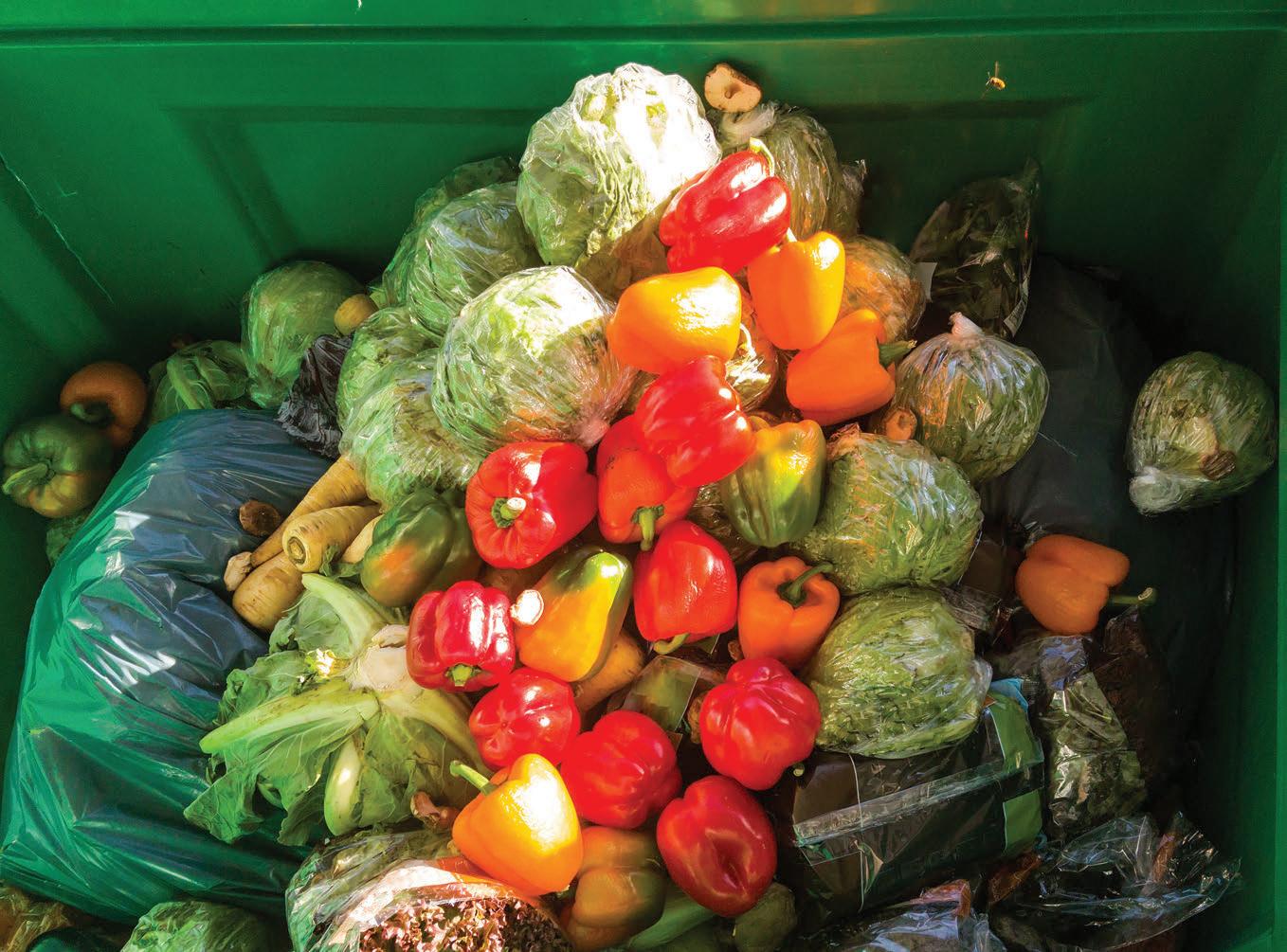
The second is to put pressure on a person, but not just any person. It has to be somebody who is important because they will be the motivation behind getting the idea up and running. “It doesn’t really matter so much about
what that one person’s doing,” he said. “Just the fact that you’re getting everybody else to collectively get involved in your particular case is good enough and that person will be the catalyst.
The third and final way is to find somebody who is reasonably influential and get them to pressure those that are really influential. This doesn’t necessary have to be somebody famous, but it could be somebody who has sway over a community and is respected among their peers.
Ferrier admits that food waste in particular has an uphill battle to getting the branding right to get people on board.
“I don’t underestimate the challenge you have,” he said. “You’re playing against quite deep fears around loss, around getting less, around concepts like disgust and so forth in terms of food waste. It’s a big challenge that you have. People don’t care about other people. People care about themselves and so having some kind of social cachet or some kind of coolness associated with [a brand] is absolutely crucial.”
Daily news updates at www.insidewaste.com.au FEBRUARY/MARCH 2023 INSIDEWASTE 37 // Food Waste Summit
“No matter what we do – whether we’re trying to get our kids to eat their vegetables, or whether we’re trying to get people to not waste food, whether getting people to try buying a Coca Cola –whatever it is, it is all behaviour change.”
Food waste has an image problem but if branded correctly it is possible to bring the public onboard to solve the issue.

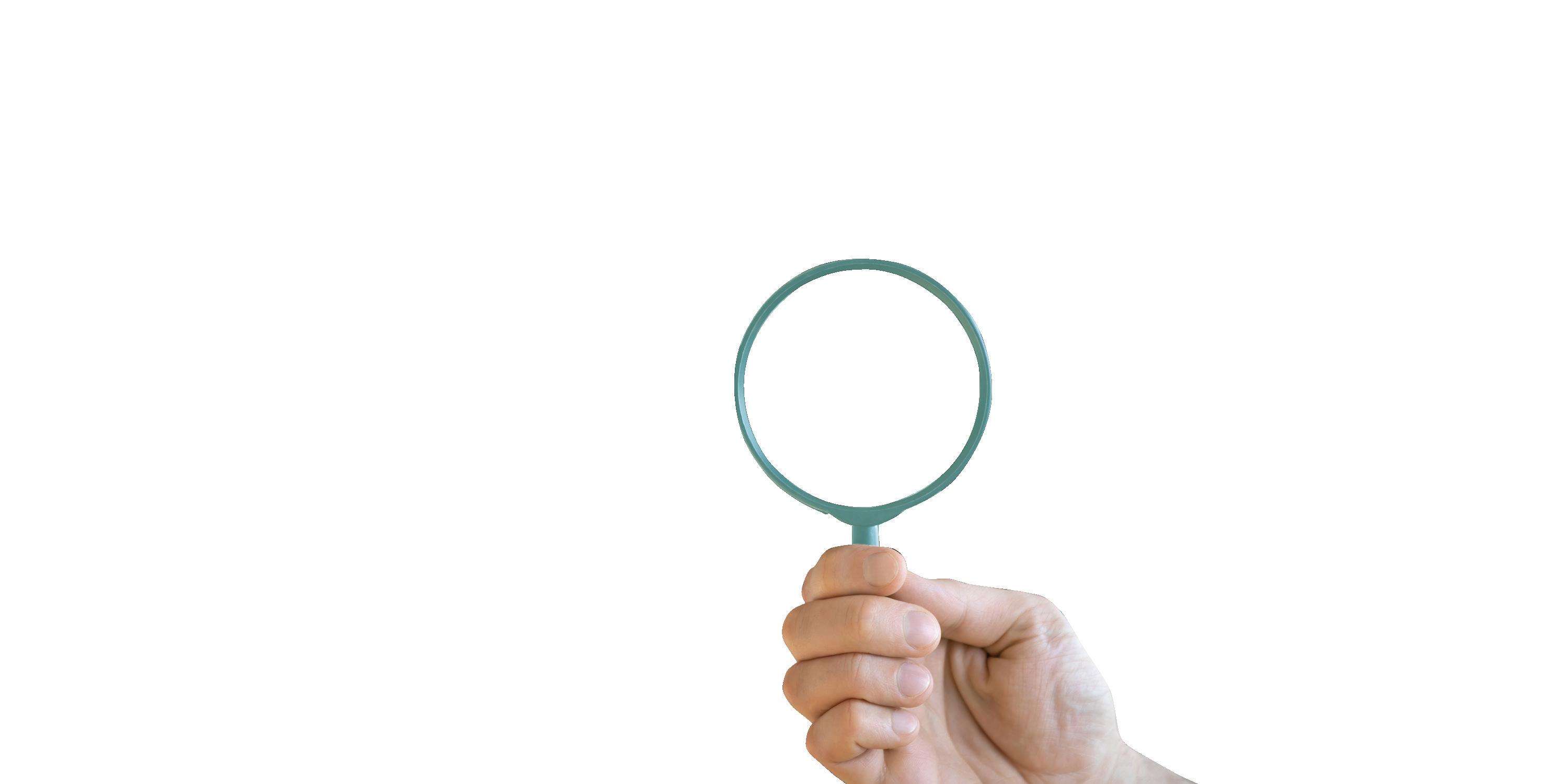
Connecting talent with industry. powered by careerone hiring.insidewaste.com.au ADVERTISE JOBS TODAY
Improving plastic pipe sustainability now and into the future
PLASTIC pipes and fittings have transformed the way we live, delivering essential services and utilities to our homes and communities.
Across a range of industries, from civil and domestic infrastructure to agriculture, mining and gas, plastic pipes and fittings play a critical role. They’re effective, efficient, and safe.
The Plastics Industry Pipe Association of Australia (PIPA) was founded in 1999 and is the peak industry body representing manufacturers and suppliers of plastics pipe and fittings, plastic resin suppliers, fabricators, pipeline installations, rubber seal ring manufacturers, along with training and certification bodies.
As a non-profit association, PIPA works to promote the appropriate and contemporary use of plastic pipes and fittings throughout Australia through four key pillars – advocate, educate, technical and sustainability. One of the key focus areas for PIPA is to educate on the differences between plastic pipes and fittings to other plastics, such as single use.


“Not all plastics are the same and too often plastics pipe systems are mistakenly put in the same category as single use plastics,” says Cindy Bray, Executive General Manger.
“Pipes are long-life products, not single use, made from materials engineered to be robust, reliable, recyclable with a service life in excess of 100 years.”
With exceptional service life, most plastic pipes in use are still in their first life cycle. This makes comparisons between annual plastics consumption and the total annual plastics recovery misleading for plastic pipes and fittings. PIPA and its members are acutely aware of the problem society faces with plastic pollution and for more than two decades the industry has aimed to recycle the maximum amount of usable plastic pipe
and other suitable materials into new plastic pipes.
“We are committed to maximising the use of post-consumer and preconsumer recycled content in products while ensuring that products remain fit for purpose,” Bray said. “Recently PIPA published a discussion paper, Use of Recycled Materials in Plastic Pipes, and industry technical guidelines POP208 “Specification and Testing Guidelines for recycled materials suitable for nonpressure plastic pipe applications. These documents provide further education on plastic pipes material characteristics and performance criteria when using recycled materials.”
Pipes manufactured with recycled content must conform to the relevant Australia Product Standards, just as pipes manufactured from virgin materials do. This is particularly important in infrastructure applications where reliable performance and long service life are primary considerations. Plastic pipes must be fit for purpose, regardless of their composition.
Bray said there is already now capacity to increase the use of recycled material across a range of non-pressure pipe products when suitable waste stream volumes become available – we already have the solution. Special technology known as multi-layer or sandwich construction for PVC pipes allows recycled material to be used in the core layer of the pipe between the inner and outer layers of virgin material. This means the core layer can be any colour, density, or formulation of rigid PVC material.
Although there is low volume to recover due to the long life and integrity of plastic pipes systems PIPA and its members are taking practical, meaningful steps to minimise the impact of plastic pollution. Bray said PIPA is working together with broader industry to divert suitable plastic material from landfill

into long-life, recycled pipe products that meet the relevant Australian and international standards.
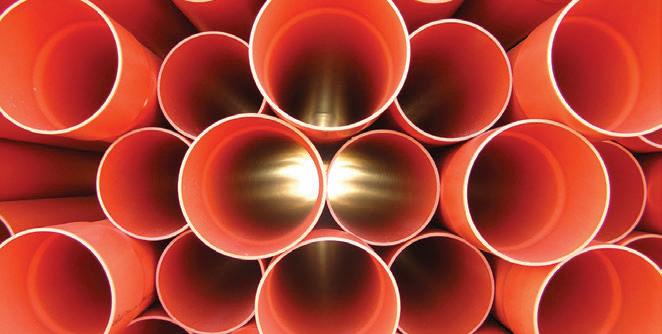
She said the plastic pipe industry is proud of its environmental sustainability initiatives from best-practice material sourcing, manufacturing – with processes designed to reuse any scrap materials to make other pipes, end-of-life product stewardship and other programs such as:
PIPA’s Plastic Recycling Program
Due to the low volume of plastic pipes in the waste streams, the industry is always looking at ways to work collaboratively with waste management companies, major distributors of products and specific suppliers/clients to collect volumes of plastic pipes viable for designated recycling. PIPA has established a Plastic Pipes Recycling Program working with a variety of partners across Australia providing information and locations for end users to deliver their no longer needed pipes and fittings.
Agreements with major plastic pipe users
Forming direct agreements with major plastic pipe users for the recovery of off-cuts and product at the end of its in-use phase.
Education and pilot programs
PIPA has engaged with other industry stakeholders within the plumbing sector to establish education and pilot programs to increase awareness on the sustainability of plastic pipes and develop the behaviours of appropriate disposal of off-cuts.
Bray explains: “Programs such as the Construction Plastics Recycling Scheme in Queensland and the Plumbing Industry Plastic Recycling Scheme in Western Australia not only educates but also provides the industry with valuable insights, behaviours and greater understanding of the volume of available plastic pipe off-cuts and fittings from building, construction sites and education training facilities. This data will enable us to paint a true picture of material available, enable us to expand these types of programs more broadly and support better consumer investment and policy decisions.”
Bray said success of these programs can only be achieved through collaboration of all key stakeholders within the industry from associations, manufacturers, merchants through to end users. Everyone has a responsibility and a role to play in diverting plastic pipes and fittings from landfill to contribute to a responsible and sustainable future.
“Through the whole lifecycle –manufacturing, use and disposal –the plastic pipe industry has and will retain its long-standing commitment to improving sustainable practices and outcomes, in a way that benefits all Australians,” she said. “Australia’s vast landscapes require large-scale, special-purpose systems to move water, wastewater, gas and to protect underground networks of power and communication cables. Plastic pipeline systems are robust and longlasting, providing reliability now and into the future”.
Find out more about PIPA www.pipa.com. au and recycling initiatives https://pipa. com.au/recycling/
FEBRUARY/MARCH 2023 INSIDEWASTE 39 // Plastics Recycling
PIPA is forming direct agreements with plastic pipe users, for the recovery of off-cuts.
A crew collects PVC pipes to be recycled as part of the Construction Plastics Recycling Scheme.
Facility under development offers answer to soft plastic problem
WITH all the ballyhoo about the REDcycle program being suspended, and thousands of tonnes of soft plastics being stockpiled in various warehouses throughout New South Wales and Victoria, one take-out from the event is that there are not enough facilities to recycle soft plastics.
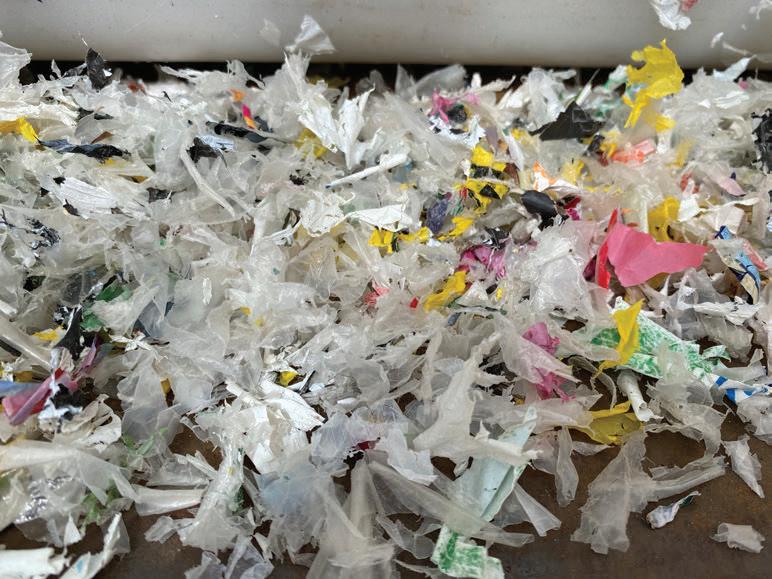
That could be about to change in the near future – i.e. early 2024.
Licella is a company that uses hydrothermal liquefaction, or HTL, an innovative form of advanced recycling.
Licella’s HTL technology is called the Cat-HTR (which stands for Catalytic Hydrothermal Reactor). This method of processing uses hot, pressurised water to recycle carbon from plastic, while using less energy than other methods such as pyrolysis and gasification. It also
moves hydrogen from the water into the newly created oil, making the oil easier to upgrade in a conventional refinery with much lower impurity levels. Licella has been developing the process over the past 14 years, and it’s now being built atscale commercially.
“With the Cat-HTR we can create a high-grade oil, which is suitable to go back into the local plastic supply chain without any further purification steps, which is a big point of difference against pyrolysis,” said Licella marketing director Andrea Polson. “We operate at lower temperatures as well because we use water, so it’s a very efficient process. And we can get a higher yield of oil from a broader mix of plastics. We don’t need to do a huge amount of separation or decontamination at the front end.”
Polson points out that this decontamination doesn’t include large chunks of metal, but HTL can process bits of paper or organics that are stuck to the plastic.
Cat-HTR is the brainchild of Dr Len Humphreys (Licella’s CEO), who believes the technology will go a long way to solving Australia’s soft plastic pollution problem. But before setting out to conquer the world, the company needed a place to process the plastics.
“The first step was a feasibility study, which we did in 2021,” said Polson.
“This confirmed that the opportunity was there, that there were economic and environmental benefits and that we could create a circular economy for plastic locally.”
The company is about to start building the first Australian processing plant in Altona, Victoria. The area was chosen because a lot of the existing plants in the area are part of the refining petrochemical industry.

The site was an old Dow Chemical plant, which is zoned SUZ3 for petrochemical manufacturing.
The target processing capacity for the facility will be 120,000 tonnes a year. The initial piece of kit will process 20,000 tonnes a year of waste plastic but will soon scale up to 70,000 tonnes, as Licella will add a 50,000-tonne module once the next approval comes through from the Victorian EPA.
And where will the feedstock currently come from? Even the recently discovered stockpiled REDcycle plastics only came in at 8000 tonnes.
While the warehouses in NSW and Victoria are full of soft plastics from the REDcycle program, that is not even 10 per cent of what the new facility will need to meet its annual targets. Also, other companies are coming online with technologies that will also be turning plastic back into its original state.
Daily news updates at www.insidewaste.com.au 40 INSIDEWASTE FEBRUARY/MARCH 2023 Plastics Recycling //
A concept picture of what the new Altona processing plant will look like once completed.
It is soft plastics like these that have become a troublesome waste stream – that is about to change.
“That’s the most challenging piece of the puzzle,” said Polson. “We’ve got relationships with the downstream processors. We could sell the oil many times over; that’s not the problem. Getting this feedstock will be the biggest challenge. I think for the first stage, it won’t be a problem as there’s tonnes of post-consumer plastic. It’s when the facility ramps up to scale that this issue may arise. It shouldn’t go to waste-to-energy when higher value applications are right around the corner.”
But there is some good news.
“There is the opportunity to capture less attention-grabbing but very problematic streams of plastic,” said Polson. “For instance, agricultural plastics, plastics from other product stewardship schemes, and back-ofhouse C&I plastic are burned or buried in huge numbers every year because their recycling options are limited.”
Polson said Licella is hoping for the plant to be operational within the next 12 to 18 months, but there are supply chain issues that are left over from COVID-19. However, she is optimistic that it will be up and running sooner rather than later.
“The good thing about having a global footprint is that even though we’re an Australian company, the
licence for the technology outside of Australia sits with an organisation called Mura Technology,” she said.
“We work closely with them, and they have a global alliance with KBR and Dow. They’ve already commenced construction in the UK. And they’ve also done all the engineering work for the plants that they have under development in Southeast Asia.”
Patience is also needed. Polson wishes the facility was up and running now because currently there is no facility that can take the amount of plastics that need to be processed.

“If we were online now, we could take all [the REDcycle stockpile],” she said. “We’re processing a couple of big bales of the REDcycle material as part of our trials up in Somersby in the Central Coast.”
How has Licella found dealing with the EPA over the approvals process to get the right permits to build the plant?
“Victoria’s EPA have been pretty good and deserves credit for leading the way on these innovative recycling projects nationally,” said Polson. “Things have taken a bit longer than we anticipated, but they haven’t been dragging their feet. I think the thing that has been a cause for delays is the general uncertainty in the market. Also, we’re the first company to build a full-scale advanced recycling facility in Australia, which means there’s always a little nervousness around something new.”
And while nothing is certain until all the i’s are dotted and t’s crossed, there is some certainty due to the federal government awarding the company a $12 million grant via the Modern Manufacturing Initiative. The plant will also create 31 jobs initially, ramping up to 83 when it goes full scale. There is also expected to be 57 indirect jobs from the start, increasing to about 150 once it is in full production.
What will the quality of the product be like once it is processed? High, according to Polson and they already have a market for most of it.
“Our plasti-crude oil has several interested offtake parties. In general they would likely utilise the ISCC Plus
mass balance approach, where for every tonne of our recycled oil we put in, it offsets one tonne of fossil oil,” said Polson. “What we do is use that recycled oil to offset as a 100 per cent replacement for fossil fuels and that basically goes back round through the supply chain as something like polypropylene.”

The conversion rate of plastics to oil will be between 80 and 85 per cent, meaning that when the plant is running at full capacity, 120,000 tonnes of plastic will produce approximately 100,000 tonnes of oil. Polson said that the company undertook a feasibility study that also showed a 64 per cent reduction in CO2 during the lifetime of the plastic-produced oil compared to imported oil.
And what about the community? How have they reacted to the idea of a facility being built in their area?
“When we put in our application to the EPA, the community was about 80 per cent supportive,” she said. “Then you had 10 per cent who said, ‘it sounds really good but go do it somewhere else’. And then the other 10 per cent were like, ‘this is just waste-to-energy. Not in our back yard.’ We have no doubt community support will continue to grow after we switch on the lights.
“Overall, I feel the plant will be great. We’re going to be helping solve a problem, which currently doesn’t have a solution. Whenever you’re doing something for the first time and it’s an emerging technology there’s always going to be a lot of questions. We started our community consultation very early in the piece, because we felt that there’s going to be a huge number of questions. We needed to take them on a journey of understanding what we’re doing.”
Daily news updates at www.insidewaste.com.au FEBRUARY/MARCH 2023 INSIDEWASTE 41 // Plastics Recycling
HTR technology is paving the way for making sure plastics have a secondary life.
A container full of oil made from recycled soft plastics.
Do safety regulations around recycled food packaging need reassessing?
 By Professor Edward Kosior
By Professor Edward Kosior
ACCORDING to Plastics Europe’s latest report, in 2021, 90 per cent of the world’s plastic production was fossil-based. Post-consumer recycled plastics and bio-based/bio-attributed plastics respectively accounted for 8.3 per cent and 1.5 per cent of the world’s plastic production.
These figures are a reminder that the world has a long way to go if it is to transition to net zero by 2050. For humanity to attain a circular and
climate-neutral plastics economy we need accelerated systemic change and increased collaboration between all stakeholders and policy makers.
The world can’t afford to shun this transitional leap – if only to ensure we don’t exceed our carbon budget.
An assessment presented at COP27 put this into perspective. If we are to avoid exceeding 1.5 degrees temperature rise, our remaining carbon budget is 380 billion tonnes – equivalent to less than a decade of emissions at our present rate.
We have no option but to reduce our emissions. With that in mind, we need to take the macro view and consistently opt for systemic changes across every facet of our lives that are achievable and, vitally, keep us within a safe carbon range.
Changes in post-consumer packaging management
The European Commission’s latest packaging and packaging waste regulations put forward measures that would bring greenhouse gas emissions
from packaging down to 43 million tonnes compared with 66 million if we continue with business as usual. These measures are one of the many transformational steps we need to take as we continue developing innovative technologies to move humanity back from the brink.
In this regulation, PET, which is plastics most resounding success story so far, is within range of these new targets set at 30 per cent recycled content by 2030 moving to 50 per cent by 2050.
Daily news updates at www.insidewaste.com.au 42 INSIDEWASTE FEBRUARY/MARCH 2023 Packaging //
Food packaging needs to be designed for reuse instead of being thrown into landfills.
Honing in on food-grade plastic packaging
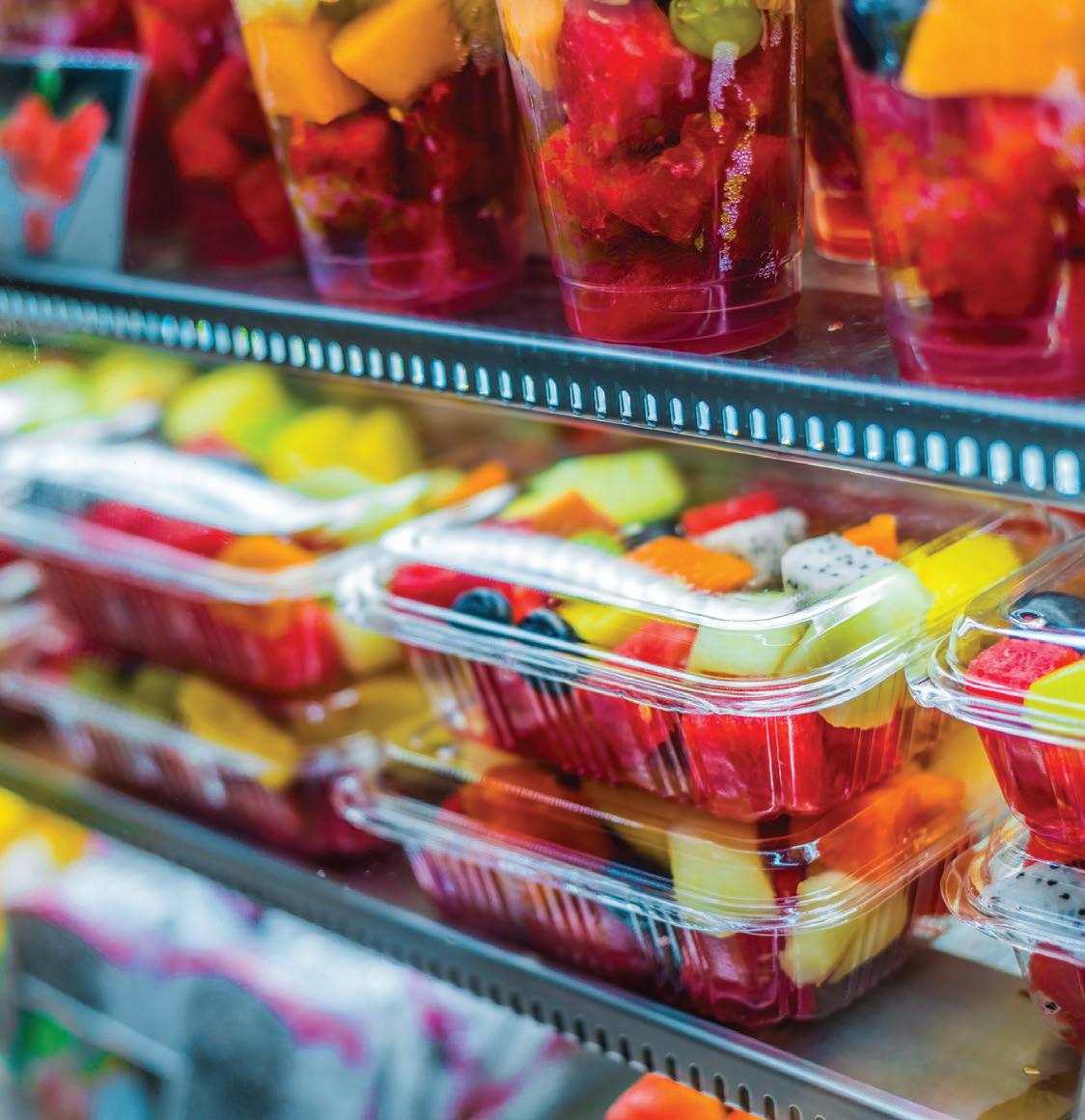
Food contact plastic packaging’s targets, on the other hand, reflect the belief that these are one of the more challenging materials to recycle back into food-grade resins. Now that we have the technologies to achieve this, the 10 per cent target set for 2030, shifting to 40 per cent by 2040, should be achievable and would mean we will be closing the loop on some 400,000 tonnes of food-grade plastic a year.
And we certainly need to boost our production of high-quality, food-grade recycled resins given that roughly 20 per cent of the world’s virgin plastic production is polypropylene (PP).
ICIS Mechanical Recycling Supply Tracker reports that food-grade resins represent only 10 per cent of the global annual capacity of recycled polymers of over 45 million tonnes, of which slightly over 20 per cent is food-grade R-PET compared with just three per cent of food-grade polyolefins.
Mechanically recycling PP also means closing the loop on a valuable material that would be wasted if diverted to other end-of-life solutions with higher carbon footprints, such as waste-to-energy or chemical recycling.
Outdated regulations
One of the key roadblocks holding back the likes of food-grade PP recycling is the stringent challenges of meeting global industrial recycling standards for food-grade resins, particularly given that many transformational recycling solutions are now coming on-stream.
To achieve high-quality foodgrade PP resin requires eliminating all contaminants from post-consumer waste that could be harmful to human health, as well as proving that the recycled material does not change the food composition, taste, and odour in an unacceptable way.
This is something that, until recently, was not achievable, hence our reliance on virgin plastics for food packaging. Now we are entering a new era for recycling ushered in by innovative technology, not only to sort post-consumer packaging, but also to effectively eliminate any potential residues in the recycled plastics.
Yet despite these technological advances, we may still face the huge constraints of big volume polyolefins recycling, precisely at a time when we need to be accelerating the research and technology developments in this direction.
Scientists Roland Franz and Frank Welle, of Fraunhofer VII, recently published a paper on this topic, in which they argue that while EFSA’s obligatory precautionary principle requires a
conservative safety assessment, the over-conservatism in the way food safety factors are calculated during the recycling and migration processes might overestimate the safety risks of recycled plastics in packaging applications. They might also overestimate the risks posed to consumers given the improvements in collection, high performance sorting and recycling/decontamination processes.
Both Franz and Welle believe this could pose high, if not insurmountable, barriers to the application of postconsumer recyclates for food packaging; something that risks creating a stranglehold on recycled food-grade resins, especially the polyolefins, and counteracting the circular economy targets.
Reframing the science
A recent study of background contamination of post-consumer
Polypropylene (PP) packaging for NEXTLOOPP’s submissions to food safety authorities, USFDA and UK FSA, may change this.
This study is the first recent UK/ European study on post-consumer PP packaging to be based on current recycling infrastructure and packaging materials. As such it will update the knowledge base that has been used for other plastics (HDPE and PET) and will shine a new light on the science of risk management and recycling food-grade recycled PP (and potentially other polyolefins).
Using the modern recycling infrastructure and the latest recycling technologies that we now have to reframe the science and basic assumptions that regulatory bodies are reliant on, could be a lifeline for foodgrade recycled resins and an added incentive to reduce the production of virgin plastics.
There is no doubt that we all need to ensure that nothing produced slips out of its own loop. In the plastics sector alone the British Plastics Federation estimated that if all plastic were recycled globally this could result in mean annual savings of 30 to 150 million tonnes of CO2, equivalent to shutting between eight and 40 coalfired power plants globally.
Certainly we need to embrace the Packaging and Packaging Waste Regulation’s goal to put the packaging sector on track for climate neutrality by 2050. This is not a lofty vision – it is an urgent warning to keep the planet’s climate within its liveable limits and avoid life changing scenarios.
Daily news updates at www.insidewaste.com.au FEBRUARY/MARCH 2023 INSIDEWASTE 43 // Packaging
Professor Edward Kosior is the founder of NEXTLOOPP, the 47-strong multiclient project aimed at closing the loop on food-grade PP.
Plastic packaging is one of the more challenging materials to recycle.
Preparation key to procurement success
By Katherine Driscoll
SINCE the world started changing –through the COVID-19 pandemic – with restrictions and shortages, the procuring of waste services has not been exempt from new challenges. In addition to the pandemic, there have been a number of other new challenges, such as the merger and rearranging of significant waste infrastructure ownership, government elections, the progress of state and national strategies, to name a few.
Local councils seeking to procure waste management services are currently faced with the pre-existing challenges of complex procurement processes within the context of regulatory settings. Over the past year or so, procurement processes have been confounded by changes and circumstances that are somewhat unfamiliar – at least for the time being.
In order to provide a well-planned and suitably managed procurement process, local councils need to identify their process requirements within new parameters and obstacles. Some of the challenges that are being encountered in procurement of local council waste services include:
• delays for the delivery of vehicles, bins, building products and other equipment;
• delays to regulatory interactions, for example planning pathways;
• development of required new specifications in response to market changes;
• changes to tendering procedures that need to be understood and managed;
• alignment of stakeholders with competing and increased responsibilities (council staff, consultants, probity advisers, legal advisers) across common timeframes;
• limited staff within tendering organisations to respond to tenders within tight timeframes; and
• complications arising from these issues that extend tender evaluation processes.
Given the new challenges, it is timely to consider the planning required to undertake a waste services procurement process. Like all processes, there are varying standards – good and bad. But given these procurement processes are often once a decade (or two), thorough planning and well-developed process controls ought not be taken for granted. The impacts of poorly managed procurement processes for waste services can be felt for a long time.
Process timing can be complicated by a number of factors:
• What are the services you are procuring?
Infrastructure procurement that requires planning approvals? Collection services that require significant numbers of collection vehicles?
• Joint procurements that rely on the coordination of a number of local councils
• Council internal procurement processes
• Does your procurement process require other supporting processes
such as community engagement/ strategy development/education for the introduction of FOGO?
• Hitting the timing ‘sweet spot’, that is, not too early and not too late – and avoiding other known poor timing matters such as over Christmas and New Year holiday periods.
• Allowing for a well-managed procurement process that doesn’t cut corners or add risks due to rushing.
• Planning for council reporting –including where workshops may be required prior to Council resolutions being required.
Allowing adequate time for the procurement of waste services also ultimately reduces the risks to tenderers which results in better prices being offered, together with an opportunity to address risk profiles and other contract conditions.
Recent feedback from key waste collection contracts indicates that the supply chains for collection vehicles have been disturbed, with delays now adding months to procurement processes.

Local councils are required to manage, often long-term relationships with their eventual contractor, so concertinaed procurement processes can add additional stresses to new contract arrangements.
A well planned and resourced procurement process requires a number of key stages and steps. Within the final years of existing contract terms,

Daily news updates at www.insidewaste.com.au 44 INSIDEWASTE FEBRUARY/MARCH 2023 Procurement //
Feedback from waste collection contracts indicates that the supply chains for collection vehicles have been disturbed.
local councils usually start to develop a pathway to gain new service agreements. Preliminary stages may include:
• Strategy development: working through what is required and how it will be procured.
• Local councils may need to allow months for the development of a waste management strategy which may also need to allow for community consultation periods. Council approval of the strategy and the pathway may add more time.
• Industry consultation: prior to launching into a procurement process, it can be helpful to consider what the industry responses will be, to what is proposed.
• Feedback may require adjustments to the approach. Where councils seek expressions of interest as a preliminary step to tendering, this time needs to be added.
• Ensuring a project team is established to support the procurement process is also recommended.
• Local councils usually recognise that they require supporting skills to be engaged. Establishing a project team that is aligned to the approach and expected timelines also takes times.
• Governance arrangements within local councils also need to be established.
Once the pathway to procuring waste services is understood by the relevant stakeholders, the steps included in the actual process should be understood.
Certain stages cannot be avoided. Drafting of documentation takes time, requires reviews, updating, reviewed again, refined and finalised.
Once an RFT is issued, sufficient time ought to be allowed for tenderers to respond – and tenderers are also faced with resourcing challenges, so often are not sitting around waiting for a tender to drop. Tender briefings may need to be planned, site visits and any tenderer interactions allowed for.

A tender evaluation process must be developed. A plan should be adopted to guide the evaluation process. A clear understanding of what the local council is seeking to achieve needs to be reflected in the planned evaluation process.
A brief guideline, working backwards, is provided (or start at the bottom):
• (i) Current contract expiry date / new services commencement date.
• (ii) Minimum 12 months prior to (i) – all required council resolutions regarding the tender.
• (iii) Note that if the possible tender outcome is to reject tenders and negotiate, additional time must also be allowed to plan for, design and
undertake a negotiation process – and would likely take months. This time allows for the new contractor to prepare, including their procurement timelines.
• (iv) Then six months prior to (ii), depending on the services being procured - Tender Evaluation Process, including review and assessment of tenders received, managing conformity issues, allowing for clarification of tender features, drafting and endorsement of a report to council to gain required resolutions.
• (v) Then three to six months prior to (iii) - Issue RFT and Tender Period, which may need to allow for briefing, interactions and where addendums are issued, may also need to allow for extensions to the tender period. Where interactive engagement with tenderers is included, additional time needs to be added.
• (vi) Then six months prior to (iv) – Commence drafting of RFT documentation. This period also includes legal and probity engagement, establishment of governance arrangements, liaising with council procurement staff and so on.
• (vii) Then three months prior to (v) – finalise strategy and engage relevant stakeholders to set up procurement process.
The above sums to at least two and a half years prior to the new commencement date. Allowing for such planning and control of a waste service procurement process will result in best possible outcomes for a local council.
Where there are special features of your process, such as joint procurements, large numbers of vehicles, or the need for planning approvals and infrastructure development, there may need to be additional time allocated.
First step, is identify your current contract expiry dates. A procurement plan can be developed and timelines established for a best practice procurement process. While straight forward services can be procured in tighter timeframes, there are now challenges that local councils ought to be aware of if significant procurement processes are on the horizon.
As Benjamin Franklin once said: “By failing to prepare, you are preparing to fail”, or if you prefer, Geoffrey Chaucer’s Time and tide wait for no man (or woman!)”
Daily news updates at www.insidewaste.com.au FEBRUARY/MARCH 2023 INSIDEWASTE 45 // Procurement
Procurement at council level can be complex due to the legislation surrounding the processes.
Katherine Driscoll is Senior Consultant, Impact Environmental Consulting specialising in waste services procurement on behalf of local councils.
Melbourne’s leading construction and major infrastructure event
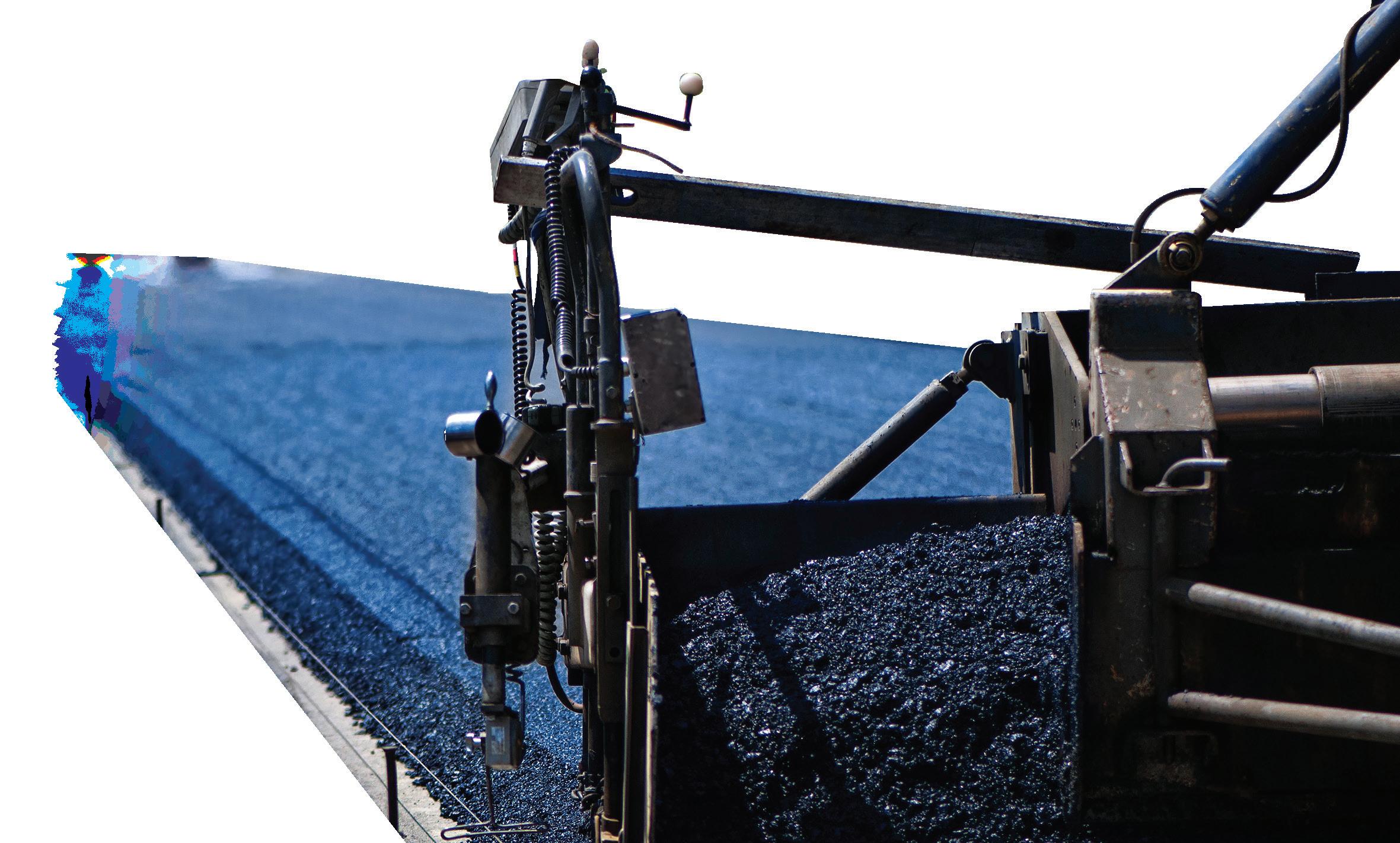
Inside Construction Expo will deliver

Targeted messaging in over 19 industry-leading publications that reach more than 80,000 decision makers across multiple sectors
Digital communications to 28,000+ engaged readers
Premium networking opportunity with industry leaders at the Foundation Awards gala dinner
insideconstructionexpo.com.au
Melbourne
20-21
2023
Convention and Exhibition Centre
Sept
EXHIBITION SPACE NOW ON SALE
Ecostar Dynamic Disc Screening
Company Overview:
Ecostar is synonymous with state of the art technologies in the mechanical separation of waste and the waste materials sector. Thanks to Dynamic Disc Screening technology, many types of waste can be used efficiently today as clean fuels and energy sources. Ecostar has been manufacturing their fast and versatile screening technology for over 25 years, and has been active in Australia and New Zealand with partner CSS Recycling Equipment for more than 10 years.
Ecostar’s market is primarily manufacturers of waste disposal plants and those for the production of biomass, ecofriendly fuels and compost, renewable energy, and both public and private utility and multi-utility companies.

Ecostar has developed specific screening products and technologies to separate different materials, even the most difficult ones, while ensuring the highest quality of separation, high volumes and low maintenance costs.

Komatsu Forest
Company Overview:

Komatsu Forest is one of the world’s largest manufacturers of forest machines. We are represented on six world continents by a network of dealers and our own sales companies.
Komatsu Forest’s head office is in Umeå, Sweden, and we have two manufacturing units, in Sweden and the USA. Our own sales companies are located in Sweden, Norway, Finland, Germany, Austria, France, United Kingdom, Russia, USA, Australia and Brazil, and our network of dealers represent us on all other important forestry markets.
Our extensive service organisation takes care of the machines, ensuring that they perform their best throughout their service lives. We have workshops throughout the world, service vehicles for quick assistance, in-house machine and methodology instructors to help maximise productivity, and support functions for everything related to our machines and services.
Products and Services:
We offer products and services that
Brands:
• Custom collaborative screen design & complete plants
• Mobile Ecostar Hextra
• Static Ecostar Hexact
• Static Ecostar Easyone
Core Capabilities:
Dynamic Disc Screening (DDS) DDS is a series of shafts equipped with hexagonal or octagonal discs, with a flat profile, made of Hardox to guarantee maximum resistance. The material flows on the screen’s discs and is subjected to a jolting movement that separates waste. Undersized material drops below the screening surface, passing through the gaps between the discs while the oversized material advances to the end of the screening plane. The result is a clean fraction,ready for recycling processing.
Hyper Dynamic Disc Screening (HDDS) HDDS is for the separation of particularly difficult waste containing
long and stringy materials, such as bags and plastic straps used for packaging, which can wrap around the shafts, or plastic bottles that can get stuck during the screening process.
Screening Width Adjustment Technology (SWAT)
SWAT is the patented Ecostar technology particularly efficient with materials such as PET and plastic, paper and cardboard and multi-material. SWAT can be installed on DDS screens in order
to quickly change the screening section on-site according to the customer’s production needs and the material to be screened.
Contact Details:
CSS Recycling Equipment Solutions
PO Box 359 Dee Why NSW 2099
Phone: 1800 644 978
Email: info@cssequipment.com.au
Web: www.cssequipment.com.au
increase productivity while simplifying the working day for you as a machine owner.
We combine all our services under our Customer Care concept. This is our promise that you will enjoy the benefits of Komatsu Forest’s investments in research, development, servicing, support, logistics and innovative services. These combined resources are at the very heart of Komatsu Forest’s offer.
Our goal is to make your working day as safe, problem-free and profitable as possible, no matter where in the world you operate. Let us show you that by choosing Komatsu, peace of mind and accessibility can become a natural part of your working day.
Brands
• Komatsu
• Peterson
• TimberPro
Core Capabilities:
Our world-wide network of highly trained service professionals is ready for you. We know how important it is to be
close to service and maintenance when help is needed. Therefore, we have a market-wide network of highly trained service professionals that knows your Komatsu, Peterson & Timberpro machine in every detail. They are, in turn, in constant contact with the Komatsu Forest head office so your voice or needs are never more than a call away from our collective expertise. Furthermore, we are constantly developing new services that will help you in your everyday work.
We offer:
• Workshops and field services throughout Australia & New Zealand

• Well qualified personnel with expert knowledge of Komatsu & affiliated machines

• Field Service that enables us to remain close to you and your
machine
• Support and maintenance throughout your machine’s service life
• Maintenance agreements with fixed maintenance prices and other benefits

Contact Details:
AUSTRALIA
Komatsu Forest Pty Ltd
4/11 Ave of Americas
Newington, NSW 2127
T : +61 2 9647 3600
E : info.au@komatsuforest.com
NEW ZEALAND
Komatsu Forest Pty Ltd
15C Hyland Cres
Rotorua, New Zealand
M: John Kosar + 64 274 865 844
M: Paul Roche + 64 21 350 747
// Capabilities Statements Daily news updates at www.insidewaste.com.au
FEBRUARY/MARCH 2023 INSIDEWASTE 47
Hitachi Zosen Inova
Company Overview:
Hitachi Zosen Inova (HZI) is a global leader in energy from waste (EfW), anaerobic digestion (AD) and Power-to-Gas, acting as an engineering, procurement and construction (EPC) contractor delivering complete turnkey plants and system solutions for energy recovery from waste. Since 2015, HZI Australia, a 100% subsidiary of HZI, is developing new projects in Australia, New Zealand, and the South Pacific. Its first project, the 300,000 tpy East Rockingham WtE is now in construction and will start commercial operation in 2023.
Products/Services:
• Thermal treatment of residual waste, energy recovery, flue gas treatment, and residue recycling
• Wet and dry anaerobic digestion of food & green resources, renewable power production, biogas upgrading to biomethane and bio-CNG
• Power-to-Gas for volatile electricity into renewable synthetic gas for a carbonneutral economy
• Development, Design, Build, Finance, Own, Operation & Maintenance
Brands:
• Hitachi Zosen
• Aquaroll, DYNOR, Kompogas,
• HZI Etogas, HZI DryMining
Core Capabilities:
Energy from Waste, Renewable Gas, Project Development, EPC, O&M, Asset Management
Recent Projects/Installations:
RIVERSIDE 2 ENERGY FROM WASTE FACILITY, LONDON, UK
Leading waste and recycling company Cory Group (Cory) has further strengthened its relationship with Hitachi Zosen Inova (HZI) by awarding the Swiss green-tech company with the Engineering, Procurement and Construction (EPC) contract to build its second large-scale energy from waste (EfW) plant at Belvedere in the London Borough of Bexley. The site is adjacent to Cory’s existing Riverside 1 facility, which was also built by HZI and has been operational
MRA Consulting Group
detailed and practical advice to support your waste and resource recovery needs.
Core Capabilities:
since 2011. For HZI, this new project represents its eighteenth EfW project in the UK to date.
The plant will utilise HZI’s well-established moving grate technology, which has successfully been deployed across numerous operational EfW facilities in the UK, including the iconic Riverside 1 facility. The plant will be able to treat 650,000 tonnes of non-recyclable waste while generating around 61 MWe of electricity (net) – enough domestically produced energy to power over 140,000 UK households each year.

Construction will start in January 2023 and once operational in 2026, the two-line plant will generate electricity through a steam turbine which will meet strict emission directive requirements and satisfy the high demands placed on modern EfW facilities.
Together with the existing Riverside 1 facility, the Cory sites will treat 1.3 million tonnes of residual waste per year within
a major metropolitan area. Treating waste close to its source reduces the need to transport large volumes of waste over long distances and the associated negative carbon impact this will have on the environment.
For more information visit: https://bit. ly/3XqcbqT
Contact Details:
Hitachi Zosen Inova Australia Pty Ltd
Level 16, 1 Denison, North Sydney, NSW 2060
Phone: 02-8003 4110
Email: info@hz-inova.com
Web site: www.inova.com
Key Contacts:
Dr Marc Stammbach 02 – 8003 4110 info@hz-inova.com
Cooee - Waste Facility Data Solutions
Cooee
WASTE FACILITY DATA SOLUTIONS
Contact Details:
Contact Details:
MRA Head Office
Suite 408 Henry Lawson Building, 19 Roseby Street
Drummoyne NSW 2047
02 8541 6169
info@mraconsulting.com.au www.mraconsulting.com.au
Company Overview:
MRA is one of Australia’s leading environmental consultancy firms, specialising in all aspects of waste and recycling. We are experts in waste, resource recovery and the circular economy, technology, climate change, carbon and sustainable development. Our vision of the future is one that is both environmentally sustainable and economically rational. With over 35 professionals in environmental science, engineering, law and finance, working across Australia we have the experience and technical knowledge to provide
Customised advice to all levels of government and corporations. Our objective is to collaborate with you from the initial briefing process through to project development and implementation of solutions specifically tailored to your needs in the fields of:
Strategy & Commercial – Innovative and tailored strategies
Circular Economy – Help move your organisation or material towards a circular economy model
Planning & Approvals – Development and planning approvals and licensing services
Contracts & Tenders – Preparation, review and assessment
Organics – Business case, collection processing and market development solutions
Grants – Scoping, application, writing, review and administration
Waste Education – Effective and engaging programs
Auditing – Research and compliance audits
Carbon – Climate adaptation, ERF reporting and accounting
East Coast Office 0447 393363 West Coast Office 0422 525 985 solutions@cooeedata.com cooeedata.com
Company Overview:
Cooee provides a cost-effective gatehouse data solution for small to medium-sized landfills and transfer stations. We have a great team with decades of waste experience and dedicated data engineers who ensure that Cooee is set up to meet each of our customer’s unique needs and circumstances. Therefore, saving our customers from frustration and wasted time and money.
Products and Services
• Cooee – Waste Facility Data Solutions, inc:
• Conversion of volumes to tonnage by waste type
• Manage and monitor tip pass use
• Account holder management & invoicing
• Compliance data capture and reporting
• Operational oversight.
Core Capabilities:
We work with our customers to ensure that Cooee is customised to meet their needs and services. Easy to use, the accurate data from Cooee drives good decisions. You can check waste quantities and revenues at a glance, seamlessly manage tip passes and even work in off-line environments.
Recent Projects/Installations:
Richardson Road landfill and transfer station. Shire of Harvey. Customisation, installation, training and commissioning of Cooee at the Council’s waste facility. At the Council’s request, their version of Cooee includes operational and compliance facility checklists. These are sent to their Waste Officer to review and promptly act upon if there are any issues.
Landfill data systems. Shire of Derby West Kimberley. Due to the remote location of the facilities, Cooee’s ability to operate in an off-line environment is important. Cooee provides up-to-date account holder transactions for prompt invoicing.
Capabilities Statements //
Daily news updates at www.insidewaste.com.au 48 INSIDEWASTE FEBRUARY/MARCH 2023
Eriez Magnetics
Company Overview:
Leading specialists in metal separation, resource recovery technologies, and developing new recycling strategies and processes.
Products and Services:
• Magnetic Pulleys & Scrap Drums
• Ballistic Metal Separators
• Suspended Electromagnets
• Eddy Current Separators
• Stainless Steel Separators
• Fines Metal Recovery Systems
• Airless Metal Recovery Systems
• Tech Service and Repairs
Brands:
• P-Rex® Scrap Drum
• Shred1™ Ballistic Separator
• FinesSort® Metal Recovery System
• RevX-E Eddy Current Separator
Core Capabilities:
Eriez designs and manufactures equipment to successfully recover and beneficiate ferrous and nonferrous metals. Identify and remove unwanted metal contaminates to minimise product rejection and maximise product purity. We can help you achieve greater recovery at a higher-grade product delivered at a lower cost per ton.
Recover valuable resources from:
• MRF, MSW, C & I and C & D
• E-waste
• Tyre recycling and Scrap metal yards,
• Energy from waste feed and bottom & fly ash
• Green waste processing, composting and road sweepings
Contact Details:
Eriez-Australia
21 Shirley Way, Epping, Victoria 3076
Phone: 61-3-8401-7400
Email: sales.au@eriez.com
Web: www.eriez.com.au

Australasian Specialty Coatings
Products and Services:
Flooring (Epoxy and polyurethane)
Applied Machinery
Brands:
• Genox
• Meyer
Contact Details:
55-61 Nissan Drive
Dandenong VIC 3175
Phone: 03 9706 8066
Email: sales@appliedmachinery.com.au
Web: www.appliedmachinery.com.au
Company Overview:
Applied Machinery is one of Australia’s largest suppliers of quality recycling machinery. Over 30 years industry experience enables us to deliver turnkey solutions for all manner of recycling applications across Australia.
Products and Services:
• Shredders and granulators
• Plastic washing, tyre, and e-waste recycling plants
• Repelletising systems/screen changers
• Optical Sorting Systems
Core Capabilities:
Applied Machinery has the capability to service the smallest single machine requirement, through to the largest of multi-site, staged installations and complete recycling line, turn-key projects. We supply some of Australia’s largest recycling organisations. A wide range of shredders and granulators are always in stock for quick delivery.
Recent Projects/Installations:
D&M WASTE MANAGEMENT
Perth
Genox J-Series Pipe Shredder feeding a plastics washing and pelletising system. The J-Series pipe shredder features a multi-rotor design with long life counter knives ideal for shredding different diameter and sized pipes.
Company Overview:
Australasian Specialty Coatings – ASC – is an experienced coatings company located in Blacktown. We work in Construction and Maintenance and provide a range of Protective Coatings and Treatments for Concrete & Steel.

We have been established since 2003 and we have a strong track record in achieving outstanding results for our customers. ASC successfully works with a wide variety of customers including Sydney Water, Ericsson, Veolia Environmental and Water Services, Suez Water and Waste Services, Unilever, Coca Cola Australia, General Mills, Bega Foodservice, George Weston Foods, Diageo, etc.
ASC is an experienced organisation with ISO 9001, 14001 and 45001 Certified Management Systems as well as the NSW Government 5th Edition. We are also members of the Master Builders Association.
– Commercial & Industrial Floor Resurfacing, Concrete Remediation, Concrete Repair, Anti-Slip Flooring, Anti-Static Flooring, AGV Flooring, Self-Levellers, Demarcation & Line marking
Coatings for Concrete Densifiers, Waterproofing Membranes, Sealers, Concrete Resurfacing, Epoxy and Polyurethane Flooring, Chemical Bund Linings, Acid-Resistant Coatings
Protective Painting Services
Abrasive Blasting, Vapour Blasting, Shot-Blasting, Corrosion Control Coatings, Chemical Resistant Coatings
Contact Details:
ASC Head Office
1/14 Chicago Avenue Blacktown, NSW 2148 Phone: 02 8840 8888
Email: enquiries@acoatings.com.au
Web: ascoatings.com.au
If you want access to all the major stakeholders in the waste industry then a Capability
// Capabilities Statements
Daily news updates at www.insidewaste.com.au FEBRUARY/MARCH 2023 INSIDEWASTE 49 Capability statements are a popular medium in Inside Waste that give the industry an insight into your business –how it can help potential clients, the services you offer, and products you sell.
GET YOUR CAPABILITY STATEMENT IN NOW! If you want to know more about Capability Statements and how they can help your business Contact Chelsea Daniel-Young: Email: Chelsea.daniel@primecreative.com.au | Ph: 0425 699 878
Statement is a great introduction to those decisionmakers, allowing your business to get a crucial foothold in a competitive market.
Ecohog HSB-81 Air Hog
Weight: 500kg or 1,220kg
Drive Type: Electric or Diesel
Motor: Perkins Diesel
Suitable material: Most Waste Types
No. of units in range: 2 x Model
Price: Contact CSS Equipment for more information
More: Airhogs Vac Systems are used for removing light materials from heavy materials on conveyor belts. Fit most conveyor systems.
Name: CSS Recycling Equipment
Phone Number: 1800 344 978
Webpage: www. cssequipment.com.au
Email: info@cssequipment. com.au
Ecohog EH1500 TWS Windshifter
Weight: Up to 17 tonnes
Drive Type: Electric or Diesel
Motor: Perkins Diesel
Suitable material: Most Waste Materials
No. of units in range: 3 x Models (Electric, Semi-Mobile and Mobile)
Price: Contact CSS Equipment for more information
More: Windshifters for operating on screened materials, to separate light materials from heavy materials.
Name: CSS Recycling Equipment
Phone Number: 1800 344 978
Webpage: www.cssequipment. com.au
Email: info@cssequipment.com.au
Ecohog EQS 1200 SMQ Mobile Picking Station
Weight: Up to 17 tonnes
Drive Type: Electric or Diesel
Motor: Perkins Diesel
Suitable material: Most Waste Materials
No. of units in range: 2 x Models (4 x Person & 6 x Person)
Throughput: Dependant on Infeed Materials
Options/Extras: Over-Belt Magnet and Air-Knife System
Price: Contact CSS Equipment for more information
More: The EQS is a semimobile picking station that can be operated in a static mode or moved from site to site.
Name: CSS Recycling Equipment
Phone Number: 1800 344 978
Webpage: www.cssequipment. com.au
Email: info@cssequipment.com.au
Hammel Red Giant VB950DK Primary Shredder

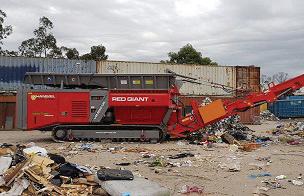
Weight: Up to 47 Tonnes
Drive Type: Diesel 760Hp
Motor: CAT C18
Rotor diameter/lengths/speed: 950mm x 2,750mm Slow Speed (High Torque)
Speed (slow/high): Variable between 18rpm to 36rpm
Suitable material: Most Waste Materials
No. of units in range: 2 x Models (Electric or Diesel)
Throughput: Up to 200tph (depending on material)
Finished product size: Down to 100mm
Options/Extras: Contact CSS Equipment for all options available
Price: Contact CSS Equipment for more information
More: *Overbelt Magnet *5000mm Discharge Conveyor *Gold Standard for hard to process waste *High throughput *Minimal dust * Quieter *User-friendly
Name: CSS Recycling Equipment
Phone Number: 1800 344 978
Webpage: www.cssequipment.com.au
Email: info@cssequipment.com.au
Hammel VB750DK Primary Shredder

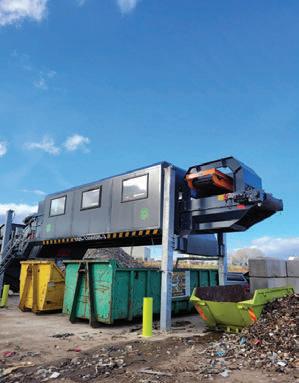
Weight: Up to 23 tonnes
Drive Type: Diesel 375Hp
Motor: CAT C9
Rotor diameter/lengths/speed: 750mm x 2,000mm Slow Speed (High Torque)
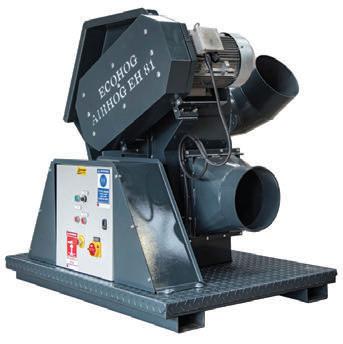
Speed (slow/high): Slow Speed Variable between 18rpm to 36rpm
Suitable material: Most Waste Types
No. of units in range: 3 x Models (Electric, Semi-Mobile & Fully Mobile)
Throughput: Up to 50tph depending on Waste Materials
Finished product size: Down to 100mm
Options/Extras: Contact CSS Equipment for all Options Available
Price: Contact CSS Equipment for more information
Name: CSS Recycling Equipment
Phone Number: 1800 344 978
Webpage: www.cssequipment.com.au
Email: info@cssequipment.com.au
CSS RECYCLING EQUIPMENT
RECYCLING EQUIPMENT CSS RECYCLING EQUIPMENT CSS RECYCLING EQUIPMENT
CSS RECYCLING EQUIPMENT CSS
Product Profiles // Daily news updates at www.insidewaste.com.au 50 INSIDEWASTE FEBRUARY/MARCH 2023
CSS RECYCLING EQUIPMENT
Ecostar Easy One
Unit Dimensions: from 3,000mm up to 6,000mm
Weight: Up to 8,000kg
Drive Type: Electric
Motor: Electric (Nord)
Rotor diameter/lengths/speed: 1,400mm wide x (up to 6,000mm)
Speed (slow/high): Variable Speed Screening
Suitable material: Wood, Mulch/Compost, Green Waste and Tyres etc
No. of units in range: 4 x Models
Throughput: Up to 50tph of mulch materials.
Finished product size: Down to -15mm
Options/Extras: Static Models.
Price: Contact CSS Equipment
More: Reliable and versatile stationary screen. Available with two or three screening fractions and surfaces up to six metres.
Name: CSS Recycling Equipment
Phone Number: 1800 344 978
Webpage: www.cssequipment. com.au
Email: info@cssequipment.com.au
CSS RECYCLING EQUIPMENT
Belt Width: 1.2m
Floor Width: 3.9m
Internal Bay Width: 3.2m
Bin Dimensions: 0.5m x 1m
Cabin Height: 2.5m
Approx. Weight: 5000kg
TEREX RECYCLING SYSTEMS
Ecostar Hextra
Unit Dimensions: Multiple Models
Weight: Up to 22 tonnes
Drive Type: Electric or Diesel
Motor: Kohler Diesel
Rotor diameter/lengths/speed: Screen Lengths from 5,000mm to 7,000mm
Speed (slow/high): Variable Speed Screening
Suitable material: Most Waste Materials
No. of units in range: 2 or 3 Fraction Screening
Throughput: Up to 200tph (dependant on materials to be screened)
Finished product size: down to -10mm
Options/Extras: Magnet Pulleys on Discharge Conveyors and Air Vac
Systems
Price: Contact CSS Equipment for more details.
More: Fast and Flexible, customised for your waste stream. Units in stock ready for immediate dispatch.
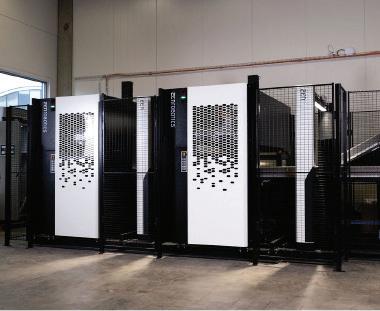
Name: CSS Recycling Equipment
Phone Number: 1800 344 978
Webpage: www.cssequipment. com.au
Email: info@cssequipment.com.au
ZENROBOTICS
Applications: C&D, C&I, Compost/Organics, Wood
Features: TPS-120 Picking Station is 1.2m wide with a double-sided picking conveyor. Picking station’s are configurable from one bay upwards.
Options/Extras: Insulated cabin enclosure
• External drop bins

• Closure flaps;
• Horizontal or inclined infeed
• Cross belt over-band magnet;
Price: POA
Phone Number: +44 (0) 28 8771
8500
Webpage: www.terex.com/ recycling
Email: recyclingsystems@terex. com
Fast Picker
Unit Dimensions: 1.9m x 2.7m
Unit Height: 2.8m
Unit Weight: 1350kg
Gripper Type: Suction Gripper
Max Speed Per Arm: 4800 picks per hour*
Discharge Chutes: 2 per arm
Max Object Weight: 1kg
Max Object Size: 0.4m x 0.4m
Waste Types: Municipal Solid Waste, Light Packaging Waste, Dry Mixed Recycling
Price: POA
More: ZenRobotics Fast Picker couples AI software with high-speed picking, allowing autonomous and accurate sorting. Increase recovery. Robust.


Phone Number: +358 50
4363803
Webpage: www.terex.com/ zenrobotics
Email: sales@zenrobotics.com
TEREX RECYCLING SYSTEMS
Unit Dimensions: 6.5m x 2.3m
Unit Height: 2.3m
Weight: 6900kg
Applications: C&D, Commercial, Household, Compost/Organics
Features: 1.5m wide input conveyor with adjustable positioning, separates waste by density. Standard specification includes 30kW radial fan with adjustable throttle valve and fully adjustable nozzle. Light material chamber incorporates air recirculation and a hinged partition grid. TAS-150 is fitted with an 800mm heavy fraction collection conveyor and rubber curtain for lights discharge. Electrical control panel with easy-to-use control system.

Options/Extras: Hydraulic level adjustment; 800mm wide folding heavy fraction stockpile conveyor; .5m light fraction discharge conveyor with extended light fraction chamber; Airlift 15kW radial fan with adjustable throttle valve integrated into lights conveyor to separate ‘ultra-lights’; Disc spreader 800/1500; Hooklift carriage; Fork-lift shoe; Crawler tracks;
Price: POA
Phone Number: +44 (0) 28 8771 8500
Webpage: www.terex.com/recycling
Email: recyclingsystems@terex.com
Heavy Picker
Unit Dimensions: 13.7m x 5.3m
Unit Weight: 4700 kg – 11300kg
Gripper Type: Mechanical Gripper
Max Speed Per Arm: 2300 picks per hour*
Discharge Chutes: up to 6 per arm
Max Object Weight: 30kg
Max Object Size: 1.5m x 0.5m
No. Of Recognised Fractions: Unlimited
Waste Types: C&D, C&I, Wood, Rigid Plastics, Inert, Scrap Metal
Price: POA
ZENROBOTICS
More: World’s first robotic waste sorting solution. For large and bulky waste. Sorts several highpurity fractions simultaneously. Fully autonomous. Retrofitted or set up as a standalone.
*Picking speed depends on feed
Phone Number: +358 50 4363803
Webpage: www.terex.com/ zenrobotics
Email: sales@zenrobotics.com
 TAS-150
TPS-120
TAS-150
TPS-120
// Product Profiles Daily news updates at www.insidewaste.com.au FEBRUARY/MARCH 2023 INSIDEWASTE 51
Two Terex brands working hand-in-hand
operators strive for higher levels of efficiency and safer processing via automation.
TRS is working with the new Terex brand – ZenRobotics, to integrate cutting edge AI technology into its sorting solutions.
recycling facility that takes waste operations to a new era, increasing sorting capacity while skipping the rigid processes and inefficiencies of conventional facility set-ups.
Sorting and separating waste material is something Terex MP knows plenty about, and is an area in which the knowledge base is expanding more than ever before.
With Terex Recycling Systems being launched in 2021 and more recently ZenRobotics – a Finnish AIdriven, robotics-focused company –being acquired in August 2022, there is a drive and focus to dive deeper into waste recycling.
Terex Recycling Systems (TRS) design and build modular plants for the sorting and separation of waste, with an emphasis on modular construction making the plants easy to customise and configure to suit the needs of each application.

Products include the TAS-150 Air Separator which has several different retrofittable options to optimise separation.
The TPS-120 Manual Picking Station continues the theme of modularity and can be configured to suit each project with the added benefit of flexibility to upgrade in the future as markets and requirements change.
Options include magnet module for ferrous metal recovery, air knife for removal of light fractions and operator enclosure for improved safety and comfort. These are more traditional methods of separating and sorting within the waste recycling industry. However, as the industry grows,
ZenRobotics aims to robotise operations and can do so in different ways. Its standalone solution offers customers a fully automated and independent waste sorting station. This turnkey solution is the fastest and easiest way to get all the benefits of AI-powered sorting at a low operation cost.
The fully automated sorting station, powered by ZenRobotics Heavy Picker, is independent of other operations, meaning it can run unmanned 24/7. It’s flexible and easy to operate, and quickly ready for use.
The retrofitted solution is one in which the ZenRobotics team can integrate waste sorting robots into existing facilities. These robots fit right into demanding surroundings, extending sorting capacity and improving employee safety.
Finally, the greenfield solution, is a fully robotised industrial-scale
Cooee time-saver for small landfill operators
Aimed at smaller waste facilities –especially those in regional Australia – the Cooee waste facility and data management and reporting system is designed to streamline the various components of managing waste.
Developed by ASK Waste Management, the system came about to fill a gap in the market for the smaller waste landfills and Resource Recovery Centres which, at best, guestimate the amount and types of waste arriving at the gatehouse, said company director Giles Perryman.
The system is currently being used by Strathbogie Shire Council. It has been in place for a few months, and Waste Management Officer for the Shire, Michael Young, is full of praise for the system.

“It’s been a game changer for us,” he said. “We’re a small regional council with a low, sparse population. We operate seven supervised Resource Recovery Centres of varying sizes. These
facilities ensure we provide essential waste services to our community, especially as nearly 40 per cent of properties in our Shire don’t have access to a kerbside service.”
Prior to Cooee, these sites all used manual receipting procedures, with an Excel spreadsheet printed out that operators would fill in. However, Young said these were constantly rife with errors.
“When we brought all the materials in, the eyeballing on what was arriving was still done, but it was never recorded properly. And then when it came to materials received and daily settlements, often these wouldn’t match up. Cooee was what we needed.”
One of the key ingredients is how much time it is saving Young. He says that because everything is recorded as it goes, end of day reconciliation is easy.
“The recording side of things is something that we’ve never had before,” he said. “In a nutshell,
when it came to end of year annual surveys I’d have to sift through all the individual reports again. In the past, this literally took weeks. But now, especially recently, with the floods, for example, we’ve been able to do it in about 30 minutes.”
The biggest side effect has been Young can spend more time doing other things. What are his favourite features of the software?
“Definitely real-time reporting and that it’s fully customisable,” said Young. “For example, I can see how many fridges I’ve received in a day.
“Then there’s the banking aspect. We had a lot of issues with the daily takings and what was recorded, and it wouldn’t match up for auditing purposes. It was difficult to then go through all the manual receipts to find out what went wrong with the reconciliation at the end of the day.”
However, with Cooee, Young says if a user incorrectly fills out an entry form and puts a wrong amount in the point of sale (POS) machine,
ZenRobotics can design and build processes around AI-based robotic waste sorting technologies.
Safe sorting robots are the future of the waste recycling industry but they must work and integrate seamlessly to already existing processes. Terex MP is at the forefront of pushing forward into this industry and is focussed on increasing the standard and quality of existing plant and processes, while introducing new technology that increases efficiency and safety.
The sales team at TRS is now being trained up and will have knowledge about ZenRobotics equipment to be able to sell it and vice versa for the ZenRobotics sales team.
The joint team within Terex MP means that the support and product knowledge can be spread across existing and new customers for both brands, helping to expand Terex MP within the waste recycling industry.
they can then fill out a form and it gets fixed up in the back end.
“That’s a huge bonus for the people that do our banking,” said Young.
He said Cooee is also intuitive with even the most technologically challenged staff getting a handle on it quickly. It also gives the company a snapshot of what is happening at the different sites.
“In the past we could tell you anecdotally how busy we were and give rudimentary figures, but now we’ve got raw evidence in the data. We can work out what needs to be concentrated on more and ensure true value for money.”
Daily news updates at www.insidewaste.com.au 52 INSIDEWASTE FEBRUARY/MARCH 2023
Equipment News //
Michael Young said that Cooee has been a game changer for the Strathbogie Shire Council.
ZemRobotics deigns and builds processes using AI-based robotic waste sorting.
D&M Waste Management embraces circular economy
D&M Waste Management started in 2001 as a bulk waste transport business, with current General Manager, Daniel Taylor, taking over in 2012. The business has since evolved to become a player in the waste management industry and has more recently made the move into the recycling arena.
The company has contracts with local government authorities throughout Perth and the NorthWest for bulk verge waste collection. This includes green and general waste and recyclables.
While the move into plastics recycling was something the company had been considering for a while, it was fast-tracked by the national export ban on waste HDPE plastics in 2021. The ban coincided with the launch of the federal government’s Recycling Modernisation Fund, which D&M obtained. This funded a significant part of the Genox recycling plant that was purchased.
“We were grateful for the financial support from the Department of Water and Environmental Regulation, which allowed us to enter the recycling market quicker than we anticipated,” Taylor said.
The Genox brand has been distributed and supported by Applied Machinery since its entry into the Australian market. Today, more than 300 companies in Australia have Genox equipment.
Taylor contacted Applied Machinery to see what options they had to build a plant to specifically handle pipe shredding. Once a proposal was received Daniel and his team looked carefully into other companies’ experiences with Genox and Polystar.
“We contacted a couple of recycling businesses that were already operating this brand of equipment and the feedback was extremely favourable and gave us the reassurance to proceed with the purchase,” Taylor said.
The selected recycling plant consists of a number of standard Genox modular components including a shredder that is specially designed for plastic pipes.
The J-Series pipe shredder features a multi-rotor design with long life counter knives ideal for shredding different diameter and sized pipes.
After the pipes are shredded and granulated, they go through a sink float tank and then a friction washer,
centrifugal dryer and finally into a hopper for melting. The molten plastic is then re-pelletised to produce clean dry pellets.
The waste plastics are sourced from a number of areas including decommissioned HDPE pipes from old bore fields; pipe that was not suitable for re-use along with old bin lids and various plastic off-cuts from local industry.
In something of an alignment of the planets and a classic case of vertical integration, the move into recycling coincided with an opportunity to partner with sister company Hydra Storm. The company had recently installed a new plastic pipe extrusion line producing a range of HDPE corrugated pipe for stormwater drainage applications. The clean dry rHDPE resin that the Polystar plant produces were ideal for feeding into the Hydra Storm pipe extrusion line, with any excess resin being offered to the market at a discounted rate, compared to imported, virgin HDPE resin.
The plant was running from August 10, 2022; the throughput has gradually increased since that time and the plant is now matching
the capacity of the extrusion plant. “With both companies operating from the same facility this entire setup would have to be one of the best examples of true circular economy processing,” Taylor said. His experience with Applied was certainly positive. “The whole process from quotation through to delivery was pretty much seamless,” he said. “While we handled installation ourselves, we called upon Applied’s after sales service for help in resolving a couple of minor issues and we found the service excellent. Having local support that we can call upon quickly is important to us and a key component of our decision to partner with Applied,” he said.
Peterson 2710D Horizontal Grinder
Astec Industries’ Peterson Horizontal Grinders provide grinding solutions for organics recycling and forestry

The Peterson brand was founded in 1981 making industry-changing equipment and has been an integral member of the Astec Industries family since 2007. By aligning all Astec brands, they harness the power of a comprehensive dealer network, expansive parts distribution, and robust service.
Peterson offers a full line of horizontal grinders from 455–1200 horsepower (339–894 kW), in both diesel and electric applications to suit any grinding needs. Peterson D-series grinders offer industryleading features and innovations which allow customers to produce the highest quality product at the lowest cost per ton.
The Australian Peterson distributor, Komatsu Forest, is located at Newington in Sydney with
branches and agents throughout the Australian forest regions and has been the Peterson dealer since early 2011.
Komatsu Forest has been successful in selling a range of Peterson Horizontal grinders in Australia – the most popular model being the 2710D – with more than 20 units currently operating throughout Australia. The grinder is designed for operations requiring mobility, high production, and frequent moves between jobs.

The 2710D is powerful. The Australian version is fitted with a Caterpillar Tier II C18 570 kW (765 hp) and the large feed opening allows it to manage a wide range of materials. Measuring 153 x 81 cm, when boosted by Peterson’s high lift feed roll, the feed opening’s maximum lift of 11 cm is one of the largest in its class.
This is followed by Peterson’s
upturn three-stage grinding process, providing better material fracturing and a more consistent product.
Peterson Grinders feature upturning rotors that are configured to produce lighter mulches with fewer fines. The upturning rotors perform more of the reduction process through shearing and cleavage fractures in the wood, making them more productive because less energy is required.
Peterson’s patented Impact
Release System’s air bags provide uniform grinding and protection from contaminated feedstock.
In addition, there’s a second line of defence of urethane cushions and shear pins that help protect the mill from catastrophic damage in the event of a severe impact from contaminants in the feed stock.
The Peterson 2710D features can also benefit the bottom line over a 12 month period with a reduction in downtime, fuel consumption, colorant costs, and higher mulch yields.
Daily news updates at www.insidewaste.com.au FEBRUARY/MARCH 2023 INSIDEWASTE 53 // Equipment News
The Genox brand has more than 300 companies using its equipment.
The 2710D Peterson horizontal grinder is designed for operations requiring mobility and high production.
Turmec and The Environmental Group Limited expand Australian support
to a service level agreement.
“Under the existing agreement, EGL will promote Turmec products and services, support Turmec in the delivery of turnkey projects and plant upgrades. EGL will play a lead role in supplying equipment spare parts and after-sales service programs which are a key component of Turmec’s product offering and we look forward to working closely to service our customers,” said Robert Thornton, Director of Supply Chain and After Sales for Turmec.
Paul Gaskett, national sales and marketing manager for EGL.”
During and after the installation of a system, Turmec’s after-sales team is there to support a business in achieving and maintaining optimum efficiency in the running of the plant. The company works collaboratively with its customers to ensure maximum plant efficiency and uptime.
Turmec, a specialist in designing and building waste processing and recycling solutions, has announced that together with its partner The Environmental Group Limited (EGL), it will have a presence in every state throughout Australia.

The company has said the availability of highly trained technicians, supported by a stock of essential spare parts, will mean less downtime for its customers.
Customers can access this service as needed or by signing up
“We are delighted to work alongside Turmec to offer this after-sales customer hub. From our headquarters in Melbourne, we have a presence in every state of Australia which in turn gives Turmec excellent geographic coverage and a solid base from which to grow and service its Australian customer base,” said

The after-sales team hold an order history for plant parts, ensuring easy re-ordering and enabling its service engineers to maintain a complete picture of a plant’s performance.
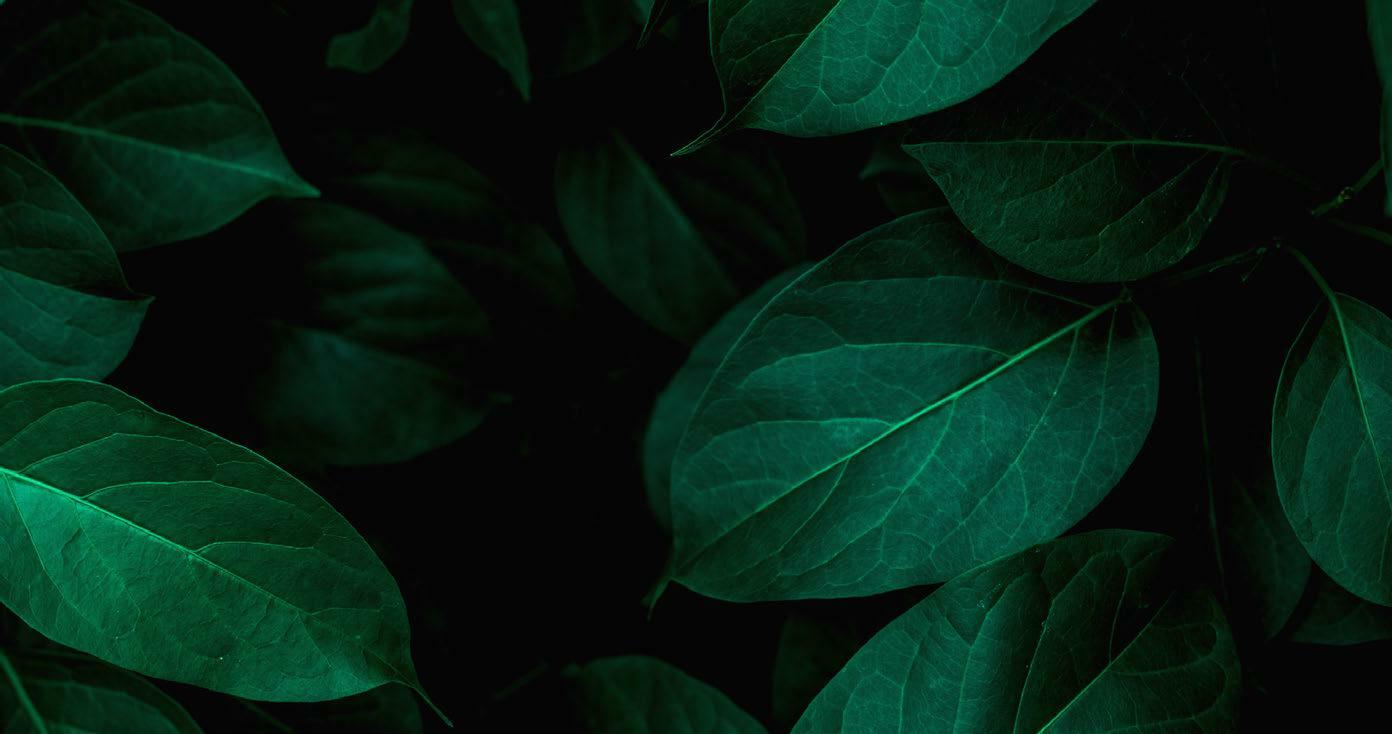
Turmec holds a stock of parts to maintain all conveyors it has supplied into the market. It also carries essential spares for a range of OEM equipment that would typically feature in a Turmec plant, where that OEM doesn’t have its own distribution network.

Daily news updates at www.insidewaste.com.au 54 INSIDEWASTE FEBRUARY/MARCH 2023 Equipment News //
Thank you for once again voting us Australia’s best small consultancy. BESTSMALL CONSULTANCY Call 02 8541 6169 or email info@mraconsulting.com.au mraconsulting.com.au Contact our award-winning team today to find out what we can do for you.
Turmec and the Environmental Group have partnered in Australia to offer an after-sales customer hub.


Sponsorship opportunities now available for 2023 WASTE INNOVATION & RECYCLING AWARDS Chelsea Daniel-Young chelsea.daniel@primecreative.com.au +61 425 699 878 Contact www.wasteawards.com.au
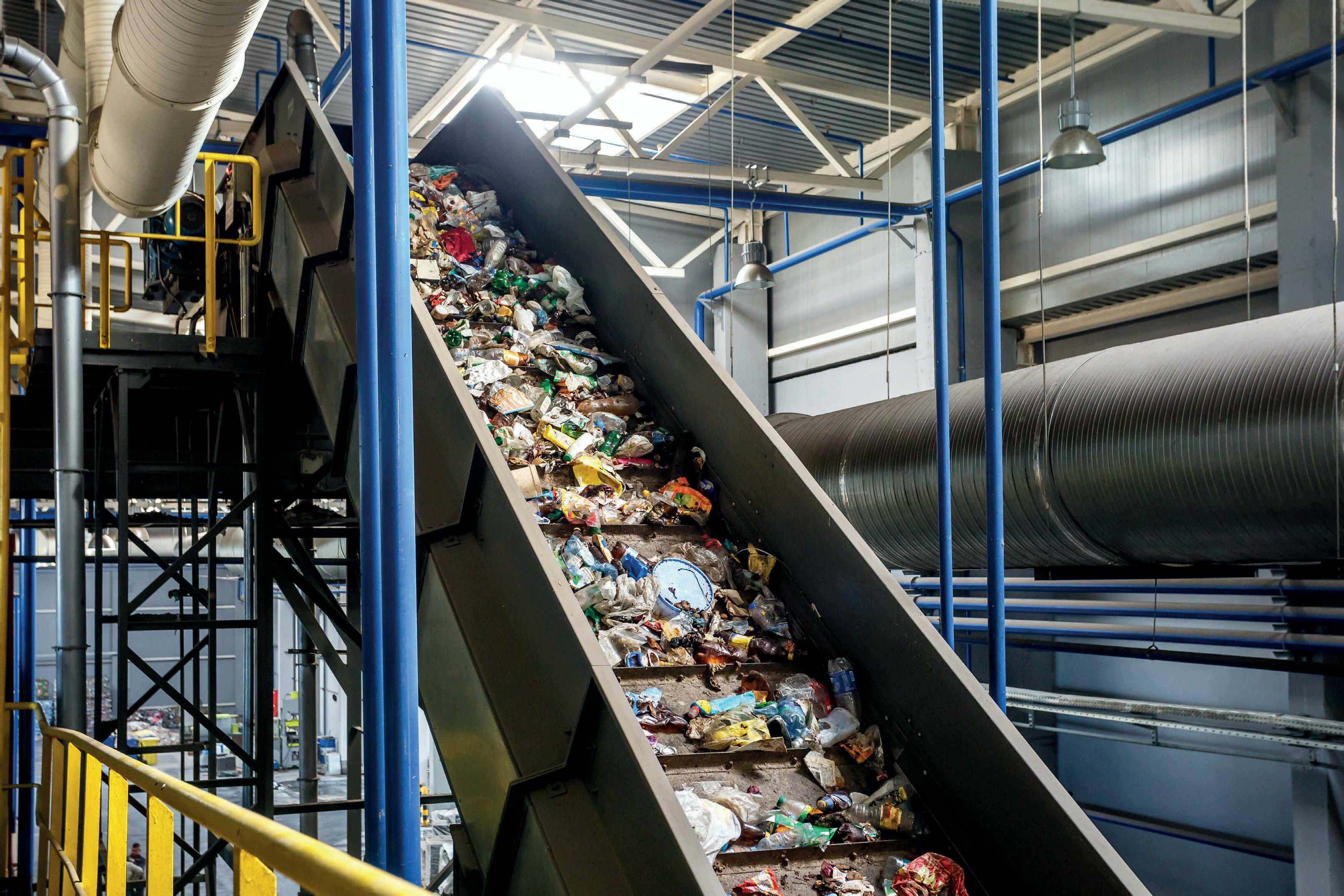
AUSTRALIA’S NEW ONLINE PORTAL DEDICATED TO BUYING, SELLING AND HIRING WASTE AND RESOURCE RECOVERY EQUIPMENT. Whether it’s a skip loader, shredder, wash plant or excavator, this is your onestop-shop for buying, selling and hiring a variety of machinery and equipment from both dealers and private sellers. Advertise on Inside Waste Marketplace to reach the right buyer. For advertising opportunities, contact ben.coleman@primecreative.com.au or call 0466 545 664 BUY. SELL. HIRE. Scan the QR code to find out more. MARKETPL ACE
Waste industry ‘eye-opener’ for young consultant
A COMMON theme for those who start out in the waste industry is that it was never their intention to do so in the first place. This was the case for Amy Alessi who works for InSitu Advisory as an environmental consultant. That doesn’t mean that her Bachelor of Science degree didn’t come in handy when she decided to take a role at the company once she graduated. And it was after working in the industry for 12 months, Alessi decided to apply for her master’s degree in environmental engineering management to expand her horizons in the waste industry. Like any job, the learning curve has been steep.

“It’s a very eye-opening industry; I realised quickly how much I didn’t know about current waste management systems in Australia,” Alessi said. “There is a lot to improve on and there’s a lot of research that needs to be undertaken. But it is rewarding at the end of the day.”
Working in a consultancy has varied and interesting aspects to the job. This includes helping clients with applications for resource recovery facilities, as well as working with the management teams of those companies as they go through the public consultation process. Alessi also liaises with external consultancies and assists with getting the compliance documents that help deliver the project.
She has also been involved in creating concept designs for environmental studies associated with projects. With that application process, she and the team she works with ensure that any environmental impacts are mitigated and managed. Another aspect of the job is to carry out commercial, environmental, and regulatory waste and resource recovery research.
“We did a big study for the Sydney metropolitan area and then also the wider New South Wales region, which was very interesting,” she said. “We looked at all the different MRFs, landfills – any sort of waste and resource recovery – within the Sydney metropolitan area and where all the waste was going. I enjoyed that job.”
Alessi also does community and regulatory consultations and engagement for resource recovery developments. Then there is the bread and butter of most consultancies within the industry such as waste audits and reporting, as well as field work that looks into quality assurance.
Knowledge is something that is growing every month. Preconceptions
of what it means to work in the waste industry changed almost immediately after Alessi started at InSitu Advisory.
“I didn’t really know that much when I started out,” she said. “I was your normal, everyday person that would put my waste into the red, green, yellow bins, and off it went. Then when you end up going to a site and you can see all the waste in front of you, you just think, ‘Oh, my gosh, I hope everyone’s doing the right thing’, because that’s what it really comes down to, as well as how a site is managed.
“I’ve seen it from the site point of view and then with what I’m studying now, I’m doing a lot more research in terms of how this waste is being managed.”
What has been an eye-opener for Alessi is the intricacies involved in making sure targets are met when it comes to recycling and reuse of the various waste streams.
“All these different goals that Australia is trying to achieve – such as transitioning to a circular economy –does make you a little bit concerned with how we are going to reach these targets, especially with statistics rising with all our waste streams,” she said.
Alessi acknowledges that there is still a lot to do in the industry. She thinks she will be in the industry for the long run, and has her mind set on a few aspects that she believes need addressing.
“I feel like there’s going to be a lot of work over the next few years in the waste industry,” she said. “I just don’t see how some of these issues are going to be solved in a timely manner. No one’s going to click their fingers and it’s going to be fixed.
“I’m looking forward to broadening my knowledge with regards to waste alternatives, or sustainable waste practices, and green technologies, hence why I’m doing my master’s in
Environmental Engineering. I think we need more ways – definitely more options – with regards to dealing with waste.
“The biggest issue is the need for more markets for recycled materials. That’s one of the biggest gaps within the circular economy – we need more options for where this recycled material can go.”
And what is Alessi’s favourite part of the industry? Resource recovery, but more specifically waste-to-energy.
“For all my university projects I get to do, I try and pick any technology that has anything to do with waste-to-energy, because I just want to learn more about that area,” she said.
While Alessi has been in the industry for a short time, already she realises that the government needs to do more, and the industry needs to engage and collaborate.
“There definitely needs to be more funding, more guidance and a bit more support as the responsibility for reaching goals gets funnelled down,” she said. “Each state works differently, but in order to achieve that transition to a circular economy, we need to be working together.”
As mentioned, not many people studying for a degree think about going into the waste industry after graduating. Alessi has found the industry is a difficult subject to talk about with those who don’t work in it. Could it be due for an overhaul in terms of trying to change the perception of what the industry is about?
“It’s going to be a growing industry but it’s hard to talk about it, because it’s not a very popular topic with anyone,” Alessi said. “I feel like there needs to be more marketing within this industry because people do need to become more educated. I would be supportive of anyone who would want to get into it.”
One thing Alessi has found in the short time she has been part of the industry is that it is never boring and there is plenty to do.
“I learned pretty quickly how broad and big the industry is,” she said. “I guess one of the motivators is that you want to make a change as well; you want to see improvement. However, it can be challenging at times.
“A lot of people do work together in order to achieve some really interesting projects that will help with sustainability and circular economy goals. That’s how I see the bigger picture.”
Daily news updates at www.insidewaste.com.au FEBRUARY/MARCH 2023 INSIDEWASTE 57 // Young Professional
More markets for products made from recycled materials is one of the issues affecting the industry.
Supposition, suspicion and soft plastics
 HI SIR
HI SIR
My goodness, I thought the red tops back in blighty were over the top. Some of the mastheads down here are even worse. Talk about exaggeration, hyperbole, and balderdash. Almost as bad as Cardigan and the Charge of the Light Brigade – miscommunication at its worse.
I suppose you’re wondering what has got my dandy up. What has piqued my uncouth reaction to the fourth estate down here? Rubbish, sir, as it always is. In this case, soft plastics. You know that troublesome piece of rubbish that ends up strangling turtles in the Maldives, blocking drains and waterways, and takes a few hundred years before it breaks down back to its natural ingredient.
Now before you roll your eyes back into your follicle-challenged cranium, don’t be too cynical about what is happening down here, and think to yourself, “Oh, God, JB is on one of his greenie rants again”. You see, a few years ago, a stay-at-home mum got sick to death of hanging around waiting for bureaucracy to weave its bloated magic wand when it came to soft plastics and decided to start REDcycle. The initiative encompassed collecting all soft plastics in one place and then sending them to be reprocessed into new products that could be useful. It turned out to be a great way to keep these plastics out of landfill.
Soon she had the two biggest supermarket retailers – Woolworths (not to be confused with our friends in Blighty) and Coles on board. It seemed like an ideal fit. Until early November 2022, when the animal excrement hit the fan. Turns out the program had been stockpiling thousands of tonnes of the damned stuff in warehouses because there was no way of processing it.
Yours truly had a whiff of trouble when attending the Waste Expo in Melbourne a week earlier. One canny wastrel (my term for waste aficionados) told me it wasn’t adding up – the volume of soft plastics being collected didn’t equal the small amount coming out the other end. I initially dismissed his claim –more fool I!
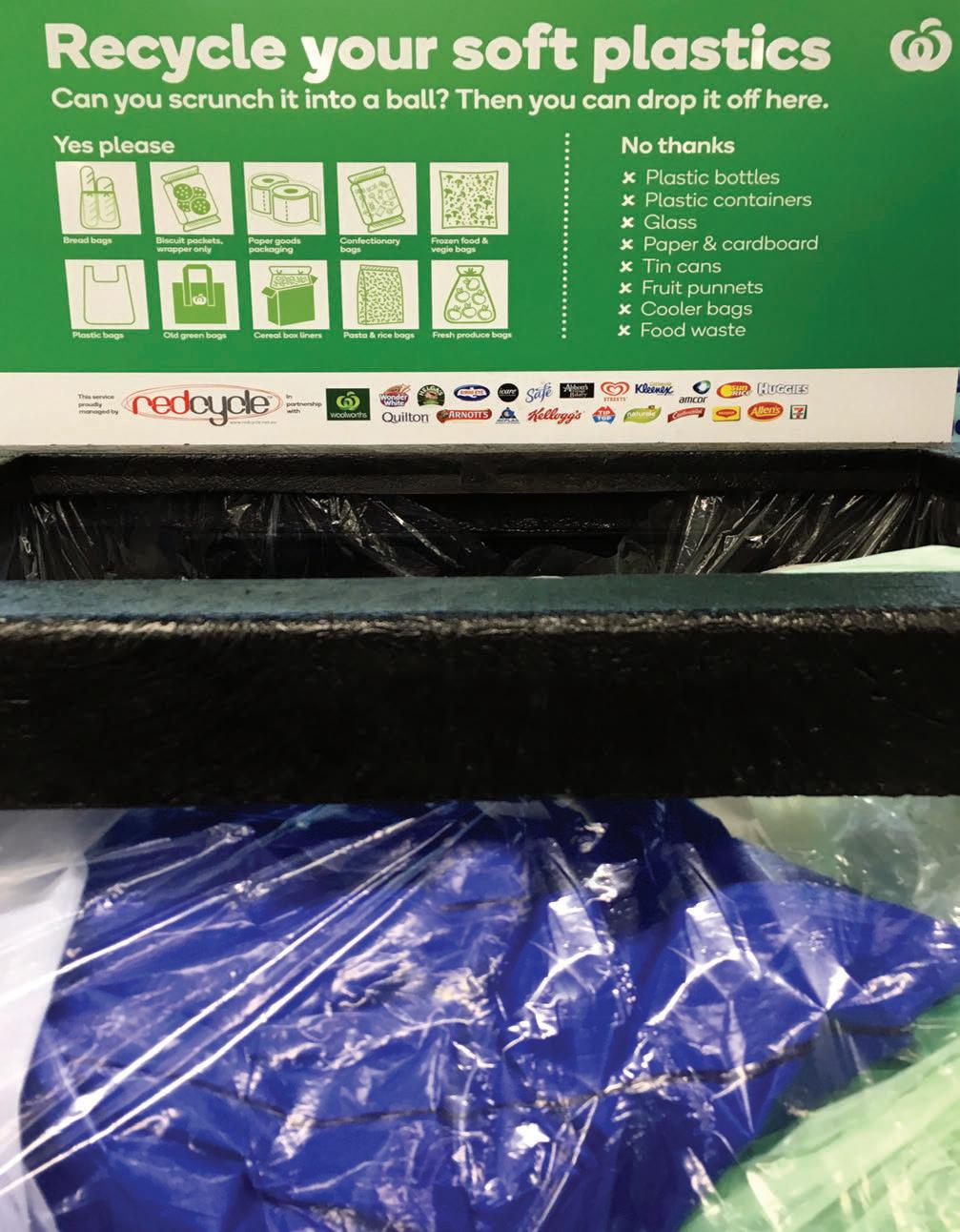
Anyway, getting back to my original rant. Perception is everything. And it’d be nice if, just for once – for one teeny weeny, tiny, itsy bitsy once, our populist fourth estate cousins could report what is going on instead of spouting sensationalist headlines. “Now hold on,
JB, old boy,” I hear you say. “What did they say that was incorrect?” To which I would say using words like ‘collapse’ and ‘dumping’, which are undoubtedly emotive and don’t tell the true picture. While the situation isn’t ideal, I believe the word used by REDcycle was ‘paused’. Big difference. I wonder how much research was done. Do the writers know that there are a couple of
businesses coming online in the next 1218 months that will need 10s of 1000s of tonnes of feedstock, which will make the amount found in those warehouses seem minuscule?
But I guess the most ‘interesting’ part of the whole episode is that there is an inference by other third parties that somehow the program was trying to keep all the warehouses under wraps
and surreptitiously tried to hide it from the authorities. And who did these publications quote from REDcycle in their story? Um, nobody. Seems like a lot of supposition to me.
Anyway, that is my rant over. I look forward to what the new year brings, and all the best to our friends, wherever they may be.
Daily news updates at www.insidewaste.com.au 58 INSIDEWASTE FEBRUARY/MARCH 2023 Wasted Space //
JB
London, Oslo and Dublin Rely on Our Energy-from-Waste Technology.
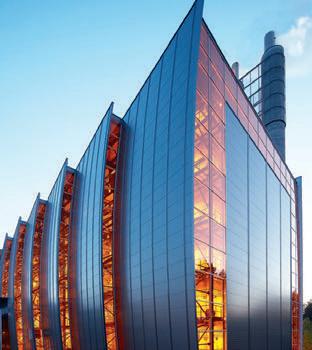
London, United Kingdom
So Does Perth.
Rockingham, Australia
Dublin, Ireland
Our solutions are based on efficient and environmentally sound in-house technology, and cover the entire life cycle of an Energy-from-Waste facility. Our proven technologies have been part of more than 700 plants worldwide. As a global leader in energy from waste we are proud to be able to say: We deliver. Check our references.

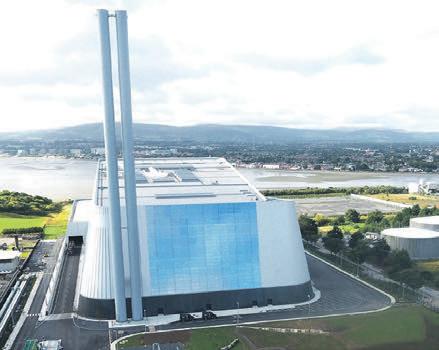
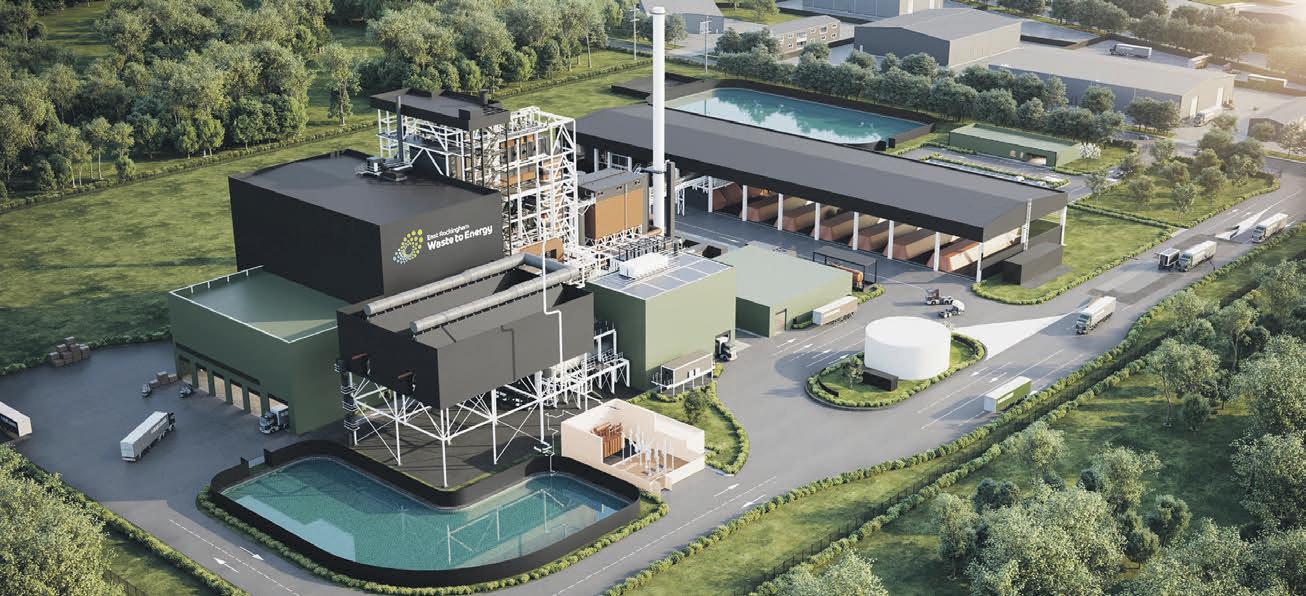
Waste is our Energy

www.hz-inova.com
Oslo, Norway
DELIVERING A GREENER FUTURE
Komptech CEA is a leading supplier of machinery and systems for the treatment of solid waste through mechanical and mechanical biological treatments, as well as the treatment of biomass as a renewable energy source. Komptech CEA is proud to provide innovative solutions for handling waste and biomass.

Komptech CEA’s extensive range of products cover all key processing steps in modern waste handling. At Komptech CEA the focus is always on innovative technology and solutions ensuring maximum benefit to the customer. Like to know more? why not speak to one of our team today?
SHREDDERS TROMMEL SCREENS STAR SCREENS WINDROW TURNERS


1300 788 757

komptechcea.com.au
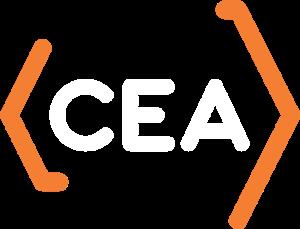
TERMINATOR
Where Function Meets Technology
A slow-running, single-shaft shredder suited to all types of waste.
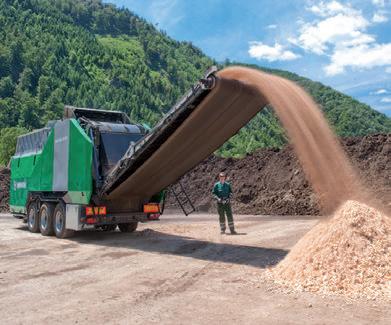


CRAMBO
Less Fuel, More Power
Ideal for shredding all types of wood and green cuttings.
TOPTURN X
The Ideal Combination of Performance and Design
With a sturdy frame, powerful hydraulics and large drum, the Topturn X is ready to handle any work situation.
MULTI STAR
Screening with a Star
Makes waste wood and biomass processing highly efficient.
NEMUS
Robust and Reliable
Combining the practice-proven virtues of its predecessors with new solutions for even greater performance.
AXTOR
Shredding and Chipping Made Easy
One of the most versatile machines around for processing wood and green cuttings.






































































































 By Professor Edward Kosior
By Professor Edward Kosior























 TAS-150
TPS-120
TAS-150
TPS-120











 HI SIR
HI SIR












